COVID-19 pandemic in Japan
The COVID-19 pandemic in Japan is part of the worldwide pandemic of coronavirus disease 2019 (COVID-19) caused by severe acute respiratory syndrome coronavirus 2 (SARS-CoV-2). The virus was first confirmed to have spread to Japan in January 2020.[2] Definitively reported cases have been recorded in each of the 47 prefectures except for Iwate. The country has seen over 17,000 confirmed cases.
| COVID-19 pandemic in Japan | |
|---|---|
 Confirmed cases per 100,000 residents by prefecture[lower-alpha 1] | |
| Disease | COVID-19 |
| Virus strain | SARS-CoV-2 |
| Location | Japan |
| First outbreak | Wuhan, Hubei, China |
| Index case | Kanagawa Prefecture |
| Arrival date | 16 January 2020 (5 months, 1 week and 5 days) |
| Confirmed cases | 17,740[1](as of 28 June 2020) |
| Active cases | 797[1](as of 28 June 2020) |
| Recovered | 16,008[1](as of 28 June 2020) |
Deaths | 935[1](as of 28 June 2020) |
Japan’s death rate per capita from coronavirus is one of the lowest in the developed world, more than 70 times lower than the UK and 40 times lower than the USA. Scientists have asked themselves what it is about Japan’s response to the coronavirus that has enabled such a low death rate. The government response, a milder strain of the virus, social effect caused by community immunity, cultural habits such as bowing etiquette or wearing face masks, hand washing with sanitizing equipment, a protective genetic trait, and a relative immunity conferred by the mandatory BCG tuberculosis vaccine[3] have all been proposed as possible explanations.
The Japanese government confirmed its first outbreak of the coronavirus disease 2019 (COVID-19) in the country on 16 January 2020 in a resident of Kanagawa Prefecture who had returned from Wuhan, China. This was followed by a second outbreak that was introduced by travelling passengers and returnees from Europe and the United States between 11 March and 23 March.[4] According to the National Institute of Infectious Diseases, the majority of viruses spreading in Japan derive from the European type while those of the Wuhan type have been disappearing since March.[5][6]
The Japanese government has adopted various measures to prevent and mitigate the outbreak. On 30 January, Prime Minister Shinzo Abe established a national task force to oversee the government's response to the pandemic.[7] On 27 February, he requested the temporary closure of all Japanese elementary, junior high, and high schools until early April.[8] As the pandemic became a concern for the 2020 Summer Olympics, the Japanese government and the International Olympic Committee negotiated its postponement until 2021, although complete cancellation is not out of the question.[9]
On 7 April, Abe proclaimed a one-month state of emergency for Tokyo and the prefectures of Kanagawa, Saitama, Chiba, Osaka, Hyogo, and Fukuoka.[10] On 16 April, the declaration was extended to the rest of the country for an indefinite period.[11]
Some medical professionals and media outlets have criticized the Japanese government for under-testing for COVID-19.[12][13][14]
On 14 May, Japan released the registry to relieve the nationwide state of emergency COVID-19 in 39 of Japan's 47 prefectures or 54% of Japan's population, but it still applied in Tokyo, Osaka, Kyoto, Hyogo, Hokkaido, Chiba, Kanagawa, and Saitama.[15][16]
On 21 May, Japan ended the state of emergency in Osaka, Kyoto, and Hyogo prefectures.[17][18]
On 25 May, Japan ended the state of emergency in all of Japan.[19]
Timeline
The 2020 coronavirus pandemic in Japan can be divided into two waves based on the genome sequence of the country's COVID-19 virus.[20][5][6][21] The National Institute of Infectious Diseases (NIID) has determined from its genetic research that the COVID-19 variant of the first wave is derived from the Wuhan type that is prevalent in patients from China and East Asia. After entering Japan in January through travellers and returnees from China, the virus resulted in numerous infection clusters across the country before moving towards its disappearance in March. Japanese medical surveillance confirmed its first case of the virus on 16 January in a resident of Kanagawa Prefecture who had returned from Wuhan.[22][23]
The first wave was followed by a second one that originated from a COVID-19 variant of the European type that is traced back to early patients from France, Italy, Sweden, and the United Kingdom. Japanese medical surveillance detected the second wave on 26 March when the government's expert panel concluded the likelihood of a new outbreak caused by travellers and returnees from Europe and the United States between 11 March and 23 March.[4] The NIID has established that the majority of viruses spreading in Japan since March is the European type. This has led it to conclude that the data "strongly suggests" that the Japanese government has succeeded in containing the Wuhan variant and that it is the European variant that is spreading across the country.[24]
First wave (January–March)
January
On 16 January, Kanagawa Prefecture confirmed its first case of COVID-19 when a man in his 30s who had previously travelled to Wuhan tested positive for it, marking the first confirmed case in Japan.[23][22]
On 24 January, Tokyo Prefecture confirmed its first case of COVID-19.[25] The Japanese government announced that it would provide repatriation services for all Japanese citizens in Hubei Province on that same day. Officials negotiated with Chinese authorities to dispatch five chartered flights to Wuhan from 29 January to 17 February.[26]
On 27 January, Shinzo Abe designated the novel coronavirus as an "designated infectious disease" under the Infectious Diseases Control Law. He also designated the disease as a "quarantinable infectious disease" under the Quarantine Act.[27]
On 30 January, Abe announced the establishment of a national task force to oversee the government's countermeasures against the novel coronavirus.[28][7]
On 28 January, Nara Prefecture and Hokkaido Prefecture confirmed their first cases of COVID-19.[29][30] On 29 January, Osaka Prefecture reported its first case on January 29,[31] followed by Mie Prefecture and Kyoto Prefecture on 30 January,[32][33] and Chiba Prefecture on 31 January.[34]
February
On 1 February, a passenger of the Diamond Princess cruise ship who had disembarked in Hong Kong on 25 January tested positive for COVID-19.[35] The ship received quarantine orders from the Japanese government in Naha on that same day.[35]
On 3 February, the Japanese government announced entry restrictions for all foreign citizens who had had a travel history to and from Hubei Province or had a Chinese passport issued from there.[36] The Diamond Princess arrived at Yokohama and was placed under quarantine by the Japanese government on the same day.[37][38]
On 5 February, the Japanese government announced that several passengers of the Diamond Princess had tested positive for COVID-19.[39][40]
On 12 February, the Japanese government announced entry restrictions for all foreign citizens who had a travel history to and from Zhejiang Province or had a Chinese passport issued from there.[41]
On 13 February, Wakayama Prefecture confirmed its first case of COVID-19. A woman in her 80s died in Kanagawa Prefecture on that same day, marking the first death from COVID-19 in Japan.[42][43]
On 14 February, Okinawa Prefecture confirmed its first case of COVID-19.[44] Aichi Prefecture reported its first case on 15 February.[45]
On 19 February, the Japanese government completed testing 3,011 passengers on the Diamond Princess.[46]
On 20 February, Saitama Prefecture and Fukuoka Prefecture confirmed their first cases of COVID-19.[47] Ishikawa Prefecture and Kumamoto Prefecture reported their first cases on 21 February, followed by Tochigi Prefecture on 22 February, Nagano Prefecture and Tokushima Prefecture on 25 February, and Gifu Prefecture on 26 February.[48]
On 21 February, the Japanese government began disembarking passengers from the Diamond Princess.[49]
On 23 February, the US State Department raised its travel alert for Japan to level 2 on the four-level advisory scale due to the "sustained community spread" of COVID-19 within the country.[50]
.jpg)
On 27 February, Shinzo Abe requested the closure of all elementary, junior high, and high schools from 2 March to the end of spring vacations, which usually conclude in early April.[8][51]
On 28 February, Hokkaido Prefecture declared a state of emergency over the coronavirus and requested its residents to refrain from going outside.[52] Shizuoka Prefecture confirmed its first case of COVID-19 on that same day.[53]
On 29 February, Miyagi Prefecture, Kochi Prefecture, and Niigata Prefecture confirmed their first cases of COVID-19.[54]
March
On 1 March, Hyogo Prefecture confirmed its first case of COVID-19. Ehime Prefecture reported its first case on 2 March, followed by Oita Prefecture on 3 March, Yamaguchi Prefecture and Miyazaki Prefecture on 4 March, Shiga Prefecture on 5 March, Akita Prefecture and Yamanashi Prefecture on 6 March, and Hiroshima Prefecture, and Gunma Prefecture on 7 March.
On 5 March, Japan announced quarantine restrictions for all visitors arriving from China and South Korea.[55] On 6 March, the South Korean government protested the restrictions by suspending visas for all Japanese citizens travelling to South Korea.[56]
On 10 March, the Japanese government categorized the 2020 coronavirus pandemic in Japan as a historical emergency situation.[57][58][59]
On 13 March, Saga Prefecture confirmed its first case of COVID-19.[60] Nagasaki Prefecture reported its first case on 14 March,[61] followed by Ibaraki Prefecture[62] and Kagawa Prefecture[63] on 17 March, and Fukui Prefecture on 18 March.[64]
On 16 March, the Japanese government announced it would expand entry restrictions to all foreign citizens arriving from four additional countries. The restrictions applied to three areas in Spain (including Madrid), four areas in Italy (including the northern region of Liguria), Switzerland's Ticino region, and all of Iceland.[65]
On 19 March, the governors of Osaka and Hyogo prefectures asked residents to avoid nonessential travel between the two neighbouring prefectures over the three-day weekend starting on 20 March to contain the spread of the coronavirus.[66][67] The three-week state of emergency in Hokkaido was lifted on that same day.[68]
On 22 March, Okayama Prefecture confirmed its first case of COVID-19 and requested its residents to refrain from visiting the neighboring prefectures of Hyogo and Osaka.[69][70] Aomori Prefecture reported its first case on 23 March,[71] followed by Gifu Prefecture on 26 March.[72]
On 23 March, Tokyo governor Yuriko Koike warned residents that a lockdown might be the only way against the disease if infections were to surge in Tokyo as she urged people to cooperate with government countermeasures.[73][74][75]
On 24 March, the International Olympic Committee (IOC) and Tokyo Organising Committee of the Olympic and Paralympic Games announced a one-year postponement of the 2020 Summer Olympics.[76]
Second wave (March–present)
March
On 25 March, MHLW officials announced 71 people tested positive,[77] including 41 cases in Tokyo.[78] Governor Yuriko Koike held an emergency press conference in the late afternoon. She said that "the current situation is a serious situation where the number of infected people may explode." Koike also asked "if possible, work at home and refrain from going out at night as much as possible on weekdays." Koike asked people returning from abroad to refrain from going out for 14 days.[79] The request from the governor appears to have punctured the relaxed mood in Tokyo. Panic buying began to trend on Twitter, with users posting pictures of empty shelves and lines outside supermarkets. At the Don Quijote store in Nakameguro, customers hurried to grab instant noodles and canned goods immediately following Koike's late-evening speech.[80]
On 26 March, several governors of the Greater Tokyo Area, including Chiba, Kanagawa, Saitama, and Yamanashi, strongly urged residents to follow stay-at-home requests to prevent a surge in infections that could cause a "critical phase".[81] In Tokyo, residents were asked to work from home and refrain from going out at night and on the weekend.[82]
On 27 March, MHLW officials announced 112 people had tested positive in a single day, including three Hanshin Tigers professional baseball players.[83][84]
On 28 March, Abe held an hour-long press briefing about the economic measures being prepared by the Japanese government[85][86] amid considerable concerns of an "explosive spread of overflowing infections", which was creating regional self-isolation requests around Japan, including in Tokyo, Osaka, Hyogo, and Aichi.[87] Abe's wife became the centre of controversy when she was accused of attending a hanami party during the pandemic. Abe denied the claim and said she merely took pictures in front of some cherry trees after going to a restaurant.[88]
On 29 March, MHLW officials announced 194 people had tested positive for the virus, including 58 people at a facility for the disabled in Tōnoshō, Chiba Prefecture, and 63 in Tokyo.[89] However, a Tokyo municipal government official acknowledged by the end of the day that 63 people in the city tested positive for COVID-19 on 28 March and that a record number of 68 people tested positive on 29 March.[90] It was also revealed that Tokyo now had 430 confirmed cases of COVID-19, the largest among Japan's 47 prefectures.[90]
On 30 March, it was announced that tarento and comedian Ken Shimura had died at the age of 70 from complications of a COVID-19 infection. This marked the first major death from the pandemic in Japan's entertainment industry.[91][92][93]
On 30 March, Fukuoka City announced confirmed cases in a woman in her 20s and her infant daughter.[94] On 30 March, Toyama prefecture announced its first case,[95] and a Kyoto government official announced that the Kyoto Sangyo University had undergone "a cluster of infections"—including two students who had recently returned from travel to Europe.[96][97][98]
By 31 March, calls were being made for Abe to declare a state of emergency.[99][100] However, Abe and Chief Cabinet Secretary Suga denied that a state of emergency was immediately necessary.[101]
April
.jpg)
On 3 April, Japan expanded its entry ban, effectively barring entrance to the country for visitors from 73 countries and regions.[102]
.jpg)
On 7 April, Abe proclaimed a state of emergency from 8 April to 6 May for Tokyo and the prefectures of Kanagawa, Saitama, Chiba, Osaka, Hyogo and Fukuoka. He also said there would be no lockdown like in other countries, and that public transportation and other services needed to keep the economy and society going would be maintained as much as possible.[103] This was the first emergency declaration in Japan.[104][105] Abe also stated that the pandemic had created the nation's greatest economic crisis since the end of World War II.[11]
On 9 April, Kiminobu Okada (岡田公伸), an executive of Mainichi Broadcasting System in Osaka, died due to coronavirus in Nishinomiya.[106][107]
Narita International Airport closed one of its two runways on 12 April due to an 85 percent reduction in traffic caused by the virus.[108][109]
A second wave of infections hit Hokkaido, prompting the prefectural government to declare a second state of emergency that closed schools and that asked residents to avoid non-essential trips.[68]
On 16 April, the Japanese government expanded the state of emergency to include all 47 prefectures in Japan.[110] The government also announced a plan to give 100,000 yen to every registered resident of Japan.[111]
On 19 April, first coronavirus death in Chūgoku region was reported due to disease outbreak of COVID-19 in Hiroshima Prefecture.[112]
On 20 April, according to the Ministry of Internal Affairs and Communications, 25 people died in a single day, the highest number of daily nationwide confirmed fatalities.[113]
On 21 April, former chairman of Omron Yoshio Tateishi (立石義雄) died due to COVID-19 in Kyoto, according to the Omron website.[114][115]
On 23 April, 29 persons nationwide were confirmed to have died, including actress Kumiko Okae (岡江久美子)[116][117][118] and actor Shu Wada (和田周), according to a JMIAC confirmed report.[119][120]
According to a National Police Agency of Japan confirmed report, 73 police officers had tested positive since February, and there were an additional 15 confirmed deaths from COVID-19 from March found in people who had died outside hospitals, mainly most of people who were homeless and had been tested after death due to limited testing.[121]
On 27 April, minister Yasutoshi Nishimura was criticized for getting tested for the virus before other people who were showing symptoms. He took the test after a person in the response team he is part of tested positive for the virus, though he claimed to have not been in direct contact with the infected person.[122]
On 30 April, PM Abe announced on Thursday that Japanese authorities are struggling to increase testing to those suspected of being infected with coronavirus.[123]
May
On 1 May, smaller towns and villages began distributing the 100,000 yen stimulus payment to residents. Larger municipalities are expected to follow suit within the next two months.[124]
On 3 May, at the event held by the Japanese conference, Prime Minister Abe announced through a video that he intends to revise Japan's peace constitution in order to deal with the resolute infectious disease.[125][126][127] On this topic, the Constitutional Democratic Party leader Yukio Edano underscored Japan has the basic law on disaster management that also restricts private rights during the time of emergency and allows authorities to implement essential measures, saying the law can be applied in efforts to contain the coronavirus.[125][127] At a news conference on Friday, Democratic Party for the People leader Yuichiro Tamaki expressed that even after the coronavirus situation has calmed down, the constitutional amendment can proceed in a quiet environment.[126] Komeito, the LDP ’s coalition partner, is also cautious about hasty talks on revising the Constitution. “It ’s important to hold discussions on constitutional issues in a calm manner,” Komeito leader Natsuo Yamaguchi said on Thursday.[126]
On 4 May, the Japanese government decided to extend the nationwide state of emergency established in April until the end of May.[128] The prime minister said the number of new infections have slowed in recent days, but not enough to lift the state of emergency.[129] The Japanese government urged citizens in Japan to adopt a "new lifestyle" for a protracted fight against coronavirus, even after society begins to shift back to its normal state. The prime minister also stated that the government will reassess the situation after a meeting with members of its expert panel around May 14.[130]
As of 6 May, before Governor Hirofumi Yoshimura announced his own standards for Osaka Prefecture, which is named as "Osaka model", he expressed his desire for the Japanese government to clearly describe the requirements to lift the state of emergency.[131][132] Later, Minister Nishimura said that the comments were somewhat confusing and that he would set standards later.[131][132] Later, Yoshimura changed the critical tone of the remarks and apologize to the Minister Nishimura, on Twitter.[132] However, he expressed his anxiety and disappointment with the government, strongly stating that he would reveal his beliefs as a politician.[132]
On 7 May, schools in the lightly affected prefectures of Aomori and Tottori were reopened after closing following the nationwide emergency declaration.[133]
On 8 May, The Japanese health ministry on Friday relaxed its guidelines for giving coronavirus tests to people who have developed a symptom of infection, scrapping the rigid fever rule which has been criticized for denying many potential patients access to the tests.[134] At his May 8 news conference, health minister Katsunobu Kato explained that various directives were issued to prefectural governments about the guidelines after complaints about the difficulty in receiving a PCR test.[135]
The Tōhoku region had its first reported death due to the virus on 9 May after a man in his eighties from Miyagi Prefecture died.[136]
On 9 May, Economic and fiscal policy minister Yasutoshi Nishimura said that the government may lift the emergency for some prefectures before its expiration.[137] Later on 10 May, Health, Labor and Welfare Minister Kato Katsunobu referred to employment subsidies for businesses that do not fire their employees despite a drop in sales.[138]
On 11 May, Japan's Ministry of Health, Labour and Welfare announced plans to approve a COVID-19 Antigen Test Kit that produces results more quickly than the current PCR test.[139][140] On that same day, Yuriko Koike revealed that there was a miscount of confirmed infection which led to the inaccurate statistics falsely, as there were overlapping figures gathered during the overloaded paperwork.[141]
In the midst of this, criticism and concern are growing as there is not enough discussion about increasing the supply of the coronavirus test, and the issue of the extension of the retirement age of the prosecutor Kurokawa is being led by the Abe Cabinet.[142][143][144] Yukio Edano insisted that it was not right for the Japanese government to push the bill through turmoil during a disaster like a thief in a fire scene.[145] A few days later, Japanese Government and Abe Cabinet declared that they would rescind the legal change of prosecutor's retirement.[146][147][148]
On 14 May, Japanese government officials and PM Shinzo Abe declared that they had decided to suspend the emergency of 39 prefectures, except for 4 prefectures in Kanto, 3 prefectures in Kinki, and Hokkaido, which are feared of collapse of medical system.[15][16] At the press conference, Prime Minister Abe urged to be vigilant even if the emergency was lifted, citing examples from South Korea, Germany, and Singapore as comparison targets.[149][150] It was the day after the news was reported widely that a sumo wrestler in his 20s died after suffering from a viral infection for a month.[151][152]
On 18 May, it was officially reported around the global market that Japan's economy officially enters recession with 'Much worse' expected from coronavirus for first time since 2015.[153][154]
On 21 May, the state of emergency is lifted in 3 prefectures in the Kinki region after they had cleared the threshold of having new infections below 0.5 per 100,000 people in the past week, resulting a total of 42 out of the 47 prefectures to be out of the state of emergency.[155]
On 24 May, Fukuoka Prefecture announced a total of four confirmed cases, including three infected cases related to Kitakyushu City.[156][157]
On 25 May, PM Shinzo Abe has announced he's lifting the government's emergency declaration for the five prefectures where it's still in place.[158]
On 28 May, a 117.1 trillion yen relief package was approved by Abe and his cabinet. The purpose of the package is to provide financial relief for companies and individuals that have been struggling due to the impact of the virus.[159]
On 28 May, the number of infected people in Kitakyushu has risen to 22 in the past 5 days, and the infection route of 17 of them is unknown.[160]
On 30 May, in Kitakyushu City, 69 people have been confirmed to have been infected in 7 days from the 23rd to the 29th of this month, and the infection route of 27 of them is unknown.[161]
As of 31 May, Kitakyushu declared that they decided to close the public facilities around the city due to prevention of speedy spread of disease.[162][163]
On 31 May, City officials confirmed that Twelve people including six elementary and junior high school children tested positive for the novel coronavirus in this southwestern Japan city where infections are continuing to spread.[164][165]
June
On 2 June, Tokyo Gov. Yuriko Koike issued a warning Tuesday amid signs of a possible resurgence of coronavirus infections, as 34 cases were newly reported in the Japanese capital.[166][167]
On 3 June, Two Yomiuri Giants players have tested positive for the new coronavirus, casting a shadow over Nippon Professional Baseball's plan to start the 2020 season on June 19.[168][169]
On 5 June, Japanese electronics giants Hitachi Ltd. and Toshiba Corp. said that they would jointly set up a facility with Fujirebio to produce antigen-testing kits for the coronavirus.[170][171]
As of 6 June, Japanese economic revitalization minister Yasutoshi Nishimura said that he would hold talks with Tokyo Governor Yuriko Koike on Sunday to discuss how to curb rising infections in Tokyo's nightlife districts while preventing the spread of the virus among young people and in nightlife districts.[172][173]
As of 8 June, the lack of leadership has led to a decrease in the approval ratings of Prime Minister Abe, and it is reported that Secretary General Toshihiro Nikai, who had a sense of distance from Senator Kishida, is in contact with former secretary Ishiba to recreate the Liberal Democratic Party's regime.[174][175][176]
On 9 June, it was reported that Hosts forced to work to protect the livelihoods of employees despite virus risk even nightlife districts demonized over infection fears while grappling with virus impacts, because lack of financial support from government lead some night workers to work for their daily living, which could become political problem.[177][178][179] Some experts expressed that there could be ponderous epidemic in Japan before end of June.[180][181]
On 10 June, Organizers of the postponed Tokyo Games said Wednesday they have agreed with the International Olympic Committee to hold a "simplified" games next summer to ensure safety from the coronavirus and reduce the financial impact of the one-year delay.[182][183][184]
As of 11 June, The Tokyo metropolitan government on Thursday lifted its warning about a possible increase in the number of coronavirus infections in the capital, moving a step closer to a full resumption of economic and social activities in the capital.[185][186]
On 12 June, the organizing committee of the Tokyo Olympics and Paralympics confirmed on Friday that it has not yet reached agreements to use about 20 percent of the venues for the postponed games next year.[187] About 80% of the facilities needed for next year’s postponed Tokyo Olympics have been lined up, the president of the organizing committee commented on Friday.[188]
As of 12 June, Japan's health authorities reported 61 new cases of the coronavirus and three deaths on Friday.[189] Meanwhile, Japanese drugmaker Daiichi Sankyo Co. said Friday that they are aiming to launch a clinical study of a genetic vaccine for the new coronavirus around March 2021.[190]
As of 12 June, Japanese Authorities confirmed that they eased restrictions on returning after visiting outside of Japan due to humanitarian excuses such as calling of court, clinical treatment and family visits.[191]
As of 13 June, Tokyo’s nightlife is beginning to rebound, as the metropolitan government lifts another raft of restrictions. Venues that have been closed since early April at the government’s request because of the coronavirus will be opening their doors once more.[192] Operators of nightlife establishments were required to keep a record of their customers' names and contact information in sheets and requested to ensure social distancing rules as part of measures to contain the wide spread of the coronavirus, according to guidelines released by the government on Saturday.[193]
On 14 June, NHK reported that Japan's daily cases recorded 54 cases including 7 cases in Hokkaido, 18 case related nightlife employees in Shinjuku district.[194][195][196] As of 14 June, it was reported that Hokkaido has recorded 1170 total cases until 14 June.[197] Among those cases, 956 people completed treatment[197] and there are 736 people who have been counted as positively confirmed patients for the dignosed infection in Sapporo.[197] In Kitakyushu City, two new cases of new coronavirus infection were confirmed on the 14th.[198] It has been confirmed for three consecutive days in Kitakyushu City, and since the 23rd of last month, when infections have been confirmed one after another, the total number of confirmed infections has reached 154.[198] Of these people, 69 cases have no known spreading route of infection.[198]
As of 14 June, Japan's minister in charge of the nation's coronavirus response and the governor of Tokyo have agreed to cooperate on measures to curb the rising trend of coronavirus infections in the capital's nightlife districts.[199][200][196] Nishimura Yasutoshi and Tokyo Governor Koike Yuriko met on Sunday. The mayor of Tokyo's Shinjuku Ward, Yoshizumi Kenichi, joined the meeting. Shinjuku is home to the Kabukicho district and other nightlife hubs.[199][200][196]
As of 14 June, Business conditions at more than 20 percent of medical institutions in Japan have worsened due to the coronavirus pandemic, with doctors saying they have experienced dismissals, salary reductions and forced closures, according to a recent survey.[201][202] Asked how they have been affected, 10 percent said in response to multiple choice questions their working hours had been reduced due to being on standby at home and changes in consultation times, while 9 percent said their salary had been reduced.[201] The temporary closing of facilities or the consideration of such actions were each selected by 4 percent, while having workers laid off, being laid off themselves, or the contemplation of permanent closure were each selected by 1 percent of respondents.[201] Only 26 percent responded in March that they thought the virus would take "two to three years" to contain or "never," but it rose to 40 percent in April and 54 percent in May.[201]
Later at night of 14 June, NHK stations and Jiji press reported that Despite the Japanese government's efforts to tackle the new Coronavirus Infectious Disease, it was not calmed down, but rather showed signs of re-proliferation. It is the first time in Tokyo over 40 days since the 5th of last month that there are more than 40 new confirmed patients in Tokyo.[203][204] Looking at the distribution of 17,529 Japanese, Chinese travellers, and returning patients infected with hCoV-2019 causing COVID-19 in Japan, 5,544 people in Tokyo accounted for over 30% of the total, and a PCR test (genetic amplification test) to confirm the fact of hCoV-2019 causing COVID-19 infection last 10 days (preliminary figure) was held a day based on 7,333 cases.[203][204]
On 15 June, at least 72 new cases of coronavirus infection have been reported in 15 days a day in Japan. NHK reported that a total of 72 new confirmed persons, including 48 in Tokyo and 6 in Hokkaido and 1 in Kitakyushu, at 8:30 pm on the day.[205][206][207] Among Kanto's Tokyo, Hokkaido's Sapporo, Fukuoka's Kitakyushu being the center of the spread, Tokyo Governor Yuriko Koike who stopped 'Tokyo Alert' system in just 10 days on June 12 became being evaluated that she did not prepare to prevent the infection of Shinjuku Kabukicho.[208][209]
As of 17 June, Japan received an estimated 1,700 foreign travelers in May, an all-time low for the second consecutive month, amid the coronavirus pandemic, government data showed Wednesday. It is the eighth consecutive monthly decline, as travel restrictions were imposed globally amid the spread of the virus, according to the preliminary data.[210][211] Furthermore, Japan's exports and imports in May both posted the largest year-on-year drops in more than 10 years, reflecting rapidly weakened overseas demand as the coronavirus pandemic continued to slow economic activities globally, government data showed Wednesday. The goods trade deficit in May stood at 833.39 billion yen, marking the second straight month of red ink.[210][212]
As of 18 June, the Japanese public came out as the least satisfied with government support to businesses amid the pandemic in a six-nation survey, with only 11 percent of respondents agreeing that support is getting through to the firms that need it.[213] Meanwhile, due to complicated office procedures to confirm Japanese expatriates’ residency and prevent making duplicate payments, some fear it may take years to finish paying ¥100,000 per person to about 1.39 million Japanese living abroad.[214]
On 18 June, NHK stations and several online media agencies reported that it was confirmed 41 cases with 22 cases of unknown route in Tokyo, 70 people in Japan, including 1 death in Hokkaido and Fukuoka, although Cabinet and Government stated that they were ready to relieve some of the preventive limitations on Friday.[215][216]
On 19 June, Japanese Authorities relieved some of the preventive requirement against contagious transmission and released the transmission notification software for preparation of ponderous pandemic, which brought some doubt among people.[217][218] On the other hand, Japanese Baseball League started the competition, as notification for modification were already announced several days ago. In the midst of 19 June, Japanese popular clothing retailer Uniqlo promoted facial mask, which led parade of consumers trying to buy the products.[219][220]
As of 21 June, 56 new people were found infected with the new coronavirus.[221][222] 35 people were infected in Tokyo, exceeding 30 for 4 consecutive days.[221][222] Nine of them were found by a group inspection conducted by Shinjuku City at two host clubs.[221][222] Moreover, in Osaka Prefecture, infections were confirmed in three males and females in their 20s and 30s, who are believed to have had a cluster.[222] The total number of bar-related cases was 16.[222]
As of 24 June, it was revealed that 55 new cases of new coronavirus were confirmed in Tokyo on the 24th. It will be the highest after the government declares an emergency.[223][224] According to the Tokyo Metropolitan Government, the number of new infections per day will be 50 or more for the first time in a month and a half since May 5 (57) during the long holiday period. The total number of infected people in Tokyo was 5,895.[223] Approximately 20 of the 55 infected people are said to have undergone a group inspection conducted by Shinjuku City at restaurants and other places where entertainment is provided, and cases where infection was confirmed within the same staffing agency.[224]
As of 24 June, it has been confirmed for two consecutive days in Kitakyushu City, and the number of confirmed infections has increased to 167 since the 23rd of last month.[225]
On 25 June, it was confirmed that Japanese Government would abolish the Expert Meeting without any signals, although members of Expert Meeting were not notified and some lawmakers of opposition parties are demanding the explanation of sudden abolishing process.[226]
As of 25 June, The Tokyo Metropolitan Government said Thursday it had confirmed 48 new novel coronavirus infections, marking more than 40 cases daily for the second straight day.[227][228][229]
As of 26 June, Tokyo confirmed 54 new cases of infection with the novel coronavirus on Friday, Tokyo Gov. Yuriko Koike said, reporting more than 40 cases daily for the third day in a row.[230][231][232] Among them, there were 40 young people in their 20s and 30s, according to data prepared by local officials.[230] Although the spread of disease were under control since May 25th, it is 4 days in a row that there are over 30 cases confirmed positive for contract of disease.[231] Additionally, the daily number of new coronavirus cases reported in Japan on Friday topped 100 for the first time since May 9,[233][234][235] adding to signs that the epidemic is gaining strength since the country eased business and social restrictions.[233][234][235]
Government response
Phase 1: Containment
The initial response of the Japanese government to the COVID-19 outbreak was a policy of containment that focused on the repatriation of Japanese citizens from Wuhan, the point of origin of the pandemic, and the introduction of new border control regulations.[26]
On 24 January, Abe convened the Ministerial Meeting on Countermeasures Related to the Novel Coronavirus at the Prime Minister's Office with members of his Cabinet in response to a statement by the World Health Organization (WHO) confirming human-to-human transmission of the coronavirus. Abe announced that he would introduce appropriate countermeasures to the disease in coordination with the National Institute of Infectious Diseases (NIID).[236]
On 27 January, Abe designated the new coronavirus as an "infectious disease" under the Infectious Diseases Control Law (感染症の予防及び感染症の患者に対する医療に関する法律), which allows the government to order patients with COVID-19 to undergo hospitalization. He also designated the disease as a "quarantinable infectious disease" under the Quarantine Act, which allows the government to quarantine people suspected of infection and order them to undergo diagnosis and treatment.[237]
On 30 January, Abe announced the establishment of the "Novel Coronavirus Response Headquarters" (新型コロナウイルス感染症対策本部), which meets at the Prime Minister's Official Residence and is run by a task force led by Deputy Chief Cabinet Secretary for Crisis Management Okita Yoshiki.[28][7] The initial roster of the task force includes 36 high-ranking bureaucrats from several of the Ministries of Japan. The headquarters acts as the site of Abe's decision-making process on the country's virus countermeasures.
On 31 January, Abe announced that the government was prioritizing the repatriation of Japanese citizens from Hubei province. Officials negotiated with Chinese authorities to dispatch five chartered flights to Wuhan from 29 January to 17 February.[26]
On 1 February, the Japanese government enacted restrictions to deny entry to foreign citizens who had visited Hubei province within 14 days and to those with a Chinese passport issued from there.[238] On 12 February, it expanded those restrictions to anyone who had a recent travel history to and from Zhejiang province or had a Chinese passport issued from there.[41]
On 5 February, Abe invoked the Quarantine Act to place the cruise ship Diamond Princess under quarantine in Yokohama. Quarantine officers were dispatched to the ship to prevent the disembarkation of crew and passengers, and to escort infected patients to medical facilities.[239]
On 6 February, Abe invoked the Immigration Control and Refugee Act to deny entry to the cruise ship MS Westerdam from Hong Kong after one of its passengers tested positive for COVID-19.[240]
Reinforcement of medical service system
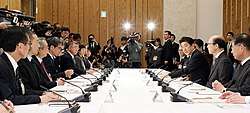
After the COVID-19 outbreak on the cruise ship Diamond Princess, the Japanese government shifted its focus from a containment policy to a prevention and treatment one because it anticipated increasing community spread within Japan. This policy prioritized the creation of a COVID-19 testing and consultation system based on the National Institute of Infectious Diseases (NIID) and the government's 83 existing municipal and prefectural public health institutions that is separate from the civilian hospital system. The new system handles the transfer of COVID-19 patients to mainstream medical facilities to facilitate patient flow, triage, and the management of limited testing kits on their behalf to prevent a rush of infected and uninfected patients from overwhelming healthcare providers and transmitting diseases to them. By regulating COVID-19 testing at the national level, the Abe Administration integrated the activities of the national government, local governments, medical professionals, business operators, and the public in treating the disease.
On 1 February, the Ministry of Health, Labour and Welfare instructed the municipal and prefectural governments to establish specialized COVID-19 consultation centres and outpatient wards at their local public health facilities within the first half of the month.[241] Such wards would provide medical examinations and testing for suspected carriers of the disease to protect general hospitals from infection.
On 5 February, Abe announced that the government would begin preparations to strengthen COVID-19 testing capabilities at the NIID and 83 municipal and prefectural public health institutions that are designated by the government as official testing sites. Without a uniform diagnosis kit for the disease, the government has relied on polymerase chain reaction (PCR) tests to check for infections. As few mainstream medical facilities in Japan can conduct PCR tests, Abe also promised to increase the number of institutions with such kits, including universities and private companies.[239]
On 12 February, Abe announced that the government would expand the scope of COVID-19 testing to include patients with symptoms based on the discretion of local governments. Previously, testing was restricted to those with a history of travelling to Hubei Province.[242][243] On the same day, the Ministry of Health and NIID contracted SRL Inc to handle PCR clinical laboratory testing.[244] Since then, the government has partnered with additional private companies to expand laboratory testing capabilities and to work towards the development of a rapid testing kit.[245]
On 14 February, Abe introduced the government's coronavirus consultation system to coordinate medical testing and responses with the public. The Ministry of Health, Labour and Welfare worked with local governments to establish 536 consultation centres (帰国者・接触者相談センター) that covered every prefecture within the country to provide citizens with instructions on how to receive COVID-19 testing and treatment. The general public needs to contact a consultation centre by phone to get tested at one of the government's specialized outpatient wards (帰国者・接触者外来).[246][247]
On 16 February, Abe convened the government's first Novel Coronavirus Expert Meeting (新型コロナウイルス感染症対策専門家会議) at the Prime Minister's Office to draft national guidelines for COVID-19 testing and treatment.[248] The meeting was chaired by Dr. Wakita Takaji, Director of the NIID, who brought together ten public health experts and medical professionals from across Japan to coordinate a response to the virus with Abe and the government's coronavirus task force in a roundtable format. The main concern of the Japanese medical establishment was overcrowding of hospitals by uninfected patients with light cold symptoms who believed that they had COVID-19. Medical representatives claimed that such a panic would strain medical resources and risk exposing those uninfected patients to the disease itself.[249][250]
On 17 February, the Ministry of Health, Labour, and Welfare released national guidelines for COVID-19 testing to each of the municipal and prefectural governments and their public health centres.[251][252] It instructed doctors and public health nurses who staff the consultation centres to limit consultations to people with the following conditions: (1) cold symptoms and a fever of at least 37.5 °C (or need to take antipyretic medication) for over four days; and (2) extreme fatigue and breathing difficulties. The elderly, people with pre-existing conditions, and pregnant women with cold symptoms can receive consultation if they have had them for two days.[251]
On 22 February, Health Minister Katsunobu Kato announced that the Japanese government was looking into the use of favipiravir, an anti-influenza medication developed by Fujifilm, to treat patients with COVID-19.[253][254] The company responded by increasing production of the drug, providing technical support to clinical researchers, and distributing the drug to hospitals where its use has been approved by the government for emergency purposes.
Phase 2: Mitigation
On 23 February, Abe instructed the government's coronavirus task force to quickly draft a comprehensive basic policy.[255] Health Minister Katsunobu Kato reconvened the medical experts from the first Novel Coronavirus Expert Meeting on 24 February to draft this policy.[256] During the meeting, the medical establishment presented its policy recommendations in the form of a views report (Japanese: 新型コロナウイルス感染症対策の基本方針の具体化に向けた見解), concluding that the most important objective must be the prevention of large-scale disease clusters and a decrease in outbreaks and deaths. They stated that it would not be possible for the government to prevent the spread of COVID-19 in Japan on a person-to-person basis, but that it might be possible to regulate the overall speed of infection.[257] They cited the next week or two as a "critical moment" determining whether the country would experience a large cluster that could result in the collapse of the medical system and socio-economic chaos. After reviewing and discussing the existing data on the disease, the committee stated that universal PCR testing was impossible due to a shortage of testing facilities and providers, and recommended that the government instead limit the application of available test kits to patients that are at a high risk of complications in order to stockpile for a large cluster. Participants also noted that Japan's medical facilities are vulnerable to "chaos," noting that many hospital beds and resources in the Tokyo area were already being used to care for the 700 infected patients from the Diamond Princess. They reiterated their warning that a rush of alarmed, uninfected outpatients with light symptoms of the disease could overwhelm hospitals and turn waiting rooms into "breeding grounds" of COVID-19.[258]
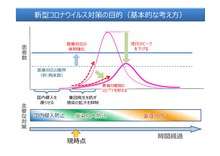
On 25 February, the Abe Administration introduced the "Basic Policies for Novel Coronavirus Disease Control" (Japanese: 新型コロナウイルス感染症対策の基本方針) based on advice from the expert meeting.[259] After a spike of infections in Italy, Iran, and South Korea, Abe decided that the government's disease countermeasures would prioritize the prevention of large-scale clusters in Japan. This included controversial requests to suspend such large-scale gatherings as community events and school operations, as well as to limit patients with light cold symptoms from visiting medical facilities to prevent them from overwhelming hospital resources.[260]
First, the new policies advised local medical institutions that it is better for people with mild cold-like symptoms to rely on bed rest at home, rather than seeking medical help from clinics or hospitals. The policy also recommended that people at a higher risk of infection – including the elderly and patients with pre-existing conditions – avoid hospital visits for non-treatment purposes, such as by ordering prescriptions over the telephone instead of in person.[258]
Second, the new policies allowed general medical facilities in areas of a rapid COVID-19 outbreak to accept patients suspected of infection. Before this, patients could only get tested at specialized clinics after making an appointment with consultation centres to prevent the transmission of the disease. Government officials revised the previous policy after acknowledging that such specialized institutions would be overwhelmed during a large cluster.
Third, the policy asked those with any cold symptoms to take time off from work and avoid leaving their homes. Government officials urged companies to let employees work from home and commute at off-peak hours. The Japanese government also made an official request to local governments and businesses to cancel large-scale events.
On 27 February, Abe requested the closure of all schools from 2 March to the end of spring vacations, which usually conclude in early April. The next day, the Japanese government announced plans to create a fund to help companies subsidize workers who need to take days off to look after their children while schools are closed.[261]
On 27 February, the Japanese government also announced plans to expand the national health insurance system so that it covers COVID-19 tests.[262]
On 9 March, the Ministry of Health reconvened the Expert Meeting after the two week "critical moment." The panel of medical experts concluded that Japan was currently not on track to experience a large-scale cluster, but stated that there is a two-week time lag in analysing COVID-19 trends and that the country would continue to see more infections. Consequently, the participants asked the government to remain vigilant in quickly identifying and containing smaller clusters. With more COVID-19 outbreaks around the world, the panel also proposed that new infections from abroad could initiate a "second wave" of the disease in Japan.[263][264]
On 9 March, the Health Ministry published a disease forecast for each prefecture and instructed local governments to prepare their hospitals to accommodate its patient estimates. It predicts that the virus peak in each prefecture would occur three months after the first reported case of local transmission. The Ministry estimates that at the peak Tokyo would see 45,400 outpatients and 20,500 inpatients per day, of whom 700 will be in severe condition. For Hokkaido, the figure is 18,300 outpatients and 10,200 inpatients daily, of whom about 340 will be in severe condition.[265]
State of Emergency declaration
On 5 February, the Abe Administration's coronavirus task force initiated political debate on the introduction of emergency measures to combat the COVID-19 outbreak a day after the British cruise ship Diamond Princess was asked to quarantine. Initial debate focused on constitutional reform due to the task force's apprehension that the Japanese Constitution may restrict the government's ability to enact such compulsory measures as quarantines on the grounds that it violated human rights. After lawmakers representing almost all of the major political parties – including the Jimintō, Rikken-minshutō, and Kokumin-minshutō – voiced their strong opposition towards this proposal and asserted that the Constitution allowed for emergency measures, the Abe Administration moved forward with legislative reform instead.[266]
On 5 March, Abe introduced a draft amendment to the Special Measures Act to Counter New Types of Influenza of 2012 to extend the law's emergency measures for an influenza outbreak to include COVID-19. He met separately with the heads of five opposition parties on 4 March to promote a "united front" in passing the reforms. The National Diet passed the amendment on 13 March, making it effective for the next two years.[267][268] The amendment allows the Prime Minister to declare a "state of emergency" in specific areas where COVID-19 poses a grave threat to the lives and economic livelihood of residents. During such a period, governors of affected areas will receive the following powers: (1) to instruct residents to avoid unnecessary outings unless they are workers in such essential services as health care and public transportation; (2) to restrict the use or request the temporary closure of businesses and facilities, including schools, social welfare facilities, theatres, music venues and sports stadiums; (3) to expropriate private land and buildings for the purpose of erecting new hospitals; and (4) to requisition medical supplies and food from companies that refuse to sell them, punish those that hoard or do not comply, and force firms to help transport emergency goods.[269]
Under the law, the Japanese government does not have the authority to enforce citywide lockdowns. Apart from individual quarantine measures, officials cannot restrict the movement of people in order to contain the virus. Consequently, compliance with government requests to restrict movements is based on "asking for public cooperation to ‘protect people’s lives’ and minimize further damage to [the economy]".[270]
On 25 March, the Ministry of Health, Labour and Welfare announced that the daily number of confirmed cases in Tokyo increased from 17 to 41 cases compared to the day before.[78] Tokyo Governor Yuriko Koike held an emergency press conference in the late afternoon, stating that "the current situation is a serious situation where the number of infected people may explode." She requested residents to refrain from nonessential outings during the upcoming weekend.[79]
On 26 March, the Ministry of Health reconvened the Novel Coronavirus Expert Meeting to review the new data. The panel of medical experts concluded that there was a "high probability of an expansion of infections" within the country due to an increase in the number of infected patients returning from Europe and the United States between 11 March and 23 March.[4] In response to the statement, Abe instructed Economic Policy Minister Yasutoshi Nishimura to establish a special government task force to combat the spread of the virus.[271] The move cleared a prerequisite toward declaring a state of emergency because any request for one by the Prime Minister would have to be approved by such a task force under the revised law.
On 30 March, Koike requested residents to refrain from nonessential outings for the next two weeks due to a continued increase in infections in Tokyo.[272] During a press conference held by the Japan Medical Association that same day, Kamayachi Satoshi of the government's panel of medical experts stated that his fellow panelists were divided over whether Abe should declare a state of emergency.[273]
On 1 April, the Ministry of Health reconvened the Novel Coronavirus Expert Meeting to assess the current COVID-19 situation in Japan.[4] The medical experts discussed the data and concluded that although such urban areas as Tokyo and Osaka were witnessing a rapid increase in infection rates, they were not on a trajectory to experience a large-scale cluster seen in Europe and the United States. Experts were still concerned that infected patients could overwhelm the medical service system before an explosive spread of the virus as COVID-19 designated hospitals in major cities reached near capacity. They requested the government to secure more hospital beds for patients and transfer those with mild or no symptoms to outside housing facilities.
On 2 April, the Ministry of Health issued a notice that urged non-critical COVID-19 patients to move out of hospitals and stay at home or at facilities designated by local governments.[274] Prefectural governors across the country began arranging accommodation for such patients through hotel operators and dormitories and issued official requests to the Japan Self-Defense Force for transportation services.
On 3 April, Professor Nishiura Hiroshi of the Ministry of Health's Cluster Response Team presented the initial findings of his COVID-19 epidemiological models to the public.[275] He concluded that the government could prevent an explosive spread of the virus in Japan if it adopted strict restrictions on outings that reduced social interactions by 80 percent, while such a spread would occur if the government adopted no measures or reduced social interactions by only 20 percent. Nishiura added that Tokyo was about 10 days to two weeks away from a large-scale outbreak.
On 7 April, Abe proclaimed a one-month state of emergency from 8 April to 6 May for Tokyo and the prefectures of Kanagawa, Saitama, Chiba, Osaka, Hyogo and Fukuoka.[276] He stated that the number of patients would peak in two weeks if the number of person-to-person contacts was reduced by 70 to 80 percent, and urged the public to stay at home to achieve this goal.[277]
On 10 April, Koike announced closure requests for six categories of businesses in Tokyo.[278] They include amusement facilities, universities and cram schools, sports and recreation facilities, theatres, event and exhibition venues. and commercial facilities. She also asked restaurants to limit opening hours to between 5 a.m. and 8 p.m. and to stop serving alcohol at 7 p.m. The request was to take effect on 12 April and promised government subsidies for businesses that cooperated with it.
On 11 April, Professor Nishiura presented the remaining findings of his COVID-19 epidemiological models.[279][280] He determined that reducing social interactions by 80 percent would decrease the COVID-19 infection rate to a manageable level in 15 days; by 70 percent in 34 days; by 65 percent in 70 days; and by 50 percent in 3 months. Any rate below 60 percent would result in an increase in the number of cases.
On 16 April, Abe expanded the state of emergency declaration to include every prefecture within the country.[11]
Later on 4 May, Abe expressed that Japanese Cabinet would expand the state of emergency declaration until end of May.[129] Then on 14 May, Abe and his cabinet declared that Japanese Government decided to relieve the state of emergency declaration, excluding 8 prefectures like Tokyo, Kyoto Prefecture.[281] Some media expressed doubts about why only some of the easing standards were released under the name of comprehensive judgment.
On 21 May, the state of emergency is suspended in 3 prefectures in Kinki after they had cleared the threshold of having new infections below 0.5 per 100,000 people in the past week, resulting a total of 42 out of the 47 prefectures to be out of the state of emergency while 5 prefectures, such as Saitama, Kanagawa, Hokkaido, are waiting for lifting decision on May 25.[17][18]
Novel Coronavirus Expert Meeting
On 16 February, Abe convened the Novel Coronavirus Expert Meeting to incorporate members of the Japanese medical community into his decision-making process.[248] The panel acts as the main medical advisory body of the Japanese government during the COVID-19 crisis.
Chair
- Wakita Takaji (Director-General of the National Institute of Infectious Diseases)
Vice Chair
- Omi Shigeru (President of the Japan Community Health Care Organization)
Members
- Okabe Nobuhiko (Director of the Kawasaki Municipal Institute of Public Health)
- Oshitani Hitoshi (Former Infectious Disease Control Advisor at the WHO Western Pacific Regional Office)
- Kamayachi Satoshi (Executive Board Member of the Japan Medical Association)
- Kawaoka Yoshihiro (Professor of Virology at the University of Wisconsin-Madison and University of Tokyo)
- Kawana Akihiko (Professor of Internal Medicine at the National Defense Medical College)
- Suzuki Motoi (Director of the NIID Center of Infectious Disease Epidemiology)
- Tateda Kazuhiro (Professor of Microbiology and Infectious Disease at Toho University)
- Nakayama Hitomi (Social Worker and Lawyer at the Kasumigaseki-Sogo Law Offices)
- Muto Kaori (Professor of Cultural and Human Information Studies at the University of Tokyo)
- Yoshida Masaki (Professor of Internal Medicine at Jikei University School of Medicine)
Government support measures
On 12 February, Abe announced that the government would secure 500 billion yen for emergency lending and loan guarantees to small and medium enterprises affected by the COVID-19 outbreak.[282] He also declared that his Cabinet would set aside 15.3 billion yen from contingency funds to facilitate the donation of isolated virus samples to relevant research institutions across the globe.[283]
On 1 March, Abe evoked the Act on Emergency Measures for Stabilizing Living Conditions of the Public to regulate the sale and distribution of facial masks in Hokkaido. Under this policy, the Japanese government instructed manufactures to sell facial masks directly to the government, which would then deliver them to residents.[238] On 5 March, the Japanese government announced that it is organizing an emergency package by using a 270 billion yen ($2.5 billion) reserve fund for the current fiscal year through March to contain the virus and minimize its impact on the economy.[284]
Controversies and criticisms
On 17 February, the Ministry of Health, Labour and Welfare asked people who have had a fever over 37.5 °C for more than four days or those who have lethargy and difficulty breathing worse than those for influenza to consult with the coronavirus-related Return and Contact Consultation Centres around the country to determine if they should get tested for novel coronavirus.[285][286] However, some media outlets asserted that restrictive standards for testing would delay societal and public health responses, leading to the spread of the disease, which could later lead to the collapse of the health care system and the medically protected regional community.[13][287]
In early February, Masahiro Kami, a hematologist, chairman of the Institute for Healthcare Governance, and outside director of SBI Pharma Co., Ltd. and SBI Biotech Co., Ltd., compared with Italy and criticized Japan's response to the cruise ship.[288] Japan quarantined everyone for two weeks, and then tested them all twice before releasing them but Italy disembarked all passengers in 12 hours. Italy only tested two people who were ill and suspected of being infected, and they tested negative, they immediately released all the remaining 6000 passengers.[289]
In late February, several Japanese media outlets reported that there were people with fever or other symptoms who could not be tested through the consultation centre system and had become "test refugees" (Japanese: 検査難民).[290][291][292][293] Some of these cases involved patients with severe pneumonia.[294] Hematologist Masahiro Kami claimed that many patients were denied testing due to their mild symptoms and criticized the Japanese government for setting testing standards that were too high and for lacking a response to patient anxiety.[295]
On 26 February, the Minister of Health Katsunobu Kato stated in the National Diet that 6,300 samples were tested between 18 and 24 February, averaging 900 samples per day. Some representatives questioned the discrepancy between the actual number of people tested and the claim in the prior week that 3,800 samples could be tested per day.[296]
On the same day, more doctors reported that public health centres had refused to test some patients. The Japan Medical Association announced that it would start a nationwide investigation and plan to cooperate with the government to improve the situation.[297] The Ministry of Health also stated that it would look into the situation with the local governments.[298]
The strict constraints on testing for the virus by Japanese health authorities drew accusations from critics such as Masahiro Kami that Abe wanted to "downplay the number of infections or patients because of the upcoming Olympics." It was reported that only a few public health facilities were authorized to test for the virus, after which the results could only be processed by five government-approved companies, which created a bottleneck forcing clinics to turn away even patients with high fevers. This has led some experts to question Japan's official case numbers. For example, Tobias Harris, of Teneo Intelligence in Washington, D.C., said: "You wonder, if they were testing nearly as much as South Korea is testing, what would the actual number be? How many cases are lurking and just aren't being caught?"[13][14] Fact-checking in several media later proved that the news that the government had reduced the number of tests to curb the increase in the number of infected people for the Olympics was fake news.[299][300]
Testing was still restricted to large hospitals in March 2020, with 52,000 tests, or 16% of the South Korean amount, performed that month. A decision to expand testing was made on 13 April 2020.[301] There were many articles in March that criticized the number of PCR tests in Japan as very small compared to South Korea.[302][303] However, the number of PCR tests in Japan at that time was actually not a few. According to data released by the Ministry of Health, Labor and Welfare, Japanese authorities conducted PCR tests of 10205 as of 13 March and 15655 as of 17 March, except for those returning from China by charter flights and passengers on the cruise ship. The number of tests in Japan seems to be very small compared to the countries with exorbitant tests such as China, South Korea and Italy, but it has never been smaller than the other countries.[304][305][306]
On March 5, Japan announced that it will strengthen quarantine for new entrants from China and South Korea and add some areas of Iran to the target area. The Chinese government showed their understanding of the decision, but the Korean government blamed Japan violently, saying that these were "unreasonable and excessive measures."[307][308][309][310][311]
There are various problems arising in connection with the Emergency Supplementary Income policies promoted by the Japanese government. At first, there were many obstacles to rapid driving force as the 300,000 yen per household policy was changed to the 100,000 yen per population policy. In addition, there are some uncomfortable parts that make it easier to evaluate postal delivery applications more faster than online applications. In the case of postal delivery, it is possible to apply for each household more smoothly, but when applying online, separate paperwork for inspection are required for each local government office. In addition, since the application process for management subsidies is complicated, there are also side effects of financial disadvantages for small business owners and individual business owners. The reason why the shortage of masks was difficult to eliminate and it took a long time to receive the benefits was that the Individual Number system, which was well known as My personal ID card Number System, was only used by about 16% of the population, meanwhile most of work could be handled without Individual Number system due to people's hesitation against privately problematic policy which gets into troublesome settlement for protection of private problem without supervision of government.[312][313] The Individual Number is a system for the administration to identify individuals. Due to opposition from the opposition party and liberals who say that the national and local governments will get to know personal information, the Individual Number has not spread easily and is not obligatory to link with other personal information such as bank accounts.[314][315] On this topic, Senetor Sanae Takaichi who leads Ministry of Internal Affairs and Communications commented that they are considering to connect every single personal ID card Number and each single bank account for comfort usage of every citizen.[316][317]
Moreover, Prime Minister Abe's cloth mask distribution policy is also problematic, so there is some lack of clarity in budgeting. Furthermore, one of the companies involved Mask supply production that are suspected ghost companies. Besides, the problem of maintaining quality, which was the trigger, remains under the government's burden, and the issue of tax waste is pointed out.[318][319] The company that was suspected to be a dummy company in some media was a broker of a sole proprietor, and he had masks manufactured in Vietnam using locally procured materials and imported them. Originally, he was promoting masks to Fukushima and Yamagata prefectures, but the Ministry of Health and Welfare, who had trouble finding a mask supplier due to a sudden decision, bought them.[318][319][320] Not only he, but also people and companies who were reported suspicious in the media or were rumored on social media were slandered online, and there were many nuisances to the company and their homes.[321][322][323]
Likewise, there were several news reports that showed signs for missing numbers of infection statistics in Japan could be explained by other sources of statistics.[324][325][326] Furthermore, there would be differences among several statistics of departments since there were several standards for statistics among regional directors and departments of Japanese Authorities using those statistics with other standards.[327] As a result, despite of low death rate, there were some doubt that there would be missing fatality cases for COVID-19 pandemic among Japan due to low credibility of statistics in Japan as well as some medical professionals and media outlets have criticized the Japanese government for under-testing for COVID-19.
Medical response
The medical task-force advising the government, known as the Novel Coronavirus Expert Meeting, has adopted a three-pronged strategy to contain and mitigate COVID-19 that includes (1) early detection of and early response to clusters through contact tracing; (2) early patient diagnosis and enhancement of intensive care and the securing of a medical service system for the severely ill; and (3) behaviour modification of citizens.[328] Medical experts have prioritized COVID-19 testing for the first two purposes, while relying on the behaviour modification of citizens rather than mass testing to prevent the spread of the virus at a large-scale level.[329]
Contact tracing against clusters
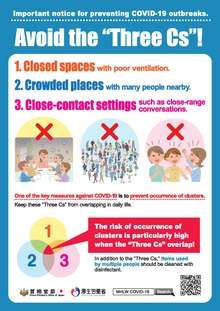
On 25 February, the Ministry of Health, Labour and Welfare established the Cluster Response Team (Japanese: クラスター対策班) in accordance with the Basic Policies for Novel Coronavirus Disease Control.[330] The purpose of the section is to identify and contain small-scale clusters of COVID-19 infections before they grow into mega-clusters. It is led by university professors Oshitani Hitoshi and Nishiura Hiroshi and consists of a contact tracing team and a surveillance team from the National Institute of Infectious Diseases (NIID), a data analysis team from Hokkaido University, a risk management team from Tohoku University, and an administration team.[331] Whenever a local government determines the existence of a cluster from hospital reports, the Ministry of Health dispatches the section to the area to conduct an epidemiological survey and contact tracing in coordination with members of the local public health centre. After the teams determine the original source of infection, the ministry and local government officials enact countermeasures to locate, test, and place under medical surveillance anybody who may have come into contact with an infected person. They can also file requests to suspend infected businesses or restrict events from taking place there.[331]
From its contract tracing findings, the Ministry of Health discovered that 80% of infected people did not transmit COVID-19 to another person. The Ministry also determined that patients that did infect another person tended to spread it to multiple people and form infection clusters when they were in certain environments.[332] According to one of the experts, Kawaoka Yoshihiro, "[This meant that] you don’t need to trace every single person who’s been infected if you can trace the cluster. If you do nothing, the cluster will grow out of control. But as long as you identify a cluster small enough to contain, then the virus will die out."[333]
On 9 March, the medical experts reviewed the data from the Cluster Response Team's work and further refined its definition of a high-risk environment as a place with the overlapping "three Cs" (three crowdedness (Japanese: 三つの密, Hepburn: mittsunomitsu)): (1) closed spaces with poor ventilation; (2) crowded places with many people nearby; and (3) close-contact settings such as close-range conversations.[334] They identified gyms, live music clubs, exhibition conferences, social gatherings, and yakatabune as examples of such places. The experts also theorized that crowded trains did not form clusters because people riding public transportation in Japan usually do not engage in conversations.[334]
During times when the number of infected patients rises to such an extent that individual contract tracing alone cannot contain a COVID-19 outbreak, the government will request the broad closure of such high-risk businesses.[335]
Reinforcement of the medical system
During the initial stages of the outbreak, medical experts recommended the government to focus COVID-19 testing for contact tracing purposes and patients with the following symptoms: (1) cold symptoms and a fever of at least 37.5 °C (or need to take antipyretic medication) for over four days; and (2) extreme fatigue and breathing difficulties.[252] The elderly, people with pre-existing conditions, and pregnant women with cold symptoms could be tested if they had them for two days.[252][251] The country's high number of computed tomography (CT) scanners (111.49 per million people) allows them to confirm suspicious pneumonia cases and begin treatment before testing them for COVID-19.
On 1 April, medical experts requested the government to secure more hospital beds for patients and transfer those with mild or no symptoms to outside housing facilities to focus treatment on the severely-ill.[4]
Behaviour modification of citizens
The Japanese government's medical task-force anticipates multiple waves of COVID-19 to arrive in the country for at least the next three years, with each one prompting the public to engage in a cycle of restricting and easing movement.[333] Under the current law, the Prime Minister can restrict movement by declaring a "state of emergency" in specific areas where COVID-19 poses a grave threat to residents. During such periods, the governors of affected areas can request citizens to avoid unnecessary outings and temporarily close certain businesses and facilities. Since the government cannot enact compulsory measures to enforce these requests, it has instead embarked on a social engineering program to train its citizens to comply with them on a voluntary basis during current and future state of emergencies.[333]
To reduce person-to-person contact, the government has instructed the public to refrain from going to high-risk environments (the Three Cs: closed spaces, crowded places, and close-contact settings) and events involving movement between different areas of the country.[335] It emphasized extreme caution when coming in contact with the elderly. The government also promoted such work-style reforms as teleworking and staggering commuting hours, while improving the country's distance learning infrastructure for children.[335]
On 4 May, the Ministry of Health, Labour and Welfare unveiled its program to create a "new lifestyle" (Japanese: 新しい生活様式) for the country's citizenry that is to be practiced everyday on a long-term basis.[336] Several elements of the lifestyle include behavior changes demanded under the state of emergency, such as avoiding high-risk environments and long-distance travelling. However, the program expands these precautions to cover more mundane activities by requesting people to engage in such activities as wearing masks during all conversations, refraining from talking when using public transportation, and eating next to one another rather than facing one another.[335][336]
Regional developments
The following are examples of the spread of infections for three of the eight regions in Japan.
Hokkaido
The first case was identified in Hokkaido on 28 January 2020,[337][338] and the first case of an infected person in Hokkaido was on 14 February.[337][339] To limit the spread of infection, the governor of Hokkaido, Naomichi Suzuki, announced the Declaration of a New Coronavirus Emergency on 28 February, calling on locals to refrain from going out.[340]
Kanto
On 13 February 2020, three confirmed cases were announced in the Kanto region, and one case was confirmed in each of Kanagawa, Tokyo, and Chiba. On 6 March 2020, it was confirmed that 121 infected people were reported in 5 prefectures, including Tochigi and Saitama. On 21 March, a total of 136 people were identified as infected in Tokyo, and a total of 311 people were confirmed in the Kanto region.
Aichi
The first case was identified in Aichi on 26 January 2020,[341] and the first case of an infected person in Aichi was on 14 February.[341] As the virus spread, Governor Omura of recognized that there were two clusters in the prefecture, mainly in Nagoya.[342] He emphasised the need to work with the Nagoya City Government to prevent the spread of infection.[342]
Socio-economic impact
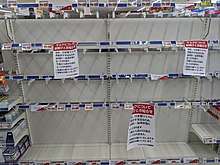
Abe said that "the new coronavirus is having a major impact on tourism, the economy and our society as a whole".[343][344] Japan into recession. In Q1 2020 GDP there was 0.9 contraction, whereas in Q4 2019 GDP there was 1.9 contraction.[345] Face masks have sold out across the nation and new stocks are quickly depleted.[346] There has been pressure placed on the healthcare system as demands for medical checkups increase.[347] Chinese people have reported increasing discrimination.[348]
The aviation, retail and tourism sectors have reported decreased sales and some manufacturers have complained about disruption to Chinese factories, logistics and supply chains.[349] Abe has considered using emergency funds to mitigate the outbreak's impact on tourism, 40% of which is by Chinese nationals.[350] S&P Global noted that the worst hit stocks were for travel, cosmetics and retail companies, which are most exposed to Chinese tourism.[351] Nintendo warned that delays on shipments of hardware and accessories for its Nintendo Switch video game console would be "unavoidable" due to the impact on its Chinese supply chain and manufacturing, and on 7 April announced that shipments to Japan would be delayed due to increased demand for the device.[352][353]
On the same day the Nagoya Expressway Public Corporation announced plans to temporarily close some toll gates and let employees work from their homes after an employee staffing the toll gates was diagnosed positive for SARS-CoV-2.[354] Due to personnel shortages, six toll gates on the Tōkai and Manba routes of the expressway network were closed over the weekend.[354]
Sporting events
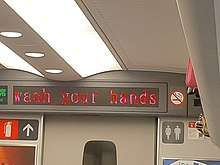
The outbreak has affected professional sports in Japan. Nippon Professional Baseball's preseason games and the Haru Basho sumo tournament in Osaka were announced to be held behind closed doors, while the J.League football and Top League rugby suspended or postponed play entirely.[355] On the weekend of 29 February, the Japan Racing Association closed its horse racing meets to spectators and off-track betting until further notice, but continued to offer wagering by phone and online.[356]
The outbreak expansion has affected sports schedule of school in Japan. Since these outbreaks led to concerns over the health risk of the students, sporting event, such as baseball, basketball, soccer, in school were suspended or postponed play entirely, due to unexpected postpone of education schedule by nationwide outbreaks, as well as other sports events decided to delay its season.
The expansion of COVID-19 into a global pandemic led to concerns over the 2020 Summer Olympics and Paralympics in Tokyo. In March, it was announced that the Games would be postponed by a year, for the first time in the history of the modern Olympics.[357][358]
Two Yomiuri Giants players have tested positive for the new coronavirus, the Central League team announced on June 3, casting a shadow over Nippon Professional Baseball's plan to start the 2020 season on June 19.[169]
Entertainment
On 26 February, Abe suggested that major sporting, cultural and other events should be cancelled, delayed or scaled down for about two weeks amid the new coronavirus outbreak.[359] As a result, J-pop groups Perfume and Exile cancelled their concerts scheduled that night at Tokyo Dome and Kyocera Dome Osaka, respectively, both of which have a capacity of 55,000.[360] On 27 February, AnimeJapan 2020, originally scheduled to be held in Tokyo Big Sight in late March, was cancelled.[361]
A number of major amusement parks announced temporary closures. On 28 February, Tokyo Disneyland, Tokyo DisneySea and Tokyo Disney Resort were temporarily closed from 29 February.[362][363] Universal Studios Japan also announced a closure the same day.[364] By mid-March, some attractions began to partially reopen, with Huis Ten Bosch and Legoland Japan Resort reopening with limited services (outdoor attractions only, visitors subject to temperature checks before entering) on 23 March.[365][366] However, the Disney parks and Universal Studios Japan delayed their re-openings until mid-to-late April.[364][367][368]
Affected by the shortage of outsourced staff due to the COVID-19 outbreak, many Japanese animated films and TV shows announced changes or postponed broadcasts due to production problems, including A Certain Scientific Railgun T (deferred for broadcast, changed to rebroadcast), Asteroid in Love, A3! (Delay extension), Kukuriraige -Sanxingdui Fantasy- (Delay extension), etc.[369][370] On 31 March, TV Asahi announced that Rio Komiya, who plays Jūru Atsuta in the tokusatsu series Mashin Sentai Kiramager, had tested positive for COVID-19.[371][372] While production had been suspended, it was stated that there were enough completed episodes to last through 10 May.[373][374]
On 25 March, it was announced that Japanese comedian Ken Shimura had tested positive for COVID-19.[375][93] Shimura died on 29 March at the age of 70.[376][377]
Not only anime series but also drama series have been silently refrained production to prevent the spread of infection, and most of telecasting stations are transmitting works from past years. In Nippon TV, the airing schedule of "The pride of the Temp", starring Ryoko Shinohara and Yo Oizumi, has been postponed, as well as the airing schedule of "Minwan Police", starring Kento Nakajima and Sho Hirano, has been postponed.[378] In TBS Television, the airing schedule of "MIU404", starring Gen Hoshino and Gou Ayano, has been postponed, as well as the airing schedule for "Hanzawa Naoki 2", starring Masato Sakai and Mitsuhiro Oikawa, has been postponed.[379] In Fuji TV, The schedule for airing the manga-based medical drama series in the second quarter, starring Satomi Ishihara and Nanase Nishino, has been postponed,[380] as well as the airing schedule for "Suit Season 2", starring Yuto Nakajima and Yuko Araki, has been suspended.[381] Meanwhile, NHK announced that the schedule for three drama series would be postponed under the influence of the new corona virus.[382] "The broadcast date will be announced on the program guide and website as soon as it is decided," said the station.[383]
On April 19, 2020, TV Tokyo, MediaNet & ShoPro announced that the Pokémon anime series will be going on hiatus, with production temporarily suspended. Reruns of old episodes began airing on April 26, 2020; the staff will reveal at a later date when new episodes will return.[384] In addition, production for the Toei anime shows were suspended due to the pandemic after the episodes aired including Healin' Good PreCure (Episode 12) and Digimon Adventure: (Episode 3).[385] As of 19 April 2020, Fuji TV, Toei Animation confirmed that the One Piece anime series will be going on recess, with production temporarily postponing new episodes and reruns of older episodes taking its place.[385] On April 26, 2020, Nippon Animation announced on Saturday that the broadcast of new anime episodes of Chibi Maruko-chan anime series has been suspended for the time being due to disease outbreak of COVID-19 occurred in Tokyo, Japan.[386] As a side note, at the time of April 26, 2020, there were a number of anime series with production pauses due to difficulties in supply and production, including some series like Black Clover, Boruto: Naruto Next Generations, Duel Masters King, Kingdom (Season 3), Major 2nd Season 2.
Distance learning
On 27 February 2020, Prime Minister Shinzo Abe requested that all Japanese elementary, junior high, and high schools close until early April to help contain the virus.[5][387] This decision came days after the education board of Hokkaido called for the temporary closure of its 1,600 public and private schools.[388] Nursery schools were excluded from the nationwide closure request.[5] As of 5 March, 98.8 per cent of all municipally run elementary schools have complied with Abe's request, resulting in 18,923 school closures.[389]
Along with the school suspension, the online education was being piloted in some areas where the health crisis was not severe, but there was a concern that the education gap was widening in each region due to the limited online environment in Japan. Due to the sudden public health crisis, school closures are taking place in the middle of school, and education gaps in each region and childcare problems in the home have led to difficulties in education. While there are promising plans to postpone the start of the new semester to September, centered on local politics, there are also opinions that some require careful approach to changing the semester system. Those who promotes semester change into September are pursuing a new semester change on the basis of bridging regional gaps and meeting world standards, and those who ponders semester change argue that the online education environment needs to be rapidly updated by region before the semester change.[390][391]
Harassment
Due to prejudice and ignorance, social harassment is expanding in relation to infectious diseases. Because of their worries about being contracted, the number of cases where medical personnel's family commuting is restricted or people around the infected person are disturbed has increased. In addition, there are increasing cases where small business owners, who were inevitably operating, are forced to take self-sufficiency by neighbours who feel anxious and deprived.
While telecommuting is being encouraged, videoconferencing is also increasing the number of psychological pressures caused by authoritarian attitudes and sexual harassment. The negative effects of telecommuting also exacerbated the problem of privacy infringement, leading to exposure of privacy in the workplace and social pressure. Some companies have compulsory video conference participation rules, with public request of active reactions and optimistic expressions.
As the number of telecommuting cases increased, the number of working hours in the homes of workers increased, causing conflicts between women and men. In some cases, the number of cases of domestic violence has also increased by increasing discord among families.
Aid to China
On 26 January, Japanese people donated a batch of face masks to Wuhan.[392] According to the Liberty Times of Taiwan, these were actually purchased by China,[393] but Japanese media and the Japanese Consulate General in Chongqing stated that it was a donation.[394][395]
On 3 February, four organizations, the Japan Pharmaceutical NPO Corporation, the Japan Hubei Federation, Huobi Global, and Incuba Alpha, donated materials to Hubei.[396]
On 10 February, the Liberal Democratic Party's Secretary General Toshihiro Nikai said that the party would deduct 5,000 yen from the March funds from members of the party to provide mainland China with support.[397]
Festivals and contests
The following major festivals were cancelled:
|
|
The following major fireworks events were also cancelled or considered to be postponed:
|
|
The following festivals were postponed:
- 2020 Sanja Matsuri Festival (三社祭), originally scheduled for 15–17 May, was changed to October in Tokyo[405]
- 2020 Japan Tree-planting Festival (全国植樹祭) in Shimane Prefecture, originally scheduled for 31 May, was postponed to a later date
- 2020 Tohoku Kizuna Traditional Festival (東北絆祭り) in Yamagata City, originally schedule date for May 30 and 31, was changed to next July
The following major contests were cancelled or postponed indefinitely:
- All Japan Kokeshi contest and exhibition in Shiroishi, Miyagi Prefecture
- All Japan chindonya contest in Toyama City
- Fukiage beach sand sculpture contest and exhibition in Minamisatsuma, Kagoshima Prefecture
- Arida Pottery Market in Saga Prefecture, originally scheduled for 29 April to 5 May, has been postponed indefinitely
International travel restrictions
Restrictions on entry to Japan
On 3 April, foreign travellers who had been in any of the following countries and regions within the past 14 days were barred from entering Japan. This travel ban covers all foreign nationals, including those holding Permanent Resident status. Foreign nationals with Special Permanent Resident status are not subject to immigration control under Article 5 of the Immigration Control Act 1951 and are therefore exempt.[406]
Japanese citizens and holders of Special Permanent Resident status may return to Japan from these countries, but must undergo quarantine upon arrival until testing negative for COVID-19.
Restrictions on entry from Japan
The following countries and territories have restricted entry from Japan:





.svg.png)


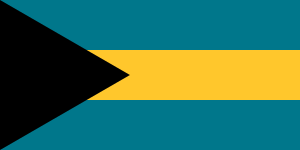


.svg.png)
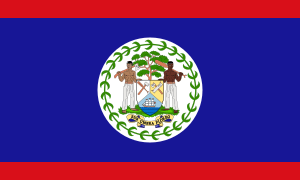
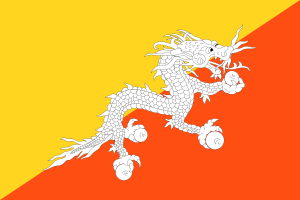


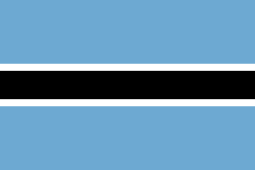






.svg.png)
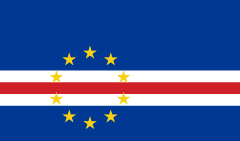




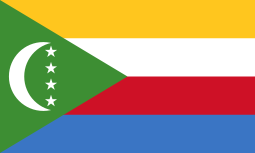
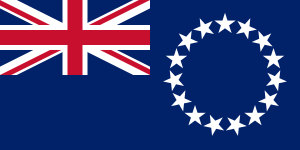
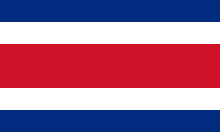






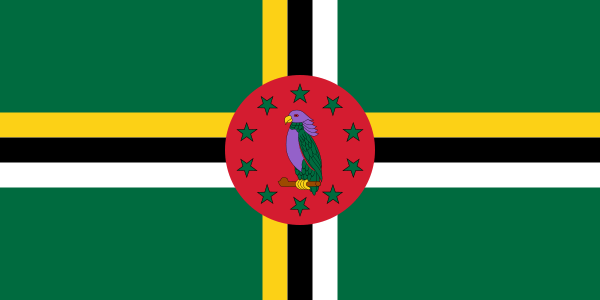


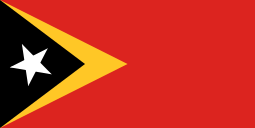



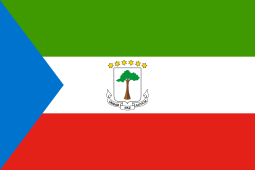
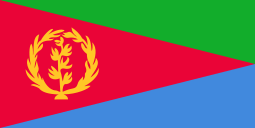

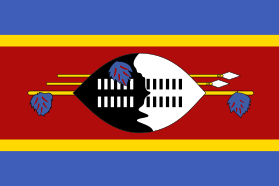



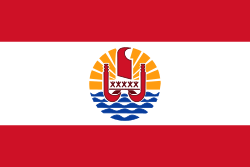
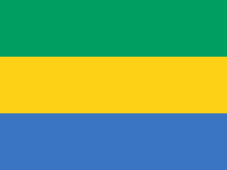
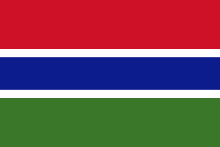





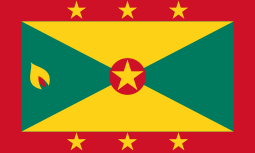

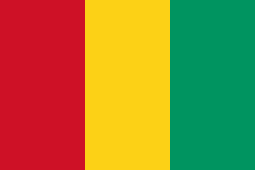

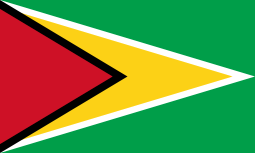

.svg.png)








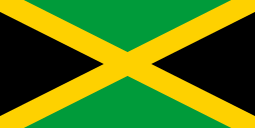



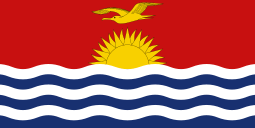


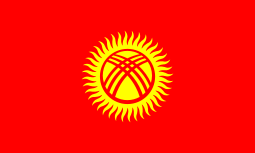








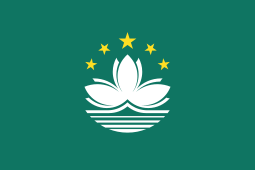
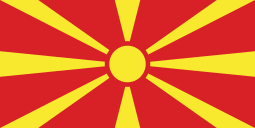
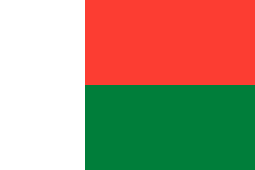
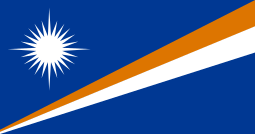
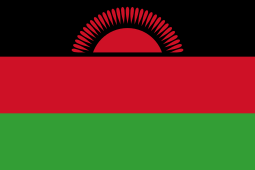

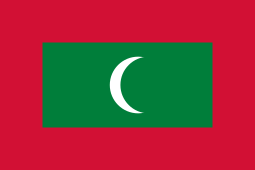



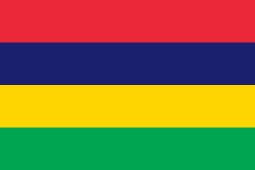
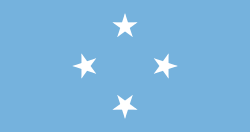







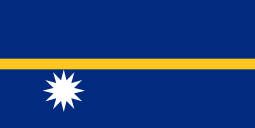




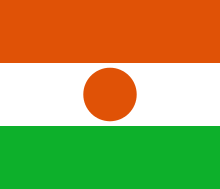

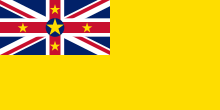




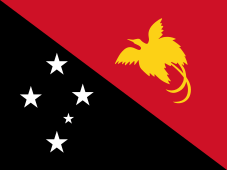






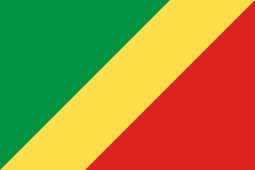



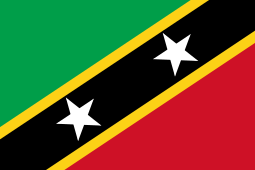


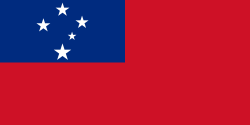
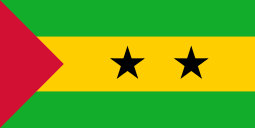




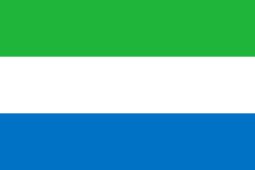

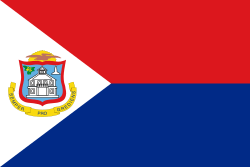






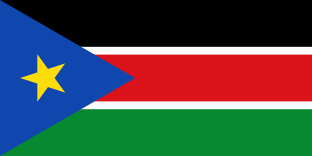



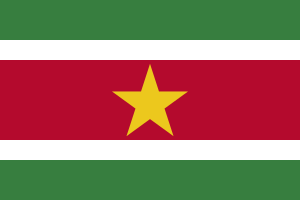






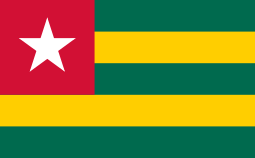
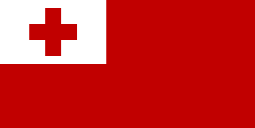


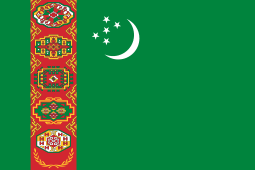
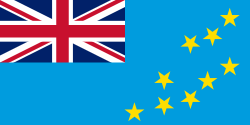





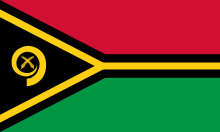




Statistics
Statistics by prefecture
| Date | Honshū | Shikoku | Kyūshū | Other | Date | Cases | Deaths | Total disch. [i 3] |
Total tested [i 3] |
Sources | |||||||||||||||||||||||||||||||||||||||||||||||||
|---|---|---|---|---|---|---|---|---|---|---|---|---|---|---|---|---|---|---|---|---|---|---|---|---|---|---|---|---|---|---|---|---|---|---|---|---|---|---|---|---|---|---|---|---|---|---|---|---|---|---|---|---|---|---|---|---|---|---|---|
| Tōhoku | Kantō | Chūbu | Kinki (Kansai) | Chūgoku | |||||||||||||||||||||||||||||||||||||||||||||||||||||||
| new | cml | new | cml | ||||||||||||||||||||||||||||||||||||||||||||||||||||||||
| 2020/01/16 | (1) | 2020/01/16 | 1 | 1 | - | - | N/A | N/A | |||||||||||||||||||||||||||||||||||||||||||||||||||
| 2020/01/24 | (1) | 2020/01/24 | 1 | 2 | - | - | N/A | N/A | |||||||||||||||||||||||||||||||||||||||||||||||||||
| 2020/01/25 | (1) | 2020/01/25 | 1 | 3 | - | - | N/A | N/A | |||||||||||||||||||||||||||||||||||||||||||||||||||
| 2020/01/26 | (1) | 2020/01/26 | 1 | 4 | - | - | N/A | N/A | |||||||||||||||||||||||||||||||||||||||||||||||||||
| 2020/01/28 | (1) | (1) | 1 | 2020/01/28 | 3 | 7 | - | - | N/A | N/A | |||||||||||||||||||||||||||||||||||||||||||||||||
| 2020/01/29 | 1 | 2020/01/29 | 1 | 8 | - | - | N/A | N/A | |||||||||||||||||||||||||||||||||||||||||||||||||||
| 2020/01/30 | (1) | (1) | (1) | (3) | 2020/01/30 | 6 | 14 | - | - | N/A | N/A | ||||||||||||||||||||||||||||||||||||||||||||||||
| 2020/01/31 | 1 | (2) | 2020/01/31 | 3 | 17 | - | - | N/A | N/A | ||||||||||||||||||||||||||||||||||||||||||||||||||
| 2020/02/01 | (3) | 2020/02/01 | 3 | 20 | - | - | N/A | N/A | |||||||||||||||||||||||||||||||||||||||||||||||||||
| 2020/02/04 | (1) | (1) | (1) [i 4] |
2020/02/04 | 3 | 23 | - | - | 2 | N/A | [420] | ||||||||||||||||||||||||||||||||||||||||||||||||
| 2020/02/05 | (1) | 1 | 2020/02/05 | 2 | 25 | - | - | 4 | N/A | [421] | |||||||||||||||||||||||||||||||||||||||||||||||||
| 2020/02/08 | (1) | 2020/02/08 | 1 | 26 | - | - | N/A | N/A | |||||||||||||||||||||||||||||||||||||||||||||||||||
| 2020/02/11 | (2) | 2020/02/11 | 2 | 28 | - | - | 10 | 954 | [422] | ||||||||||||||||||||||||||||||||||||||||||||||||||
| 2020/02/12 | 1[i 5] | 2020/02/12 | 1 | 29 | - | - | 11 | 964 | [423] | ||||||||||||||||||||||||||||||||||||||||||||||||||
| 2020/02/13 | 1 | 1 | 1 | 1 | 2020/02/13 | 4 | 33 | 1 | 1 | 12 | 978 | [424] | |||||||||||||||||||||||||||||||||||||||||||||||
| 2020/02/14 | 1 | 2 | 1 | 1 | 1 | 1 | (1) | 2020/02/14 | 8 | 41 | - | 1 | N/A | N/A | [425] | ||||||||||||||||||||||||||||||||||||||||||||
| 2020/02/15 | 8 | 1 | 3 | 2020/02/15 | 12 | 53 | - | 1 | N/A | N/A | [426] | ||||||||||||||||||||||||||||||||||||||||||||||||
| 2020/02/16 | 4 | 1 | 1 | 2020/02/16 | 6 | 59 | - | 1 | 16 | 1,251 | [427] | ||||||||||||||||||||||||||||||||||||||||||||||||
| 2020/02/17 | 1 | 1 | 4 | 1[i 6] | 2020/02/17 | 7 | 66 | - | 1 | 16 | 1,287 | [428] | |||||||||||||||||||||||||||||||||||||||||||||||
| 2020/02/18 | 3 | 1 | 1 | 3 | 2020/02/18 | 8 | 74 | - | 1 | 18 | 1,296 | [429] | |||||||||||||||||||||||||||||||||||||||||||||||
| 2020/02/19 | 2 | 3 | 2 | 1 | 1 | (1) | 2020/02/19 | 10 | 84 | - | 1 | 20 | 1,432 | [430] | |||||||||||||||||||||||||||||||||||||||||||||
| 2020/02/20 | 1 | 1 | 2 | 1 | 2 | 1 | 2[i 7] | 2020/02/20 | 10 | 94 | - | 1 | 20 | 1,522 | [431] | ||||||||||||||||||||||||||||||||||||||||||||
| 2020/02/21 | 3 | 1 | 3 | 3 | 2 | 1 | 1 | (1) | 2020/02/21 | 15 | 109 | - | 1 | 21 | 1,607 | [432] | |||||||||||||||||||||||||||||||||||||||||||
| 2020/02/22 | 9 | 1 | 2 | 2 | 4 | 4 | 1 | 1 | 2 | 2020/02/22 | 26 | 135 | - | 1 | 24 | 1,703 | [433] | ||||||||||||||||||||||||||||||||||||||||||
| 2020/02/23 | 9 | 1 | 2 | 2020/02/23 | 12 | 147 | - | 1 | 26 | 1,742 | [434] | ||||||||||||||||||||||||||||||||||||||||||||||||
| 2020/02/24 | 4 | 3 | 1 | 2 | 1 | 2 | 2020/02/24 | 13 | 160 | - | 1 | 27 | 1,846 | [435] | |||||||||||||||||||||||||||||||||||||||||||||
| 2020/02/25 | 5 | 1 | 3 | 1 | 1 | 2020/02/25 | 11 | 171 | - | 1 | 32 | 1,890 | [436] | ||||||||||||||||||||||||||||||||||||||||||||||
| 2020/02/26 | 4 | 2 | 3 | 1 | 1 | 5 | 1 | 1 | 2020/02/26 | 18 | 189 | 2 | 3 | 40 | 2,058 | [437] | |||||||||||||||||||||||||||||||||||||||||||
| 2020/02/27 | 15 | 1 | 3 | 2 | 1 | 1 | 1 | 1 | 2020/02/27 | 25 | 214 | 1 | 4 | 41 | 2,209 | [438] | |||||||||||||||||||||||||||||||||||||||||||
| 2020/02/28 | 12 | 2 | 1 | 1 | 1 | 2 | 1 | 2020/02/28 | 20 | 234 | 2 | 5 | 42 | 2,339 | [439] | ||||||||||||||||||||||||||||||||||||||||||||
| 2020/02/29 | 4 | 1 | 1 | 1 | 1 | 1 | 2020/02/29 | 9 | 243 | - | 5 | 42 | 2,517 | [440] | |||||||||||||||||||||||||||||||||||||||||||||
| Date | Date | N/A | N/A | N/A | N/A | N/A | N/A | N/A | |||||||||||||||||||||||||||||||||||||||||||||||||||
| 2020/03/01 | 2 | 1 | 2 | 3 | 3 | 1 | 1 | 1 | 2020/03/01 | 14 | 257 | 1 | 6 | 43 | 2,613 | [441] | |||||||||||||||||||||||||||||||||||||||||||
| 2020/03/02 | 5 | 1 | 4 | 4 | 2 | 1 | 1 | 2020/03/02 | 18 | 275 | - | 6 | 46 | 2,684 | [442] | ||||||||||||||||||||||||||||||||||||||||||||
| 2020/03/03 | 2 | 1 | 1 | 9 | 1 | 2 | 2 | 1 | 2020/03/03 | 19 | 294 | - | 6 | 48 | 6,519 | [443] | |||||||||||||||||||||||||||||||||||||||||||
| 2020/03/04 | 3 | 1 | 4 | 8 | 2 | 9 | 1 | 4 | 1 | 1 | 1 | 1[i 8] | 2020/03/04 | 36 | 330 | - | 6 | 49 | 6,777 | [444] | |||||||||||||||||||||||||||||||||||||||
| 2020/03/05 | 1 | 1 | 8 | 3 | 2 | 1 | 8 | 1 | 1 | 1 | 1 | 1 | 2 | 2020/03/05 | 31 | 361 | - | 6 | 60 | 7,476 | [445] | ||||||||||||||||||||||||||||||||||||||
| 2020/03/06 | 7 | 1, 1 | 3 | 6 | 6 | 3 | 1 | 1 | 5 | 1, 2 | 1 | 13 | 4 | 2 | 2020/03/06 | 57 | 418 | - | 6 | 67 | 8,029 | [446][447] | |||||||||||||||||||||||||||||||||||||
| 2020/03/07 | 8 | 1 | 5 | 5 | 1 | 1 | 1[i 9] | 7 | 1 | 10 | 2 | 1 | 1 | 2020/03/07 | 44 | 462 | - | 6 | 80 | 8,176 | [448] | ||||||||||||||||||||||||||||||||||||||
| 2020/03/08 | 3 | 1 | 11[i 10] | 14 | 2 | 2 | 2020/03/08 | 33 | 495 | 1 | 7 | 101 | 8,286 | [449] | |||||||||||||||||||||||||||||||||||||||||||||
| 2020/03/09 | 7 | 1 | 2 | 6 | 1 | 3 | 4 | 4 | 2020/03/09 | 28 | 523 | 2 | 9 | 102 | 9,600 | [450] | |||||||||||||||||||||||||||||||||||||||||||
| 2020/03/10 | 3 | 1 | 3 | 2 | 5 | 3 | 1 | 13 | 1 | 1 | 18 | 8 | 2020/03/10 | 59 | 582 | 3 | 12 | 118 | 10,024 | [451] | |||||||||||||||||||||||||||||||||||||||
| 2020/03/11 | 7 | 2 | 6 | 3 | 2 | 5 | 5 | 1 | 2 | 7 | 13 | 2020/03/11 | 53 | 635 | 3 | 15 | 123 | 10,205 | [452] | ||||||||||||||||||||||||||||||||||||||||
| 2020/03/12 | 10 | 2 | 2 | 3 | 6 | 2 | 3 | 1 | 7 | 2 | 9 | 9 | 2020/03/12 | 56 | 691 | 4 | 19 | 135 | 12,060 | [453] | |||||||||||||||||||||||||||||||||||||||
| 2020/03/13 | 9 | 2 | 3 | 1 | 2 | 3 | 3 | 10 | 1 | 2[i 11] | 2020/03/13 | 36 | 727 | 2 | 21 | 144 | 12,919 | [454] | |||||||||||||||||||||||||||||||||||||||||
| 2020/03/14 | 7 | 1 | 2 | 9 | 7 | 2 | 2 | 1 | 7 | 1[i 12] | 10 | 11 | 1 | 1[i 13] | 2020/03/14 | 62 | 789 | 1 | 22 | 157 | 13,026 | [455] | |||||||||||||||||||||||||||||||||||||
| 2020/03/15 | 4 | 3 | 6 | 1 | 1 | 4 | 11 | 2[i 14] | 2020/03/15 | 32 | 821 | 2 | 24 | 164 | 13,068 | [456] | |||||||||||||||||||||||||||||||||||||||||||
| 2020/03/16 | 4 | 1 | 1 | 2 | 1 | 2 | 4 | 2020/03/16 | 15 | 836 | 4 | 28 | 171 | 15,151 | [457] | ||||||||||||||||||||||||||||||||||||||||||||
| 2020/03/17 | 1 | 12 | 1 | 4 | 4 | 4 | 2 | 1 | 2 | 4 | 4 | 1 | 1 | 2 | 2[i 15] | 2020/03/17 | 46 | 882 | 2 | 29 | 191 | 15,354 | [458] | ||||||||||||||||||||||||||||||||||||
| 2020/03/18 | 2 | 1 | 2 | 2 | 9 | 4 | 1 | 5 | 1 | 1 | 2 | 5 | 5 | 2020/03/18 | 41 | 923 | 2 | 31 | 214 | 14,901[i 16] | [459] | ||||||||||||||||||||||||||||||||||||||
| 2020/03/19 | 3 | 6 | 7 | 5 | 4 | 4 | 1 | 1 | 2 | 1 | 2 | 1 | 1 | 2020/03/19 | 38 | 961 | 2 | 33 | 227 | 18,844 | [460] | ||||||||||||||||||||||||||||||||||||||
| 2020/03/20 | 1 | 1 | 11 | 1 | 3 | 1 | 4 | 5 | 1 | 1 | 1 | 4 | 9 | 1 | 5 | 4[i 17] | 2020/03/20 | 53 | 1014 | 2 | 35 | 232 | 18,963 | [461] | |||||||||||||||||||||||||||||||||||
| 2020/03/21 | 1 | 1 | 2 | 7 | 3 | 3 | 2 | 2 | 1 | 2 | 6 | 1 | 5 | 5[i 18] | 2020/03/21 | 41 | 1055 | 1 | 36 | 272 | 20,228 | [462] | |||||||||||||||||||||||||||||||||||||
| 2020/03/22 | 3 | 1 | 3 | 2 | 5 | 6 | 2 | 2 | 1 | 1 | 6 | 4 | 1 | 1 | 8 | 1[i 19] | 2020/03/22 | 46 | 1101 | 5 | 41 | 285 | 20,340 | [463] | |||||||||||||||||||||||||||||||||||
| 2020/03/23 | 2 | 1 | 1 | 16 | 1 | 1 | 2 | 3 | 1 | 1 | 3 | 2 | 1 | 1 | 1 | 1[i 20] | 2020/03/23 | 38 | 1139 | 1 | 42 | 301 | 24,430 | [464] | |||||||||||||||||||||||||||||||||||
| 2020/03/24 | 1 | 2 | 5 | 5 | 17 | 6 | 7 | 2 | 1 | 1 | 2 | 3 | 3 | 2 | 8 | 5 | 1 | 3 | 1 | 2020/03/24 | 75 | 1214 | 1 | 43 | 310 | 23,521 | [465] | ||||||||||||||||||||||||||||||||
| 2020/03/25 | 4 | 4 | 4 | 4 | 41 | 4 | 1 | 1 | 1 | 6 | 2 | 1 | 4 | 7 | 1 | 1 | 2 | 1 | 1 | 5[i 21] | 2020/03/25 | 95 | 1309 | 2 | 45 | 359 | 25,171 | [466] | |||||||||||||||||||||||||||||||
| 2020/03/26 | 1 | 1 | 1 | 6 | 47 | 6 | 7 | 3 | 3 | 3 | 1 | 3 | 7 | 1 | 1 | 1 | 3 | 1 | 1 | 2020/03/26 | 97 | 1406 | 1 | 46 | 372 | 27,005 | [467] | ||||||||||||||||||||||||||||||||
| 2020/03/27 | 1 | 2 | 3 | 5 | 40 | 11 | 6 | 1 | 1 | 3 | 3 | 2 | 1 | 20 | 3 | 1 | 1 | 1 | 2 | 4 | 2 | 8[i 22] | 2020/03/27 | 121 | 1527 | 2 | 48 | 404 | 28,464 | [468] | |||||||||||||||||||||||||||||
| 2020/03/28 | 3 | 1 | 3 | 62 | 63 | 12 | 6 | 4 | 1 | 1 | 4 | 1 | 3 | 2 | 2 | 5 | 15 | 3 | 1 | 6 | 1 | 2 | 2020/03/28 | 201 | 1728 | 3 | 51 | 424 | 28,760 | [469] | |||||||||||||||||||||||||||||
| 2020/03/29 | 4 | 2 | 1 | 33 | 68 | 9 | 5 | 2 | 3 | 1 | 1 | 7 | 17 | 7 | 2 | 1 | 1 | 4 | 1 | 2020/03/29 | 169 | 1897 | 6 | 57 | 424 | 28,966 | [470] | ||||||||||||||||||||||||||||||||
| 2020/03/30 | 1 | 1 | 1 | 2 | 4 | 13 | 3 | 1 | 1 | 1 | 4 | 3 | 2 | 2 | 2 | 2 | 1 | 9 | 8 | 4 | 1 | 1 | 2 | 1 | 3 | 2 | 1 | 20[i 23] | 2020/03/30 | 96 | 1993 | 2 | 59 | 424 | 32,497 | [471] | |||||||||||||||||||||||
| 2020/03/31 | 1 | 1 | 1 | 2 | 2 | 4 | 13 | 78 | 14 | 15 | 1 | 1 | 1 | 3 | 8 | 2 | 5 | 4 | 1 | 13 | 28 | 11 | 2 | 5 | 1 | 17 | 1 | 5[i 24] | 2020/03/31 | 240 | 2233 | 7 | 66 | 472 | 34,508 | [472] | |||||||||||||||||||||||
| Date | Date | N/A | N/A | N/A | N/A | N/A | N/A | N/A | |||||||||||||||||||||||||||||||||||||||||||||||||||
| 2020/04/01 | 5 | 1 | 4 | 1 | 2 | 3 | 18 | 14 | 66 | 19 | 4 | 1 | 1 | 3 | 1 | 3 | 2 | 5 | 2 | 1 | 5 | 1 | 4 | 7 | 34 | 14 | 1 | 3 | 32 | 1 | 3 | 1 | 1 | 4[i 25] | 2020/04/01 | 267 | 2500 | 3 | 69 | 505 | 34,510 | [473][474] | |||||||||||||||||
| 2020/04/02 | 3 | 1 | 2 | 1 | 1 | 2 | 2 | 5 | 97 | 25 | 14 | 1 | 3 | 1 | 7[i 26] | 1 | 9 | 5 | 1 | 1 | 2 | 4 | 12 | 33 | 7 | 2 | 5 | 0 | 1 | 3 | 1 | 22 | 0 | 4 | 1 | 1 | 2020/04/02 | 280 | 2780 | 4 | 73 | 514 | 39,446 | [475] | |||||||||||||||
| 2020/04/03 | 5 | 2 | 1 | 6 | 5 | 1 | 10 | 20 | 89 | 31 | 17 | 4 | 3 | 1 | 2 | 2 | 12 | 8 | 12 | 4 | 1 | 6 | 1 | 2 | 18 | 35 | 6 | 2 | 2 | 1 | 2 | 7 | 1 | 19 | 2 | 1 | 3 | 4 | 2 | 4 | 2020/04/03 | 354 | 3134 | 4 | 77 | 575 | 42,882 | [476][477] | |||||||||||
| 2020/04/04 | 3 | 1 | 2 | 2 | 5 | 5 | 25 | 117 | 20 | 25 | 1 | 2 | 1 | 1 | 1 | 19 | 8 | 4 | 7 | 3 | 3 | 10 | 41 | 15 | 1 | 2 | 1 | 3 | 1 | 1 | 27 | 1 | 2 | 1 | 5 | 2020/04/04 | 366 | 3500 | 7 | 84 | 584 | 44,639 | [478][479] | ||||||||||||||||
| 2020/04/05 | 1 | 3 | 3 | 2 | 5 | 25 | 143 | 27 | 25 | 1 | 2 | 7 | 11 | 7 | 11 | 1 | 2 | 1 | 9 | 21 | 13 | 1 | 4 | 7 | 1 | 16 | 2 | 1 | 1 | 2 | 5 | 2020/04/05 | 360 | 3860 | 9 | 93 | 592 | 46,172 | [480][481] | ||||||||||||||||||||
| 2020/04/06 | 3 | 6 | 7 | 18 | 83 | 6 | 14 | 1 | 2 | 5 | 2 | 11 | 2 | 6 | 1 | 1 | 5 | 1 | 8 | 20 | 6 | 1 | 1 | 3 | 2 | 1 | 14 | 1 | 1 | 6 | 4 | 2020/04/06 | 242 | 4102 | 4 | 97 | 622 | 55,311 | [482][483] | ||||||||||||||||||||
| 2020/04/07 | 4 | 1 | 6 | 8 | 3 | 6 | 13 | 80 | 18 | 17 | 3 | 2 | 2 | 3 | 3 | 21 | 10 | 6 | 10 | 5 | 2 | 2 | 12 | 53 | 20 | 1 | 3 | 3 | 2 | 2 | 23 | 3 | 2 | 1 | 12 | 2020/04/07 | 362 | 4464 | 1 | 98 | 632 | 61,498 | [484][485] | ||||||||||||||||
| 2020/04/08 | 10 | 2 | 3 | 5 | 6 | 0 | 33 | 144 | 67 | 34 | 2 | 1 | 5 | 3 | 9 | 20 | 11 | 7 | 8 | 2 | 3 | 2 | 10 | 43 | 19 | 2 | 5 | 1 | 1 | 1 | 2 | 6 | 25 | 1 | 4 | 1 | 5 | 12 | 2020/04/08 | 515 | 4979 | 7 | 105 | 685 | 64,387 | [486] | |||||||||||||
| 2020/04/09 | 18 | 2 | 2 | 5 | 4 | 5 | 5 | 30 | 181 | 26 | 35 | 4 | 2 | 7 | 2 | 2 | 2 | 21 | 7 | 5 | 9 | 2 | 7 | 3 | 4 | 10 | 92 | 39 | 1 | 1 | 1 | 10 | 1 | 26 | 1 | 1 | 3 | 2020/04/09 | 576 | 5555 | 3 | 108 | 714 | 68,771 | [487][488] | ||||||||||||||
| 2020/04/10 | 13 | 3 | 2 | 2 | 5 | 3 | 1 | 9 | 33 | 189 | 56 | 53 | 11 | 2 | 7 | 3 | 4 | 14 | 19 | 5 | 11 | 1 | 3 | 9 | 80 | 29 | 1 | 5 | 1 | 1 | 5 | 2 | 1 | 39 | 1 | 1 | 7 | 2 | 2020/04/10 | 634 | 6189 | 13 | 121 | 762 | 74,891 | [489][490] | |||||||||||||
| 2020/04/11 | 16 | 5 | 2 | 7 | 1 | 1 | 3 | 12 | 36 | 197 | 76 | 37 | 35 | 1 | 7 | 3 | 2 | 10[i 27] | 12 | 4 | 9 | 2 | 4 | 2 | 7 | 70 | 42 | 4 | 26 | 1 | 2 | 43 | 1 | 1 | 1 | 8 | 29 | 2020/04/11 | 719 | 6908 | 10 | 132 | 784 | 77,381 | [491][492] | ||||||||||||||
| 2020/04/12 | 12 | 6 | 5 | 1 | 6 | 44 | 166 | 31 | 40 | 11 | 14 | 1 | 2 | 2 | 2 | 9 | 2 | 6 | 1 | 2 | 12 | 45 | 17 | 1 | 6 | 4 | 4 | 6 | 30 | 2 | 9 | 2020/04/12 | 499 | 7407 | 6 | 137 | 799 | 78,702 | [493] | ||||||||||||||||||||
| 2020/04/13 | 5 | 3 | 1 | 1 | 1 | 19 | 91 | 15 | 15 | 5 | 7 | 1 | 5 | 9 | 8 | 4 | 7 | 2 | 3 | 12 | 24 | 9 | 1 | 3 | 1 | 11 | 7 | 1 | 11 | 1 | 7 | 4 | 2020/04/13 | 294 | 7701 | 5 | 142 | 853 | 89,551 | [494][495] | |||||||||||||||||||
| 2020/04/14 | 18 | 1 | 10 | 4 | 1 | 1 | 6 | 16 | 161 | 20 | 22 | 6 | 3 | 6 | 1 | 1 | 1 | 10 | 10 | 8 | 2 | 11 | 1 | 3 | 5 | 59 | 19 | 1 | 2 | 25 | 1 | 1 | 2 | 2 | 33 | 2 | 3 | 4 | 2020/04/14 | 482 | 8183 | 19 | 161 | 901 | 94,236 | [496][497] | |||||||||||||
| 2020/04/15 | 23 | 1 | 6 | 1 | 3 | 3 | 35 | 127 | 40 | 61 | 10 | 1 | 6 | 2 | 3 | 1 | 11[i 26] | 9 | 8 | 3 | 1 | 1 | 2 | 6 | 5 | 74 | 20 | 3 | 23 | 3 | 2 | 1 | 5 | 30 | 1 | 2 | 10 | 4 | 2020/04/15 | 548 | 8731 | 17 | 178 | 935 | 100,703 | [498][499] | |||||||||||||
| 2020/04/16 | 23 | 13 | 5 | 9 | 2 | 4 | 58 | 149 | 56 | 51 | 6 | 1 | 7 | 6 | 3 | 1 | 14 | 6 | 3 | 5 | 6 | 5 | 1 | 1 | 10 | 52 | 31 | 1 | 1 | 5 | 1 | 2 | 1 | 4 | 26 | 1 | 8 | 2020/04/16 | 578 | 9309 | 12 | 191 | 1012 | 106,372 | [500][501] | ||||||||||||||
| 2020/04/17 | 33 | 1 | 4 | 3 | 2 | 8 | 35 | 201 | 33 | 27 | 2 | 6 | 11 | 2 | 3 | 1 | 10 | 14 | 1 | 1 | 6 | 11 | 1 | 2 | 10 | 55 | 27 | 1 | 1 | 6 | 1 | 2 | 1 | 17 | 1 | 1 | 2 | 2 | 7 | 1 | 2020/04/17 | 553 | 9862 | 16 | 207 | 1069 | 111,531 | [502][503] | |||||||||||
| 2020/04/18 | 38 | 4 | 2 | 8 | 4 | 34 | 181 | 44 | 36 | 6 | 3 | 12 | 2 | 15 | 13 | 2 | 1 | 3 | 2 | 1 | 3 | 7 | 88 | 21 | 2 | 6 | 1 | 1 | 3 | 24 | 2 | 1 | 9 | 1 | 2020/04/18 | 580 | 10442 | 17 | 224 | 1159 | 112,816 | [504][505] | |||||||||||||||||
| 2020/04/19 | 27 | 1 | 2 | 2 | 4 | 18 | 107 | 30 | 37 | 2 | 4 | 5 | 1 | 2 | 10[i 28] | 5 | 6 | 2 | 1 | 1 | 2 | 9 | 48 | 11 | 1 | 1 | 2 | 1 | 4 | 1 | 16 | 1 | 3 | 1 | 5 | 1 | 2020/04/19 | 376 | 10818 | 14 | 238 | 1239 | 116,725 | [506][507] | |||||||||||||||
| 2020/04/20 | 17 | 1 | 3 | 2 | 3 | 4 | 22 | 102 | 17 | 12 | 2 | 19 | 5 | 3 | 1 | 3 | 1 | 2 | 8 | 84 | 11 | 5 | 2 | 1 | 1 | 1 | 2 | 1 | 2 | 6 | 2 | 2020/04/20 | 345 | 11163 | 25 | 263 | 1356 | 124,550 | [508][509] | ||||||||||||||||||||
| 2020/04/21 | 22 | 2 | 3 | 21 | 123 | 13 | 10 | 7 | 2 | 13 | 2 | 1 | 1 | 16 | 12 | 5 | 5 | 2 | 4 | 2 | 8 | 5 | 54 | 19 | 2 | 1 | 2 | 1 | 5 | 21 | 1 | 4 | 1 | 2020/04/21 | 390 | 11553 | 20 | 283 | 2040 | 135,983 | [510][511] | ||||||||||||||||||
| 2020/04/22 | 22 | 1 | 1 | 1 | 5 | 21 | 132 | 25 | 40 | 3 | 3 | 14 | 5 | 1 | 4 | 19 | 6 | 1 | 3 | 2 | 12 | 2 | 1 | 11 | 31 | 17 | 3 | 1 | 21 | 2 | 33 | 1 | 5 | 2 | 2020/04/22 | 451 | 12004 | 16 | 299 | 2408 | 135,983 | [512][513] | |||||||||||||||||
| 2020/04/23 | 45 | 2 | 24 | 134 | 39 | 33 | 4 | 1 | 9 | 3 | 1 | 12 | 17 | 2 | 4 | 1 | 1 | 7 | 35 | 20 | 2 | 1 | 12 | 9 | 14 | 1 | 2 | 1 | 2020/04/23 | 436 | 12440 | 29 | 328 | 2536 | 141,600 | [514][515] | |||||||||||||||||||||||
| 2020/04/24 | 22 | 1 | 1 | 4 | 19 | 161 | 32 | 18 | 2 | 3 | 13 | 3 | 1 | 14 | 6 | 1 | 2 | 1 | 2 | 4 | 31 | 25 | 2 | 12 | 8 | 43 | 1 | 1 | 2020/04/24 | 433 | 12872 | 17 | 345 | 2662 | 147,454 | [516][517] | |||||||||||||||||||||||
| 2020/04/25 | 39 | 1 | 2 | 3 | 10 | 103 | 31 | 22 | 1 | 12 | 1 | 1 | 3 | 1 | 4 | 1 | 5 | 4 | 29 | 15 | 1 | 2 | 1 | 14 | 1 | 57 | 1 | 3 | 2020/04/25 | 368 | 13240 | 15 | 360 | 2815 | 149,074 | [518][519] | |||||||||||||||||||||||
| 2020/04/26 | 14 | 1 | 2 | 1 | 8 | 72 | 16 | 19 | 1 | 4 | 3 | 1 | 1 | 9 | 1 | 1 | 4 | 16 | 9 | 1 | 5 | 2 | 1 | 11 | 1 | 3 | 2 | 2020/04/26 | 209 | 13449 | 12 | 372 | [520] | ||||||||||||||||||||||||||
| Cases | 615 | 22 | 16 | 0 | 85 | 66 | 69 | 54 | 161 | 810 | 3917 | 954 | 818 | 141 | 70 | 178 | 66 | 52 | 63 | 477 | 235 | 121 | 149 | 45 | 93 | 58 | 73 | 294 | 1491 | 629 | 22 | 3 | 22 | 148 | 31 | 28 | 5 | 73 | 47 | 60 | 612 | 37 | 165 | 46 | 17 | 10 | 137 | 139 | 9 | 15 | 1 | Cases | 13449 | N/A | 372 | N/A | N/A | ||
| Deaths[521] | 45 | 9 | 36 | 155 | 42 | 39 | 16 | 13 | 1 | 34 | 16 | 8 | 6 | 1 | 1 | 2 | 2 | 13 | 53 | 28 | 2 | 1 | 3 | 3 | 1 | 24 | 1 | 2 | 5 | Deaths | N/A | N/A | N/A | N/A | |||||||||||||||||||||||||
| Date | Date | new | cml | new | cml | Total disch. [i 3] |
Total tested [i 3] |
Sources | |||||||||||||||||||||||||||||||||||||||||||||||||||
| Tōhoku | Kantō | Chūbu | Kinki (Kansai) | Chūgoku | Shikoku | Kyūshū | Other | Cases | Deaths | ||||||||||||||||||||||||||||||||||||||||||||||||||
| Honshū | |||||||||||||||||||||||||||||||||||||||||||||||||||||||||||
| Sources | [522] | [523] | [524] | [525] | [526] | [527] | [528] | [529] | [530] | [531] | [532] | [533] | [534] | [535] | [536] | [537] | [538] | [539] | [540] | [541] | [542] | [543] | [544] | [545] | [546] | [547] | [548] | [549] | [550] | [551] | [552] | [553] | [554] | [555] | [556] | [557] | [558] | [559] | [560] | [561] | [562] | [563] | [564] | [565] | [566] | [567] | Sources | ||||||||||||
^ A single number enclosed in parenthesis indicates cases with China travel history. ^ Underlining indicates cases previously passengers of Diamond Princess.
| |||||||||||||||||||||||||||||||||||||||||||||||||||||||||||
- By age
| Classification | Cases | Deaths | Lethality (%) | |||
|---|---|---|---|---|---|---|
| Number | (%) | Number | (%) | |||
| Age | Above 80 | 982 | (7.7) | 125 | (50.6) | (12.7) |
| 70–79 | 1,194 | (9.4) | 70 | (28.3) | (5.9) | |
| 60–69 | 1,517 | (11.9) | 29 | (11.7) | (1.9) | |
| 50–59 | 2,223 | (17.5) | 12 | (4.9) | (0.5) | |
| 40–49 | 2,118 | (16.7) | 5 | (2.0) | (0.2) | |
| 30–39 | 1,908 | (15.0) | 2 | (0.8) | (0.1) | |
| 20–29 | 2,086 | (16.4) | 2 | (0.0) | (0.0) | |
| 10–19 | 293 | (2.3) | 0 | (0.0) | (0.0) | |
| 0–9 | 204 | (1.6) | 0 | (0.0) | (0.0) | |
| n/d | 196 | (1.5) | 4 | (1.6) | (2.0) | |
| All | 12,721 | (100.0) | 247 | (100.0) | (1.9) | |
| Source: Toyo Keizai media as of 2020/04/24, 18:00.[568] | ||||||
| National | Positive Count |
Persons Tested |
Positive Rate | ||
|---|---|---|---|---|---|
| Island | Region | Pref. | |||
| 601 | 5,362 | 11.2% | |||
| Honshū | Tōhoku | 22 | 526 | 4.2% | |
| 0 | 288 | 0.0% | |||
| 85 | 1,568 | 5.4% | |||
| 16 | 786 | 2.0% | |||
| 66 | 1,947 | 3.4% | |||
| 68 | 1,491 | 4.6% | |||
| Kantō | 54 | 4,031 | 3.9% | ||
| 161 | 1,673 | 3.1% | |||
| 140 | 2,440 | 5.7% | |||
| 786 | 6,110 | 12.9% | |||
| 778 | |||||
| 733 | 5,028 | 14.6% | |||
| 3,850 | 9,827 | 39.2% | |||
| 943 | |||||
| 873 | 5,075 | 17.2% | |||
| Chūbu | 65 | 2,491 | 2.6% | ||
| 175 | 1,885 | 9.3% | |||
| 224 | 1,424 | 15.7% | |||
| 120 | 1,313 | 9.1% | |||
| 51 | 1,922 | 2.7% | |||
| 66 | 1,552 | 4.3% | |||
| 146 | 2,272 | 6.4% | |||
| 62 | 2,366 | 2.6% | |||
| 475 | 6,488 | 7.3% | |||
| Kinki (Kansai) | 45 | 1,653 | 2.7% | ||
| 94 | 1,141 | 8.2% | |||
| 290 | 3,614 | 8.0% | |||
| 1,477 | |||||
| 1,352 | 6,900 | 19.6% | |||
| 619 | 6,641 | 9.3% | |||
| 76 | 1,173 | 6.5% | |||
| 57 | 2,528 | 2.3% | |||
| Chūgoku | 3 | 943 | 0.3% | ||
| 16 | 750 | 2.1% | |||
| 21 | 1,041 | 2.0% | |||
| 143 | 4,245 | 3.4% | |||
| 31 | 1,233 | 2.5% | |||
| Shikoku | 5 | 386 | 1.3% | ||
| 28 | 1,427 | 2.0% | |||
| 47 | 1,002 | 4.7% | |||
| 72 | 1,302 | 5.5% | |||
| Kyushu | 595 | 7,983 | 7.5% | ||
| 36 | 711 | 5.1% | |||
| 16 | 1,728 | 0.9% | |||
| 43 | 2,623 | 1.6% | |||
| 60 | 2,910 | 2.1% | |||
| 17 | 1,010 | 1.7% | |||
| 10 | 1,109 | 0.9% | |||
| 133 | 1,715 | 7.8% | |||
| Others[575] | 148 | ||||
| Total | 13,031 | ||||
| 12,791 | 123,633 | 10.3% | |||
Number of cases and deaths
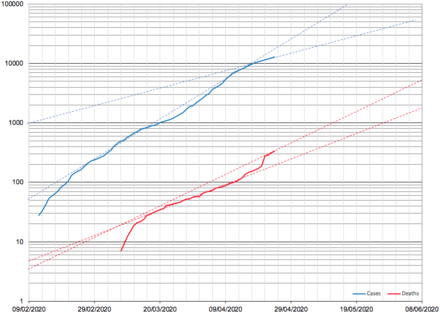
No. of total confirmed cases

No. of new cases per day

No. of deaths in total

No of deaths per day

No. of sick people

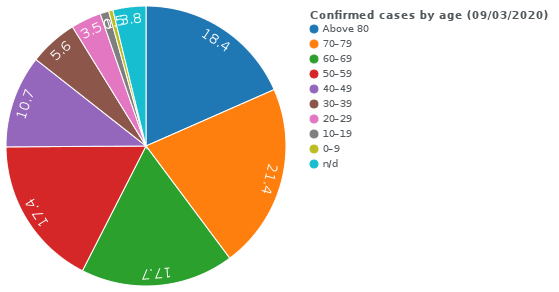
No. of active results

Notes
- The Kuril Islands are administered by Russia, six cases have been reported in the Sakhalin Oblast overall.
- Excludes cases detected on the Diamond Princess.
References
- "新型コロナウイルス感染症の現在の状況と厚生労働省の対応について(令和2年6月19日版)". 厚生勞動省 (in Japanese). 19 June 2020. Retrieved 20 June 2020.
- "WHO | Novel Coronavirus – Japan (ex-China)". WHO. Retrieved 18 March 2020.
- Iwasaki, Akiko; Grubaugh, Nathan D. (2020). "Why does Japan have so few cases of COVID‐19?". EMBO Molecular Medicine. 12 (5): e12481. doi:10.15252/emmm.202012481. PMC 7207161. PMID 32275804.
- "Expert Meeting on Control of the Novel Coronavirus Disease Control" (PDF). mhlw.go.jp. Ministry of Health, Labour and Welfare. 1 April 2020. Retrieved 17 April 2020.
- "国内のコロナ、武漢ではなく欧州から伝播? 感染研調べ:朝日新聞デジタル" [Propagation from Europe instead of domestic corona, Wuhan? Infectious disease research]. 朝日新聞デジタル (in Japanese). The Asahi Shimbun Digital. Retrieved 28 April 2020.
- National Institute of Infectious Diseases (16 April 2020). "Haplotype networks of SARS-CoV-2 infections". Archived from the original on 28 April 2020. Retrieved 28 May 2020.
- "Novel Coronavirus Response Headquarters". Prime Minister of Japan and His Cabinet. 30 January 2020. Retrieved 6 March 2020.
- "PM Abe asks all schools in Japan to temporarily close over coronavirus". Kyodo News.
- "Tokyo 2020 Olympics officially postponed until 2021". ESPN. 24 March 2020.
- Reynolds, Isabel; Nobuhiro, Emi (7 April 2020). "Japan Declares Emergency For Tokyo, Osaka as Hospitals Fill Up". Bloomberg L.P. Retrieved 7 April 2020.
- "Japan PM Abe declares nationwide state of emergency amid virus spread". Mainichi Shimbun. 16 April 2020. Retrieved 16 April 2020.
- Emiko Jozuka (24 April 2020). "Japanese mayor says men should grocery shop during pandemic as women 'take a longer time'". CNN. Retrieved 30 April 2020.
Since the start of the coronavirus outbreak, politicians have come under immense fire for their handling of the crisis, with many health experts warning of Japan's low testing capabilities and slow government responses. By mid-April, Japan had only tested about 90,000 people, compared with more than 513,000 in South Korea, which has a population of 51 million, compared to Japan's 127 million.
- Dooley B, Rich M, Inoue M (29 February 2020). "In Graying Japan, Many Are Vulnerable but Few Are Being Tested". The New York Times. ISSN 0362-4331. Retrieved 29 February 2020.
- "Japan's Abe Seeks to Defuse Virus Criticism With Cash, Testing". Bloomberg L.P. Retrieved 29 February 2020.
- Linda Sieg, Kaori Kaneko (14 May 2020). "Japan lifts emergency in most areas but not in Tokyo, Osaka". Reuters.
- NEWS, KYODO. "Japan lifts coronavirus emergency outside Tokyo, Osaka regions". Kyodo News+. Retrieved 17 May 2020.
- "緊急事態宣言、大阪、兵庫、京都を解除 首都圏と北海道、25日にも" [Emergency Declaration, Osaka, Hyogo Canceled; Tokyo Metropolitan area and Hokkaido, remains until 25th]. Jiji Press Agency (in Japanese). 21 May 2020. Retrieved 21 May 2020.
- "首都圏、25日にも判断 緊急事態宣言、関西3府県解除" [Tokyo metropolitan area, also determined on the 25th: Emergency situation declared, Kansai 3 prefectures lifted]. Nihon Keizai Shimbun (in Japanese). 21 May 2020. Retrieved 21 May 2020.
- Kyodo News (25 May 2020). "Abe declares coronavirus emergency over in Japan".
- 国立感染症研究所 (NIID) (27 April 2020). "新型コロナウイルス SARS-CoV-2 のゲノム分⼦疫学調査" (PDF).
- The Yomiuri Shimbun. "Virus strain in Japan possibly spread via Europe, U.S. since March". the-japan-news.com. Retrieved 29 April 2020.
- "WHO | Novel Coronavirus – Japan (ex-China)". WHO. Retrieved 17 January 2020.
- Walter, Sim (16 January 2020). "Japan confirms first case of infection from Wuhan coronavirus; Vietnam quarantines two tourists". The Straits Times. Archived from the original on 16 January 2020. Retrieved 16 January 2020.
- Virus strain in Japan possibly spread via Europe, U.S. since March. The Japan News (29 April 2020).Retrieved 4 May 2020.
- "Japan confirms 2nd new virus case, braces for Chinese tourist influx". Kyodo News. 24 January 2020. Archived from the original on 1 February 2020. Retrieved 8 February 2020.
- "Second Meeting of the Novel Coronavirus Response Headquarters". Prime Minister of Japan and His Cabinet, 31 January 2020.
- "Japan: Cabinet Issues Orders Relating to Infectious Disease Control Act and Quarantine Act". www.loc.gov. The Library of Congress. 11 March 2020. Retrieved 27 June 2020.
- 新型コロナウイルス感染症対策本部幹事会の構成員の官職の指定について [On the Specification of the Official Positions of the Members of the Novel Coronavirus Response Headquarters] (PDF). Prime Minister of Japan and His Cabinet. 30 January 2020.
- "新型コロナウイルスに関連した肺炎の患者の発生について(6例目)". mhlw.go.jp (in Japanese). 厚生労働省. 28 January 2020. Retrieved 27 June 2020.
- "令和2年1月28日発表分". pref.hokkaido.lg.jp (in Japanese). 北海道庁. 28 January 2020. Retrieved 27 June 2020.
- "新型コロナウイルスに関連した肺炎の患者の発生について(8例目)". mhlw.go.jp (in Japanese). 厚生労働省. 29 January 2020. Retrieved 27 June 2020.
- "新型コロナウイルスに関連した肺炎の患者の発生について(10例目)". mhlw.go.jp (in Japanese). 厚生労働省. 30 January 2020. Retrieved 27 June 2020.
- "新型コロナウイルスに関連した肺炎の患者の発生について(12例目)". mhlw.go.jp (in Japanese). 厚生労働省. 30 January 2020. Retrieved 27 June 2020.
- "新型コロナウイルスに関連した肺炎の患者の発生について(13例目)". mhlw.go.jp (in Japanese). 厚生労働省. 31 January 2020. Retrieved 27 June 2020.
- "新型肺炎患者がいたクルーズ船 横浜港に着岸せず再検疫" [Cruise ship with new pneumonia patient Re-quarantine without docking at Yokohama Port]. The Asahi Shimbun (in Japanese). 3 February 2020. Retrieved 24 May 2020.
- "Important Notice on New Restrictions related to Novel Coronavirus : Embassy of Japan in the Philippines". ph.emb-japan.go.jp. 3 February 2020. Archived from the original on 3 February 2020. Retrieved 8 February 2020.
- "Cruise ship with 3,711 on board put in quarantine at Yokohama". The Asahi Shimbun. 4 February 2020. Retrieved 27 June 2020.
- "Diamond Princess cruise ship in Japan quarantined after passenger diagnosed with coronavirus". edition.cnn.com. CNN. 4 February 2020. Retrieved 27 June 2020.
- "クルーズ船10人がウイルス感染 3人が日本人、医療機関に搬送―厚労省". 時事ドットコム (in Japanese). 5 February 2020. Retrieved 24 May 2020.
- "Updates on Diamond Princess". Princess. 4 March 2020. Archived from the original on 2 March 2020. Entries from 1 to 27 February 2020
- "Japan expands entry restrictions to virus-hit Zhejiang". Nikkei Asian Review. Retrieved 15 February 2020.
- "Japan confirms its first COVID-19 death: Health minister". CNA. 13 February 2020. Retrieved 13 February 2020.
- "Japan reports first COVID-19 death as three more domestic infection cases logged". Japan Times. 13 February 2020. ISSN 0447-5763. Retrieved 15 February 2020.
- "Taxi driver confirmed as Okinawa's first Wuhan coronavirus case". Taiwan News. Retrieved 27 June 2020.
- "新型コロナウイルス感染症 県内発生事例" (PDF). 愛知県厅. Retrieved 27 June 2020.
- "横浜港で検疫中のクルーズ船内で確認された新型コロナウイルス感染症について(第13報)" [About new coronavirus infectious disease confirmed in cruise ship under quarantine at Yokohama Port (13th report)]. www.mhlw.go.jp. 19 February 2020. Retrieved 21 February 2020.
- "First COVID-19 Coronavirus in Fukuoka". Retrieved 8 March 2020.
- "Coronavirus outbreak hits Shikoku, Nagano for first time". The Asahi Shimbun. 26 February 2020. Retrieved 26 February 2020.
- "Field Briefing: Diamond Princess COVID-19 Cases, 20 Feb Update". National Institute of Infectious Disease. 21 February 2020. Retrieved 27 June 2020.
- NEWS, KYODO. "U.S. raises travel alert to Japan due to "community spread" of virus". Kyodo News+.
- "All schools in Japan told to close until April over virus outbreak". The Japan Times Online. The Japan Times. 27 February 2020. Retrieved 27 February 2020.
- News, A. B. C. "Japan's Hokkaido declares state of emergency over virus". ABC News. Retrieved 30 April 2020.
- "新型コロナウイルス感染症 県内の状況". pref.shizuoka.jp/kinkyu (in Japanese). 静岡県庁. Retrieved 28 June 2020.
- "More Japan prefectures confirm COVID-19 cases". arabnews.jp. Jiji Press. 29 February 2020. Retrieved 27 June 2020.
- "Japan to quarantine visitors from China, South Korea: Report". CNA. Retrieved 8 March 2020.
- "South Korea suspends visas for Japanese in tit-for-tat coronavirus curbs". reuters.com. 7 March 2020. Retrieved 8 March 2020.
- "「歴史的緊急事態」指定を検討 新型コロナ感染、時期は明示せず―北村担当相" (in Japanese). 時事通信. 6 March 2020. Retrieved 10 March 2020.
- "首相「私権制約に考慮」 新型コロナ 「歴史的緊急事態」指定" (in Japanese). 東京新聞. 9 March 2020. Archived from the original on 10 March 2020. Retrieved 10 March 2020.
- "首相、新型コロナ「歴史的緊急事態」…議事録作成など義務づけへ" (in Japanese). 読売新聞. 9 March 2020. Retrieved 10 March 2020.
- "第1回佐賀県新型コロナウイルス対策本部会議" [1st Saga Prefectural Coronavirus Countermeasures Headquarters Meeting] (PDF) (in Japanese). 佐賀県庁. 13 March 2020. Retrieved 27 June 2020.
- "新型 コロナウイルス感染症患者の発生について (1例 日)" [About outbreak of new coronavirus infection patient (the first example day)] (PDF) (in Japanese). 佐賀県庁. 14 March 2020. Retrieved 27 June 2020.
- "新型コロナウイルス感染症患者の発生について" [About outbreak of new coronavirus infectious disease patient] (PDF) (in Japanese). 茨城県庁. 17 March 2020. Retrieved 27 June 2020.
- "新型コロナウイルスに関連した患者の発生について" [About outbreak of patient associated with new coronavirus] (PDF) (in Japanese). 香川県庁. 17 March 2020. Retrieved 27 June 2020.
- "新型コロナウイルス感染症の患者の発生について" [About outbreak of new coronavirus infection patient] (PDF) (in Japanese). 福井県庁. 18 March 2020. Retrieved 27 June 2020.
- "Japan to expand entry ban to more European regions". njk.or.jp. 16 March 2020. Archived from the original on 29 March 2020. Retrieved 17 March 2020.
- "People asked to refrain from Osaka-Hyogo travel". NHK World. 19 March 2020. Archived from the original on 1 April 2020. Retrieved 26 March 2020.
- "Residents Asked to Refrain from Osaka-Hyogo Travel". Nippon.com. 19 March 2020. Retrieved 26 March 2020.
- "Emergency Declared In Japanese Prefecture Hit By 2nd Wave Of Coronavirus Infections". NPR. 13 April 2020. Retrieved 19 April 2020.
- "新型コロナ 知事・市長「拡大防止、全力挙げる」 岡山60代女性感染で /岡山" [New Corona Governor/Mayor “Expansion Prevention, I will do my best” Okayama is infected with a woman in his 60s/Okayama] (in Japanese). Mainichi Shimbun. 24 March 2020. Retrieved 28 March 2020.
- "岡山で新型コロナ感染初確認 市長ら「感染拡大防止に全力」" [First confirmation of new corona infection in Okayama Mayor et al. "All efforts to prevent infection spread"] (in Japanese). Sanyo Shimbun. 22 March 2020. Retrieved 28 March 2020.
- "新型コロナウイルス感染患者の発生について(第1列目)" [About outbreak of new coronavirus infection patient (the first row)] (PDF) (in Japanese). 23 March 2020. Retrieved 27 June 2020.
- "新型コロナウイルスに関連した患者の県内での発生について" [About outbreak in the prefecture of patients related to new coronavirus] (PDF) (in Japanese). 26 March 2020. Retrieved 27 June 2020.
- "As virus cases surge, Tokyo governor says lockdown may be only way to stem rise". Japan Times. 24 March 2020. Retrieved 24 March 2020.
- "Koike warns of 'lockdown' option if infections surge in Tokyo". Asahi Shimbun. 24 March 2020. Retrieved 24 March 2020.
- "Governor of Japan's capital urges cooperation to avoid city lockdown". Reuters. 24 March 2020. Retrieved 24 March 2020.
- "Joint Statement from the International Olympic Committee and the Tokyo 2020 Organising Committee". olympic.org. IOC. 24 March 2020. Archived from the original on 24 March 2020. Retrieved 25 March 2020.
- "Tokyo now the hot spot for virus infections with 171 cases". Asahi Shimbun.
- "Tokyo governor urges people to stay indoors over weekend as virus cases spike". Japan Times.
- "Tokyo residents asked to stay indoors at weekend due to coronavirus". The Mainichi. Archived from the original on 1 April 2020. Retrieved 26 March 2020.
- "Tokyo Edges Toward Tougher Approach A-s Virus Cases Spread". Bloomberg L.P.
- "Kanagawa Pref. to Also Issue Stay-at-Home Request". Jiji Press. 26 March 2020. Retrieved 28 March 2020.
- "Prefectures urging residents to avoid travel to virus-hit Tokyo". Asahi Shimbun. 26 March 2020. Retrieved 28 March 2020.
- "3 Hanshin Tigers players test positive for coronavirus". The Japan Times. 27 March 2020. Retrieved 29 March 2020.
- "3 Hanshin Tigers Players Test Positive for Coronavirus". Jiji Press. 27 March 2020. Retrieved 29 March 2020.
- "Japan's Abe vows unprecedented stimulus as Tokyo coronavirus cases rise". Reuters. 28 March 2020.
- "Japan Set for Biggest-Ever Stimulus to Battle Virus, Abe Says". Bloomberg L.P. 28 March 2020.
- "Tokyo and Osaka at virtual standstill as PM Abe warns of explosive surge in coronavirus cases". The Strait Times. 28 March 2020.
- "PM Abe defends wife after claim she went to sakura party amid call for social distancing". The Mainichi. 28 March 2020.
- "Tokyo reports largest daily case total". NHK World-Japan. 29 March 2020. Archived from the original on 1 April 2020. Retrieved 29 March 2020.
- "Tokyo confirms 68 new coronavirus cases, record daily increase". Kyodo News. 29 March 2020. Retrieved 29 March 2020.
- "Japanese comedian Ken Shimura dies from coronavirus: NHK". Reuters. 29 March 2020.
- Grater, Tom (30 March 2020). "Comedian Ken Shimura, 'Japan's Robin Williams', Dies Of Coronavirus". Deadline.com. Retrieved 30 March 2020.
- "Japanese Comedian Ken Shimura Dies From Coronavirus at 70". The Hollywood Reporter. Retrieved 30 March 2020.
- "福岡 1歳未満の女児と母親感染確認 新型コロナ" (in Japanese). NHK. 30 March 2020. Archived from the original on 1 April 2020. Retrieved 31 March 2020.
- "富山県で初感染 京産大卒業祝賀会に参加の20代女性" (in Japanese). NHK. 30 March 2020. Archived from the original on 1 April 2020. Retrieved 31 March 2020.
- "More Coronavirus Cases Found among Kyoto Sangyo University Students". Jiji Press. 30 March 2020.
- "Sounding the coronavirus alarm for Japan's youths | NHK WORLD-JAPAN News". .nhk.or.jp. Retrieved 6 April 2020.
- "岡山 京産大卒業生の感染確認 友人と会食 感染は県内4人目" (in Japanese). NHK. 31 March 2020. Archived from the original on 1 April 2020. Retrieved 31 March 2020.
- "Calls grow for Japan PM Abe to declare state of emergency over virus". Mainichi Shimbun. Archived from the original on 1 April 2020. Retrieved 31 March 2020.
- "Koike urges Abe to decide on emergency declaration". NHK World-Japan. Archived from the original on 1 April 2020. Retrieved 1 April 2020.
- "Abe, Suga flatly deny a state of emergency is imminent". The Asahi Shimbun.
- "Japan to expand entry ban to 73 countries, regions amid virus spread". Mainichi Shimbun. 1 April 2020. Retrieved 5 April 2020.
- "Abe declares state of emergency for 7 prefectures". NHK. 7 April 2020. Archived from the original on 7 April 2020. Retrieved 7 April 2020.
- "Japan to declare emergency for 7 prefectures". NHK. 6 April 2020. Archived from the original on 7 April 2020. Retrieved 7 April 2020.
- "Japan PM Abe to declare state of emergency amid surge in virus infections". English.kyodonews.net. Retrieved 6 April 2020.
- "訃報" (PDF) (Press release). 毎日放送. 9 April 2020. Retrieved 16 April 2020.
- "岡田公伸氏死去 毎日放送取締役" [Director of Mainichi Broadcasting, Kiminobu Okada dies]. 佐賀新聞LiVE. 9 April 2020. Retrieved 16 April 2020.
- "Narita airport to close runway as traffic plunges". NHK World-Japan. 10 April 2020. Retrieved 10 April 2020.
- "Intl. flights at Narita airport drop sharply". NHK World-Japan. 10 April 2020. Retrieved 10 April 2020.
- "Japan's state of emergency extended nationwide". NHK. 17 April 2020. Archived from the original on 17 April 2020. Retrieved 17 April 2020.
- "How to get the ¥100,000 coronavirus payout from the Japanese government". The Japan Times. 21 April 2020. Retrieved 23 April 2020.
- "First coronavirus death in Hiroshima Pref reported as cases reach 200 in Chugoku region". GetHiroshima. Retrieved 14 May 2020.
- "Japan reports 25 new coronavirus deaths, highest for single day". Kyodo News. 21 April 2020. Retrieved 14 May 2020.
- "Yoshio Tateishi, former Omron president, dies of coronavirus". Nikkei Asian Review. 21 April 2020.
- "Yoshio Tateishi, former Omron president, dies of pneumonia linked to COVID-19". The Japan Times. 21 April 2020.
- "岡江久美子さん死去 63歳 新型コロナウイルス感染による肺炎で" [Kumiko Okae dies at age 63 due to pneumonia due to new coronavirus infection]. サンケイスポーツ [Sankei Sports] (in Japanese). 23 April 2020. Retrieved 16 June 2020.
- "Actress Kumiko Okae dies from coronavirus". JiJi Press (via The Japan Times). 23 April 2020.
- "Japanese actress Kumiko Okae dies after novel coronavirus infection". Kyodo News. 23 April 2020.
- "俳優の和田周さん死去 新型コロナウイルス感染で 81歳 息子は脚本家の虚淵玄氏" [Actor Shu Wada dies 81 years old due to new coronavirus infection Son is Gen Kabuchi]. Oricon News (in Japanese). 26 April 2020. Retrieved 16 June 2020.
- "俳優の和田周さん死去 81歳 新型コロナウイルス感染 大河「勝海舟」などに出演 脚本家・虚淵玄氏の父" [Actor Shu Wada dies, 81 years old, infected with new coronavirus. Appeared in Taiga "Katsu Kaishu" etc. Father of screenwriter Gen Kakubuchi]. Sponichi Annex (in Japanese). 26 April 2020. Retrieved 15 June 2020.
- "警察扱いの感染遺体15人 職員は全国73人に" [15 infected bodies treated by the police, 73 employees nationwide]. Kyodo (in Japanese). Nihon Keizai Shimbun. Kyodo News. Retrieved 14 May 2020.
- "Nishimura Slammed for Perceived Priority for PCR Test". Jiji Press. 27 April 2020.
- "Abe Admits Slow Expansion of Coronavirus Tests". Jiji Press. 30 April 2020.
- "Japan begins distributing cash handouts for virus relief". Mainichi Shimbun. 1 May 2020. Retrieved 3 May 2020.
- "Japan PM Abe regrets having missed goal of amending Constitution by 2020". The Mainichi. 3 May 2020. Retrieved 10 May 2020.
- "Abe laments missing goal of amending Japan's Constitution by 2020". The Japan Times. 3 May 2020. Retrieved 10 May 2020.
- "Japan's Shinzo Abe says he's missed goal to amend pacifist constitution by 2020". South China Morning Post. 4 May 2020. Retrieved 12 May 2020.
- "State of emergency extended to end of May". NHK World-Japan. 4 May 2020. Archived from the original on 6 May 2020. Retrieved 4 May 2020.
- "Japan's Prime Minister Expected to Extend COVID-19 State of Emergency". Voice of America. 4 May 2020. Retrieved 4 May 2020.
- "Japan urges 'new lifestyle' for long-term fight against coronavirus". The Japan Times. 5 May 2020. Retrieved 8 May 2020.
- "Govt to Shortly Announce Criteria on Lifting State of Emergency". Nippon.com. 7 May 2020. Retrieved 10 May 2020.
- "Osaka governor draws rebuke from Tokyo for hinting at lack of guidance". The Japan Times. 7 May 2020. Retrieved 10 May 2020.
- "Schools reopen in some parts of Japan after pandemic shutdown". The Japan Times. Osaka. 7 May 2020. Retrieved 7 May 2020.
- "Japan relaxes harsh virus testing guidelines, scraps rigidly rigorous fever rule". Kyodo news. Retrieved 16 May 2020.
- "Health ministry relaxes advice on consulting about PCR testing". The Asahi Shimbun. Retrieved 16 May 2020.
- "宮城でコロナ感染の80代男性死亡 東北で初の死者" [Coronavirus-infected male in his 80s died in Miyagi, the first dead in Tōhoku]. The Asahi Shimbun (in Japanese). 9 May 2020. Retrieved 10 May 2020.
- "Japan to Draw Up Biz Reopening Guidelines Soon". Nippon.com. 11 May 2020.
- "Govt. may lift state of emergency in many prefs". NHK World-Japan. 10 May 2020.
- "Quick coronavirus test kits to be approved". NHK World-Japan. 12 May 2020. Retrieved 16 May 2020.
- "Japan Approves Coronavirus Antigen Test Kit". Jiji press. 13 May 2020. Retrieved 16 May 2020.
- "東京都、新たに15人感染=111人報告漏れを公表―新型コロナ" [Tokyo announces 15 new infections = 111 missing reports-New Corona] (in Japanese). Nippon.com. 11 May 2020. Retrieved 16 May 2020.
- "Japan's Abe criticised for move on prosecutors during coronavirus crisis". Reuters. 11 May 2020.
- "Japanese celebrities lead protest tweets over Abe's legal change attempt". Mainichi Shimbun. 11 May 2020.
- "Japan celebrities break with tradition to lead anti-Abe protest on social media". South China Morning Post. 11 May 2020.
- "Japan's Version of Bill Barr Provokes an Epic Tweetstorm". Daily Beast. Retrieved 14 May 2020.
- "With public criticism growing, Japan's PM Abe driven to shelve controversial bill". The Mainichi Shimbun. 19 May 2020. Retrieved 27 June 2020.
- "Abe under fire after prosecutor seen close to him quits for gambling". Kyodo news. 22 May 2020. Retrieved 27 June 2020.
- "Abe's influence takes a hit with prosecutor scandal and bill reversal". The Japan Times. 24 May 2020. Retrieved 27 June 2020.
- 서승욱. "아베 "코로나, 방심하면 단번에 확산된다"며 한국 거론" [Abe "Corona, when guard is spread at once," cited South Korea]. 중앙일보 (in Korean). Joongang Daily Newspaper. Joongang Newspaper. Retrieved 14 May 2020.
- 김회경. "아베 "방심하면 코로나 단번에 확산"… 韓 집단감염 거론" [Abe “If you are vigilant, corona spreads at once”… cited Korean collective infection]. 한국일보 (in Korean). Hangook Daily Newspaper. Hangook Newspaper. Retrieved 14 May 2020.
- "First sumo wrestler dies of COVID-19". The Hill. Retrieved 14 May 2020.
- "Young sumo wrestler dies of Covid-19 in Japan". FMT news. Retrieved 14 May 2020.
- "Japan enters recession with 'Much worse' expected from coronavirus". Nine News. Retrieved 20 May 2020.
- "Japan's Economy Officially Enters Recession for First Time Since 2015". The Diplomat. Retrieved 20 May 2020.
- "Abe lifts coronavirus emergency in Osaka, nearby areas". Kyodo. Retrieved 21 May 2020.
- "新型コロナ、北九州市で新たに3人 福岡市では再陽性1人" (in Japanese). 西日本新問. 24 May 2020. Retrieved 28 June 2020.
- "福岡 新たに4人の感染確認 うち1人は死亡後に確認 新型コロナ" [Fukuoka 4 newly confirmed infections, including 1 confirmed after death New Corona]. NHK. Retrieved 29 May 2020.
- "PM Abe to lift state of emergency across Japan". NHK World-Japan. 25 May 2020. Retrieved 25 May 2020.
- Kazuaki Nagata (28 May 2020). "Abe Cabinet approves another ¥117 trillion relief package to fend off COVID-19 fallout". The Japan Times. Retrieved 28 May 2020.
- "「第2波」警戒、北九州で8人感染" ["Second wave" alert, 8 people infected in Kitakyushu]. TBS NEWS (in Japanese). 28 May 2020. Retrieved 7 June 2020.
- "感染拡大の北九州 市民不安の声" [Kitakyushu's voice of concern about the spread of infection]. TBS NEWS (in Japanese). 30 May 2020. Retrieved 7 June 2020.
- "新型コロナ北九州119施設休館" [The new corona Kitakyushu 119 facilities closed]. NHK (in Japanese). 31 May 2020. Retrieved 6 June 2020.
- "Facilities in Japanese city closed again". NHK World-Japan. 31 May 2020. Retrieved 7 June 2020.
- "Kitakyushu school children test positive for virus". NHK World-Japan. 31 May 2020.
- "Southwest Japan city sees 12 new coronavirus cases, cluster suspected at school". The Mainichi Shimbun. 31 May 2020.
- "Tokyo issues warning as 34 coronavirus cases confirmed". Kyodo News+. 2 June 2020. Retrieved 5 June 2020.
- "Tokyo issues coronavirus alert after 34 new daily cases reported". The Japan Times. 2 June 2020. Retrieved 5 June 2020.
- "Pro baseball players test positive for COVID-19". NHK World-Japan. 3 June 2020. Retrieved 5 June 2020.
- "Reigning CL MVP Hayato Sakamoto one of two Giants players to test positive for COVID-19". The Japan Times. 3 June 2020. Retrieved 5 June 2020.
- "Hitachi and Toshiba help boost coronavirus antigen test kit output". Nikkei Asian Review. 5 June 2020. Retrieved 5 June 2020.
- "Hitachi, Toshiba and Miraca join forces to raise output of antigen test kits". The Japan Times. 5 June 2020. Retrieved 5 June 2020.
- "Japan Minister Alarmed by Rising Virus Cases in Nightlife Sector". Nippon.com. Jiji Press. 6 June 2020.
- "Tokyo facing new infections in nightlife districts". NHK World-Japan. NHK. 6 June 2020.
- 김회경 (9 June 2020). "아베 흔들리는 사이… '포스트 아베' 선두 이시바 보폭 넓혀". 한국일보 (in Korean). Hangook Ilbo. Retrieved 9 June 2020.
- 서승욱 (9 June 2020). "아베가 휘청대자 '눈엣가시'들이 움직이기 시작했다". 중앙일보 (in Korean). Joongang Ilbo. Retrieved 9 June 2020.
- 김태균 (8 June 2020). ""이대로면 자민당은 끝장난다" 아베 비판 수위 높이는 이시바". 서울신문 (in Korean). Seoul Newspaper. Retrieved 9 June 2020.
- Yusuke Nagano (9 June 2020). "Kabukicho's open secret: Hosts forced to work despite virus risk". The Asahi Shimbun. Retrieved 10 June 2020.
- 장연제 (9 June 2020). "日도쿄 호스트클럽, 직원 확진 사실 숨기고 영업…접촉자 줄감염" [Tokyo host club, staff secret facts hidden and open… Contact string infection] (in Korean). Donga Ilbo. Retrieved 10 June 2020.
- TOMOHIRO OSAKI (9 June 2020). "Recent host-bar cluster in Kabukicho takes red-light district to a new level of notoriety". The Japan Times. Retrieved 10 June 2020.
- ""도쿄 호스트클럽 코로나 확진 감추고 영업"…'빙산일각' 우려" ["Tokyo host club corona firmly closed and opened"… 'Iceberg tip' concerns] (in Korean). 매일경제. Yeonhap. 9 June 2020. Retrieved 10 June 2020.
- "일본 "코로나 확진 감추고 영업"…'6월 말 대확산' 우려" (in Korean). 한국경제. 9 June 2020. Retrieved 10 June 2020.
- "IOC, Tokyo Olympic organizers agree to simplified games". Kyodo news+. 10 June 2020. Retrieved 11 June 2020.
- "IOC, Tokyo Olympic organizers formulate 200 ideas to simplify games". The Japan Times. 10 June 2020. Retrieved 11 June 2020.
- "IOC to finalize new 2020 Olympic plan in September". NHK News. 11 June 2020. Retrieved 11 June 2020.
- "Tokyo lifts warning about increased coronavirus infections". Kyodo News+. 12 June 2020. Retrieved 12 June 2020.
- "Tokyo lifts warning about increased coronavirus infections". The Mainichi Shimbun. 12 June 2020. Retrieved 12 June 2020.
- "Tokyo Olympic organizers have no agreement with 20% of games venues". Kyodo News+. Kyodo News Agency. 12 June 2020. Retrieved 13 June 2020.
- Stephen Wade (12 June 2020). "Tokyo Olympic head says 80% of facilities lined up for 2021". The Japan Today. The Associated Pres. Retrieved 13 June 2020.
- "Japan reports 61 new cases on Friday". NHK World-Japan. NHK. 12 June 2020. Retrieved 13 June 2020.
- "Coronavirus outbreak updates: June 12, 2020". Kyodo News+. Kyodo News Agency. 12 June 2020. Retrieved 13 June 2020.
- 김다영, 김상진. "부모 장례식 가도 못 돌아온다던 日…재입국 문턱 낮췄다" ["'Unable to return after funeral of parents?', Japan lowered threshold for re-entry"] (in Korean). 중앙일보. Retrieved 14 June 2020.
- "Tokyo to reopen almost all businesses". NHK Japan-World. NHK. 13 June 2020. Retrieved 13 June 2020.
- "Coronavirus outbreak latest: June 13, 2020". Kyodo News+. Kyodo News Agency. 13 June 2020. Retrieved 13 June 2020.
- 강민경 (14 June 2020). "日도쿄 코로나 신규확진 47명…"유흥업소 직원 다수"" [Tokyo Corona 47 new confirmations… "Many entertainment establishment employees"]. news.zum.com (in Korean). News1. 뉴스1. Retrieved 14 June 2020.
- "東京都 47人感染 新宿"夜の街"集団検査18人含む 新型コロナ" [47 people infected in Tokyo Shinjuku "night town" Group inspection including 18 people New corona]. 日本放送協会 (in Japanese). NHK. 14 June 2020. Retrieved 14 June 2020.
- "Tokyo reports 47 new COVID-19 cases, highest since May 5". japantimes.co.jp. The Japan Times. 14 June 2020. Retrieved 14 June 2020.
- "札幌 新たに7人感染確認 道内で計1170人 新型コロナウイルス" [Confirmation of 7 new infections in Sapporo A total of 1,170 people are infected with the new coronavirus]. NHK News web (in Japanese). NHK Sapporo. 14 June 2020. Retrieved 14 June 2020.
- "北九州 新たに2人感染確認 3日連続 新型コロナウイルス" [Kitakyushu newly confirmed infection of two people New corona virus for 3 consecutive days]. NHK news web (in Japanese). NHK Fukuoka. 14 June 2020. Retrieved 14 June 2020.
- "Govt., Tokyo to focus on cases in nightlife hubs". NHK World-Japan. 日本放送協会. 14 June 2020. Retrieved 14 June 2020.
- "Tokyo sees 47 new daily coronavirus infections, largest since May 5". Kyodo News+. Kyodo News Agency. 14 June 2020. Retrieved 14 June 2020.
- "Business at 20% of hospitals in Japan worse due to pandemic: survey". Kyodo News+. Kyodo News. 14 June 2020. Retrieved 14 June 2020.
- "Coronavirus outbreak latest: June 14, 2020". Kyodo News+. Kyodo News. 14 June 2020. Retrieved 14 June 2020.
- 이재준 (14 June 2020). "도쿄도 확진자 47명 추가·접객업소 18명...43일 만에 40명대" [Added 47 confirmed people in Tokyo, 18 were employees of entertainment establishment ... Cases risen around 40s in 43 days]. Newsis (in Korean). 뉴시스. Retrieved 14 June 2020.
- 김선미, 오영상. "[팬데믹 현황] 日, 코로나 재확산 우려...일일 확진자 75명으로 급증(15일 0시 기준)" [[Pendicum status] Japan, concerns about corona re-spreading... skyrocketing to 75 confirmed per day (at 00:00 on the 15th)]. Newspim (in Korean). 뉴스핌. Retrieved 15 June 2020.
- Seoyeon Kim (김서연) (16 June 2020). "일본, 최소 72명 코로나 확진…도쿄 연이틀 40명↑" [Japan confirms corona for at least 72 people... Tokyo 40 days ↑]. News1 (in Korean). Money Today. 뉴스1. Retrieved 16 June 2020.
- Kyung Tak Lee (이경탁) (16 June 2020). "日 코로나 신규 확진자 72명…도쿄도만 48명" [Japanese corona new confirmed 72 people… Tokyo Bay 48 people]. Chosun Biz (in Korean). Chosun Newspaper. 조선비즈. Retrieved 16 June 2020.
- Jaejun Lee (이재준) (16 June 2020). "日 코로나 72명 추가 수도권 '제2파 우려'" [Japan's COVID-19 cases 72 added, metropolitan areas 'second wave concern']. Newsis (in Korean). newsis.com. 뉴시스. Retrieved 16 June 2020.
- "Koike plays down surge in new COVID-19 cases in Tokyo". The Asahi Shimbun. The Asahi Shimbun Company. 15 June 2020. Retrieved 16 June 2020.
- "Tokyo reports 48 new coronavirus infections as more nightclub cases emerge". The Japan Times. The Japan Times Limited. 15 June 2020. Retrieved 16 June 2020.
- "Coronavirus outbreak latest: June 18, 2020". Kyodo News+. Retrieved 18 June 2020.
- "Record low 1,700 foreign visitors in Japan in May amid pandemic". Kyodo News+. Retrieved 18 June 2020.
- "Japan's May exports, imports log biggest year-on-year fall in decade". Kyodo News+. Retrieved 18 June 2020.
- "Japanese least satisfied with aid to firms amid pandemic, survey finds". The Japan Times. Retrieved 18 June 2020.
- "Virus relief payments to Japanese expatriates may take years". The Japan Times. Retrieved 18 June 2020.
- "国内感染者1万7759人 死者937人 (クルーズ船除く) 新型コロナ" [Domestic infected 17,759 dead 937 (excluding cruise ships) New Corona]. NHK World-Japan (in Japanese). Retrieved 18 June 2020.
- "日코로나 신규확진 70명…이동 자제요청 내일부터 전면 해제" [Japanese corona new confirmation 70 people… Request to refrain from moving completely off tomorrow]. Yonhap News (in Korean). Retrieved 18 June 2020.
- "뒤늦게 코로나앱 내놓는 일본...'제2의 아베 마스크' 되나" [Japan to release Corona app lately... could become 'second PM Abe's cloth mask']. Joongang Newspaper (in Korean). 중앙일보. Retrieved 19 June 2020.
- "日코로나앱 늑장 개통…플레이스토어에서는 검색도 안 돼" [Japanese Corona app lately appears... You can't even search on the Play Store]. Yonhap News (in Korean). 연합뉴스. Retrieved 19 June 2020.
- "Uniqlo's fast-drying face masks debut in Japan, long queue formed". Kyodo News+. Kyodo News. Retrieved 19 June 2020.
- "Japanese shoppers queue and crash website for Uniqlo's washable masks". Reutuer. The Japan Times. Retrieved 19 June 2020.
- "新たに56人の感染確認、1万8595人に 東京4日連続で30人超え" [Newly confirmed infection of 56 people, to 18,595 people in Tokyo exceeded 30 people for 4 consecutive days]. The Mainichi Shimbun (in Japanese). 毎日新聞. Retrieved 22 June 2020.
- "国内で新たに56人の感染者…東京で女性教職員1人、大阪の「クラスター」バーも新たに3人" [56 new infected people in Japan... 1 female faculty member in Tokyo, 3 new "cluster" bars in Osaka]. Yomiuri Shimbun (in Japanese). 読売新聞. Retrieved 22 June 2020.
- "都内の新規感染者は55人…1か月半ぶり50人超" [55 new infections in Tokyo... Over 50 in a month and a half] (in Japanese). Yomouri Shimbun. 24 June 2020. Retrieved 25 June 2020.
- "東京で新たに55人の感染確認 50人以上は5月5日以来 新型コロナ" [55 new infections confirmed in Tokyo, more than 50 new corona since May 5] (in Japanese). The Mainichi Shimbun. 24 June 2020. Retrieved 25 June 2020.
- "北九州市 1人感染確認 福岡県内延べ842人に 新型コロナ". NHK Fukuoka (in Japanese). 日本放送協会. Retrieved 28 June 2020.
- "Japan to beef up coronavirus panel with local officials and risk experts". The Japan Times. Retrieved 26 June 2020.
- "Tokyo reports 48 new cases of coronavirus". NHK World-Japan. Retrieved 25 June 2020.
- "Tokyo records 48 new COVID-19 cases, dipping below 50 mark". The Asahi Shimbun. Retrieved 25 June 2020.
- "Tokyo reports 48 coronavirus cases, topping 40 for second day". The Japan Times. Retrieved 25 June 2020.
- "東京都内で新たに54人の感染確認…若年層が40人" (in Japanese). Yomiuri Shimbun. Retrieved 26 June 2020.
- "東京で新たに54人感染 30人以上は4日連続". The Mainichi Shimbun (in Japanese). Retrieved 26 June 2020.
- "Tokyo confirms 54 new coronavirus cases, over 40 for third day". The Japan Times. Retrieved 26 June 2020.
- "Over 100 new coronavirus cases reported in Japan". NHK World-Japan. 日本放送協会. Retrieved 27 June 2020.
- "New coronavirus infections in Japan top 100 for 1st time since May 9". Kyodo News+. Retrieved 27 June 2020.
- "New coronavirus infections in Japan top 100 for first time since May 9". The Japan Times. Retrieved 27 June 2020.
- "Ministerial Meeting on Countermeasures Related to the Novel Coronavirus". Prime Minister of Japan and His Cabinet.
- "Japan will label coronavirus as infectious disease to fight spread". The Asahi Shimbun. Retrieved 11 March 2020.
- "Fourth Meeting of the Novel Coronavirus Response Headquarters". Prime Minister of Japan and His Cabinet, 1 February 2020.
- "Fifth Meeting of the Novel Coronavirus Response Headquarters". Prime Minister of Japan and His Cabinet. 5 February 2020. Retrieved 6 March 2020.
- [Sixth Meeting of the Novel Coronavirus Response Headquarters "Sixth Meeting of the Novel Coronavirus Response Headquarters", Prime Minister of Japan and His Cabinet, 6 February 2020]
- 新型肺炎「帰国者・接触者相談センター」設置へ 専門外来への受診を促す. Mainichi (in Japanese). 3 February 2020. Retrieved 9 March 2020.
- "Seventh Meeting of the Novel Coronavirus Response Headquarters". Prime Minister of Japan and His Cabinet, 12 February 2020.
- "Japan, alarmed by new cases, to expand, speed up coronavirus tests". The Asahi Shimbun. Retrieved 9 March 2020.
- SRL (12 February 2020). 新型コロナウイルス検査の受託について (PDF).
- "Corporate Japan rushes to devise quick coronavirus tests". Nikkei Asian Review. Retrieved 9 March 2020.
- "Ninth Meeting of the Novel Coronavirus Response Headquarters". Prime Minister of Japan and His Cabinet, 14 February 2020.
- 新型コロナウイルスに関する帰国者・接触者相談センター. Ministry of Health, Labour, and Welfare. 13 February 2020.
- 新型コロナウイルス感染症対策専門家会議の開催について (On the Opening of the First Novel Coronavirus Expert Meeting) (PDF). Prime Minister of Japan and His Cabinet. 14 February 2020. Retrieved 6 March 2020.
- Saitō, Katsuhisa (19 February 2020) "Early Stage of a Japan Outbreak: The Policies Needed to Support Coronavirus Patients". Nippon.com.
- "First Novel Coronavirus Expert Meeting". Prime Minister of Japan and His Cabinet, 19 February 2020.
- "Prevention Measures against Coronavirus Disease 2019 (COVID-19)" (PDF). 厚生労働省. Ministry of Health, Labour, and Welfare. 25 February 2020. Retrieved 20 June 2020.
- 新型コロナウイルス感染症についての相談・受診の目安について (Criterion for Consultation and Medical Examination in regard to the Novel Coronavirus Disease) (PDF). Ministry of Health, Labour, and Welfare. 17 February 2020.
- Joshua Hunt. "Japan Is Racing to Test Favipiravir, a Drug to Treat Covid-19". WIRED. Retrieved 8 April 2020.
- "Japan might approve anti-flu drug Avigan to treat coronavirus patients". The Japan Times Online. The Japan Times. 22 February 2020. Retrieved 8 April 2020.
- "Abe Orders Basic Coronavirus Policy with Eye on Epidemic". Nippon.com, 23 February 2020
- "Japanese Experts Discuss Basic Coronavirus Policy". nippon.com. 24 February 2020. Retrieved 8 March 2020.
- 新型コロナウイルス感染症対策専門家会議 (Novel Coronavirus Expert Meeting) (24 February 2020). "新型コロナウイルス感染症対策の基本方針の具体化に向けた見解 (Opinion on the Realization of Basic Policies for Novel Coronavirus Disease Control)". Ministry of Health, Labour, and Welfare.
- "Coronavirus Basic Policy Impacts Japan’s Health, Education Systems". Nippon.com, 2 March 2020
- "新型コロナウイルス感染症対策の基本方針 (Basic Policies for Novel Coronavirus Disease Control)" (PDF). Prime Minister of Japan and His Cabinet. 25 February 2020. Retrieved 6 March 2020.
- "Basic Policies for Novel Coronavirus Disease Control". Prime Minister of Japan and His Cabinet, 25 February 2020.
- "Japan to create fund to subsidize parents during school closure-Nikkei". Financial Post, 28 February 2020.
- Coronavirus: National Health Insurance to Cover Virus Test. Nippon.com, 27 February 2020
- The Government of Japan, Expert Meeting on the Novel Coronavirus Disease Control (9 March 2020). "Views on the Novel Coronavirus Disease Control (Summary Version)" (PDF). Ministry of Health, Labour and Welfare (in English). Retrieved 15 March 2020.
- 新型コロナウイルス感染症対策専門家会議 (9 March 2020). "新型コロナウイルス感染症対策の見解" (PDF) (in Japanese). Ministry of Health, Labour and Welfare. Retrieved 15 March 2020.
- NEWS, KYODO. "Japan local gov'ts urged to prepare for peak of coronavirus infections". Kyodo News+. Retrieved 12 March 2020.
- "Lawmakers slammed for using coronavirus to justify emergency clause for Japan's Constitution, curbing rights". The Japan Times, 5 February 2020.
- NEWS, KYODO. "Japan's Diet gives Abe power to declare emergency amid viral fears". Kyodo News+. Kyodo News. Retrieved 6 April 2020.
- Revised influenza law to allow Japan PM to declare state of emergency over coronavirus. The Mainichi, 5 March 2020
- NEWS, KYODO. "Japan PM Abe to declare state of emergency amid surge in virus infections". Kyodo News+. Kyodo News. Retrieved 6 April 2020.
- Tomohiro Osaki "How far can Japan go to curb the coronavirus outbreak? Not as far as you may think. The Japan Times, 1 March 2020.
- Sugiyama, Satoshi (26 March 2020). "Japan coronavirus task force may set stage for state of emergency". The Japan Times Online. ISSN 0447-5763. Retrieved 17 April 2020.
- "Koike calls for fewer outings; says state of emergency up to PM". Japan Today. Retrieved 17 April 2020.
- NEWS, KYODO. "Calls grow for Japan PM to declare state of emergency over virus". Kyodo News+. Kyodo News. Retrieved 17 April 2020.
- "Japan's cities scramble to move mild coronavirus patients to hotels". Nikkei Asian Review. Nihon Keizai Shimbun. Retrieved 17 April 2020.
- "Expert: 80% less contact can stop explosive spread | NHK WORLD-JAPAN News". NHK WORLD. NHK. Retrieved 17 April 2020.
- "Abe declares state of emergency for 7 prefectures". NHK. 7 April 2020. Archived from the original on 7 April 2020. Retrieved 7 April 2020.
- Nakagawa Saori (8 April 2020). "Abe: Crisis will peak in two weeks if human contact is reduced". nhk.or.jp/nhkworld/en/news. NHK World-Japan. 日本放送協会. Retrieved 27 June 2020.
- "Tokyo issues closure requests for 6 categories | NHK WORLD-JAPAN News". NHK WORLD. NHK. Retrieved 17 April 2020.
- "「接触7割減」では収束まで長期化 北大教授が警鐘" ["Prolonged convergence in "70% reduction in contact" will be alarmed by Professor Hokkaido University"] (in Japanese). Nihon Keizai Shimbun. Retrieved 17 April 2020.
- "新型コロナ感染拡大、接触6割減でも感染者数減らず" [The number of infected people does not decrease even if the new corona infection spreads and the contact 60% decrease]. TBS NEWS (in Japanese). Tokyo Broadcasting System. Retrieved 17 April 2020.
- "Japan to lift coronavirus emergency outside Tokyo, Osaka regions". Kyodo news. Retrieved 14 May 2020.
- Eighth Meeting of the Novel Coronavirus Response Headquarters. Prime Minister of Japan and His Cabinet, 12 February 2020.
- "COVID-19: Brief overview of Risk Governance Approach from Japan (Part 3)" (PDF). NIDM. 6 April 2020. Retrieved 27 June 2020.
- "Abe seeks opposition help for emergency virus bill as cases top 1,000". Kyodo News+. KYODO NEWS. 5 March 2020. Retrieved 27 June 2020.
- "People with Fever for 4 Days Asked to Seek Advice on Coronavirus". Jiji Press. 17 February 2020. Retrieved 28 March 2020.
- "Japan PM Abe urges people with cold-like symptoms to avoid work, school". Kyodo News. 18 February 2020. Retrieved 28 March 2020.
- "Japan's Virus Success Has Puzzled the World. Is Its Luck Running Out?". 26 March 2020. Retrieved 29 March 2020.
- "新型肺炎174人の集団感染「クルーズ船3700人隔離は正しかったのか」医師の見解は?" [Outbreak of 174 new cases of pneumonia "Is the isolation of 3700 cruise ships correct?" What is the doctor's view?]. 文春オンライン (in Japanese). 13 February 2020. Retrieved 8 June 2020.
- "新型肺炎疑いで足止めの伊客船、体調不良の乗客は陰性 下船可能に" [A passenger ship stopped due to suspected new pneumonia, negative passengers can get off]. AFP BB NEWS (in Japanese). 31 January 2020. Retrieved 8 June 2020.
- 関西テレビ放送, KTV. 「検査できない」一般の医療機関も困惑 新型コロナウイルス. ktv.jp (in Japanese).
- "Archived copy" 病院4回...でも検査できず 新型肺炎 不安の声. FNN.jp (in Japanese). Archived from the original on 27 February 2020. Retrieved 27 February 2020.CS1 maint: archived copy as title (link)
- "Archived copy" 「発熱 続いてるのに・・・」"検査難民"の不安. TBS NEWS (in Japanese). Archived from the original on 27 February 2020. Retrieved 27 February 2020.CS1 maint: archived copy as title (link)
- "Archived copy" 新型ウイルス「検査受けられず」の声相次ぐ いま現場では. NHK (in Japanese). Archived from the original on 28 February 2020. Retrieved 27 February 2020.CS1 maint: archived copy as title (link)
- "ウイルス検査できない 病院悲鳴" ウイルス検査できない 病院悲鳴. TBS NEWS (in Japanese). Archived from the original on 24 February 2020. Retrieved 27 February 2020.
- 医療機関たらい回しも 疑い受診、断られ―「検査基準あいまい」・新型肺炎:時事ドットコム. 時事通信 (in Japanese).
- "Archived copy" 暮らしを守れ 新型コロナ 受けたくてもなぜ "検査難民". FNN.jp (in Japanese). Archived from the original on 27 February 2020. Retrieved 27 February 2020.CS1 maint: archived copy as title (link)
- "Archived copy" ウイルス検査依頼も拒否される事例 日本医師会が調査へ. NHK (in Japanese). Archived from the original on 2 March 2020. Retrieved 27 February 2020.CS1 maint: archived copy as title (link)
- "Archived copy" 厚労省、PCR検査の不適切事例把握へ. TBS NEWS (in Japanese). Archived from the original on 27 February 2020. Retrieved 27 February 2020.CS1 maint: archived copy as title (link)
- "新型コロナ「五輪延期後に検査急増」は本当か 「感染隠蔽」説を検証すると…". Mainichi Shimbun (in Japanese). 28 March 2020. Retrieved 8 June 2020.
- "「五輪延期決定で検査を抑制する必要がなくなった」は誤り。検査人数が変動した事実はなし". BuzzFeed News (in Japanese). 31 March 2020. Retrieved 8 June 2020.
- Kiyoshi Takenaka and Antoni Slodkowski, "As coronavirus infections mount, Japan at last expands testing"
- "20代の感染者は日本の69人に対して韓国は2301人! PCR検査数の差か?". Yahoo!ニュース (in Japanese). 19 March 2020. Retrieved 8 June 2020.
- "感染者もPCR検査も韓国は日本の17倍!韓国の感染者急増はPCR検査数の差?". Yahoo!ニュース (in Japanese). 5 March 2020. Retrieved 8 June 2020.
- "日本のPCR検査は十分か?の疑問を徹底解説。新型コロナウイルス診断現場の実情". Business Insider (in Japanese). 18 March 2020. Retrieved 8 June 2020.
- "データでみる世界各国の新型コロナウイルスの検査状況!". データのじかん (in Japanese). 18 March 2020. Retrieved 8 June 2020.
- "新型コロナウイルスの検査 世界の検査数は? 日本の現状は?". NHK (in Japanese). 18 March 2020. Archived from the original on 18 March 2020. Retrieved 8 June 2020.
- "Coronavirus quarantine plans ignite row between South Korea and Japan". The Guardian. 6 March 2020. Retrieved 18 March 2020.
- "Japan and Korea Won't Let A Pandemic Stop Them Fighting". Foreign Policy. 12 March 2020. Retrieved 18 March 2020.
- "事実上、中国人と韓国人の入国を制限 イランも新たに対象". SankeiBiz (in Japanese). 5 March 2020. Retrieved 8 June 2020.
- "世界的な感染拡大、政府の対応は後手後手に" [Global infection spread, government response is late] (in Japanese). 東洋経済. 6 March 2020. Retrieved 8 June 2020.
- "新型コロナウイルス 日本の入国制限に韓国猛反発" [New Coronavirus: Korean opposition to Japanese entry restrictions] (in Japanese). FNNプライム. 8 March 2020. Retrieved 8 June 2020.
- "10万円給付とマイナンバー". Japan In-depth (in Japanese). dmenuニュース. 1 May 2020. Retrieved 8 June 2020.
- "マイナンバーカードを活用した現金給付に期待". Nomura Research Institute, Ltd. (in Japanese). dmenuニュース. 15 April 2020. Retrieved 8 June 2020.
- "現金10万円給付 マイナンバーは余計だ". Tokyo Shimbun (in Japanese). 13 May 2020. Retrieved 8 June 2020.
- "コロナに乗じて国民をコントロールする気か?政府「マイナンバー普及」発言にネット拒否反応". MONEY VOICE (in Japanese). MAG2NEWS. 6 March 2020. Retrieved 8 June 2020.
- "Japan government weighs mandatory linkage of My Number with bank account". The Japan Times. The Japan Times Limited. Jiji Press Agency. 8 June 2020. Retrieved 16 June 2020.
- Kazuhiko Hori (10 June 2020). "Japan gov't looks to link 1 bank account to 'My Number': minister". The Mainichi Shimbun. The Mainichi Newspaper. Retrieved 16 June 2020.
- "布マスク、検品に8億円 妊婦向けで不良品" [800 million yen for cloth masks and inspections Defective products for pregnant women]. Sankei Biz (in Japanese). 14 May 2020. Retrieved 23 May 2020.
- "【アベノマスク】届いてない妊婦用布マスクの『検品』に8億円。不良品発覚で厚労省明かす。「また税金使うの?」と疑問の声" [[Abeno Mask] 800 million yen for the "inspection" of pregnant women's cloth masks that have not arrived. The Ministry of Health, Labor and Welfare reveals defective products. "Do you use tax again?"]. HuffPost Japan (in Japanese). 14 May 2020. Retrieved 23 May 2020.
- "アベノマスク「第4の受注業者」にユースビオが入った本当の理由". AERA (in Japanese). M&A Online. 29 April 2020. Retrieved 8 June 2020.
- "渦中のユースビオ社長が「ペーパーカンパニー」疑惑に反論!「アベノマスク」生産現場の驚くべき実態". AERA (in Japanese). Asahi Shimbun. 3 May 2020. Retrieved 8 June 2020.
- "アベノマスク「国策」随契2社、深まる謎". Mainichi Shimbun (in Japanese). Mainichi Shimbunsha. 2 May 2020. Retrieved 8 June 2020.
- "マスクは首相の地元・山口県の企業が受注?「全世帯配布」で駆け巡ったツイート". Mainichi Shimbun (in Japanese). Mainichi Shimbunsha. 2 April 2020. Retrieved 8 June 2020.
- "7都府県で4月の「超過死亡」激増 東京1056人"隠れコロナ死"の可能性【#コロナとどう暮らす】" [“Excess mortality” dramatically increased in April in 7 prefectures. The possibility of “hidden corona death” in 1056 people in Tokyo [# How to live with corona]] (in Japanese). Nikkan Gendai. Retrieved 17 June 2020.
- "「統計上はコロナではないが…」東京の4月死亡者数は例年より1000人以上多い" ["Statistically it's not corona..." Tokyo has more than 1,000 deaths in April] (in Japanese). President Online. Retrieved 17 June 2020.
- "都内死者 3、4月過去最多 「超過死亡」コロナ公表人数の12倍 医療逼迫影響か" [Deaths in Tokyo: record high in March and April: 12 times the number of “excess death” coronas announced] (in Japanese). Sankei Shimbun. Retrieved 17 June 2020.
- "大相撲・勝武士を数えず…コロナ死亡者「20代ゼロ」の"誤報"を続ける厚労省の言い分" [Counting sumo wrestlers and Katsutake samurai... The Ministry of Health, Labor and Welfare continues to give "misinformation" of corona death "20s zero"] (in Japanese). Nikkan Gendai. Retrieved 17 June 2020.
- Ministry of Health, Labour and Welfare (19 March 2020). "Expert Meeting on the Novel Coronavirus Disease Control Analysis of the Response to the Novel Coronavirus (COVID-19) and Recommendations (Excerpt)" (PDF).
- Iwanaga, Naoko. "「今はまだ諦める時期じゃない」「一斉休校は議論していない」 新型コロナ専門家会議の委員が協力を呼びかけること". BuzzFeed. Retrieved 12 May 2020.
- "新型コロナウイルス クラスター対策班の設置について" (in Japanese). Ministry of Health, Labour and Welfare. Retrieved 18 March 2020.
- "新型コロナウイルス感染症 クラスター対策による感染拡大防止" (PDF) (in Japanese). Ministry of Health, Labour and Welfare. 25 February 2020. Retrieved 18 March 2020.
- "Japan's contact-tracing method is old but gold" [Despite its high-tech prowess, Japan has taken an almost quaintly old-fashioned approach to contact tracing]. The Asia Times. June 2020. Retrieved 5 June 2020.
- "Battling the coronavirus: An interview with Professor Kawaoka Yoshihiro | NHK WORLD-JAPAN News". NHK WORLD. Retrieved 12 May 2020.
- Ministry of Health, Labour and Welfare (9 March 2020). "新型コロナウイルス感染症対策専門家会議 「新型コロナウイルス感染症対策の見解」" (PDF).
- Ministry of Health, Labour and Welfare (22 April 2020). "Expert Meeting on the Novel Coronavirus Disease Control Analysis and Recommendations of the Response to the Novel Coronavirus (COVID-19)" (PDF).
- Ministry of Health, Labour and Welfare (4 May 2020). "新型コロナウイルスを想定した「新しい生活様式」を公表しました".
- "新型コロナ:道内の発生状況 | 保健福祉部健康安全局地域保健課". www.pref.hokkaido.lg.jp. Retrieved 20 February 2020.
- "新型肺炎患者、道内で初確認 中国人女性、道内で入院" [New pneumonia patient, first confirmed in Hokkaido, Chinese woman hospitalised in Hokkaido]. Hokkaido Shimbun (in Japanese). 28 January 2020. Retrieved 25 March 2020.
- "新型肺炎 道民が初感染 50代男性、容体は重篤" [New-type pneumonia first infections in residents, male in his fifties falls severely ill]. Tomakomai Minpō (in Japanese). 15 February 2020. Retrieved 25 March 2020.
- "新たなステージへ(コロナ)" [A new stage of coronavirus]. Hokkaido Government (in Japanese). Retrieved 25 March 2020.
- "愛知県内の感染者・遺伝子検査件数 – 愛知県". www.pref.aichi.jp. Retrieved 18 March 2020.
- "「クラスター 名古屋市中心に2つ発生」愛知県知事". NHK (in Japanese). 5 March 2020. Archived from the original on 12 March 2020. Retrieved 1 April 2020.
- "Japan reports 20th case of coronavirus as Abe vows new steps to combat outbreak". Japan Times. 1 February 2020. ISSN 0447-5763. Archived from the original on 1 February 2020. Retrieved 1 February 2020.
- "South Korea says Chinese tour guide arriving from Japan found to be infected with coronavirus". Japan Times. 1 February 2020. ISSN 0447-5763. Archived from the original on 1 February 2020. Retrieved 1 February 2020.
- Pearl Bantillo (18 May 2020). "Japan economy falls into recession; Q1 GDP contracts 3.4% year on year".
- Takahashi, Ryusei (31 January 2020). "Amid virus outbreak, Japan stores scramble to meet demand for face masks". Japan Times. ISSN 0447-5763. Archived from the original on 1 February 2020. Retrieved 1 February 2020.
- "Japan seeks to contain economic impact of virus, new measures come into effect". Reuters. 1 February 2020. Archived from the original on 1 February 2020. Retrieved 1 February 2020.
- Pfanner, Eric (30 January 2020). "Chinese tourists finding they are no longer welcome as fear over coronavirus takes hold". Japan Times. ISSN 0447-5763. Archived from the original on 31 January 2020. Retrieved 31 January 2020.
- Siripala, Thisanka (13 February 2020). "Will Japan's Economy Buckle Under the Coronavirus Outbreak?". thediplomat.com. Retrieved 14 February 2020.
- Nohara, Yoshiaki (31 January 2020). "Japan Considers Extra Spending Over Coronavirus's Impact on Tourism". MSN. Archived from the original on 31 January 2020.
- "Chinese coronavirus fear spreads over luxury, retail sectors". spglobal.com. Archived from the original on 1 February 2020. Retrieved 1 February 2020.
- "Coronavirus Delays Nintendo Switch Production, Shipments for Japan". Anime News Network.
- "Nintendo halts Switch shipments in Japan as orders surge". Nikkei Asian Review. Retrieved 8 April 2020.
- "名古屋高速 料金所事務員が新型コロナ感染 6料金所を閉鎖". NHKニュース. Archived from the original on 13 March 2020. Retrieved 25 February 2020.
- "Sumo: Spring meet unlikely to be held in "regular" fashion: JSA". Kyodo News. 28 February 2020. Retrieved 28 February 2020.
- Coronavirus Forces Bettors Online in Japan
- "IOC, IPC, Tokyo 2020 Organising Committee and Tokyo Metropolitan Government Announce New Dates for the Olympic and Paralympic Games Tokyo 2020". olympic.org. 30 March 2020. Retrieved 30 March 2020.
- Pavitt, Michael (20 March 2020). "Rescheduled Tokyo 2020 Olympics to open on July 23 in 2021". insidethegames.biz. Retrieved 20 March 2020.
- "Abe: Next 2 weeks 'crucial' in virus battle NHK WORLD-JAPAN News". NHK World Japan. 26 February 2020. Archived from the original on 9 March 2020. Retrieved 16 March 2020.
- "Organizers asked for event cancellations for two weeks amid coronavirus spread". KYODO NEWS. 27 February 2020. Retrieved 5 April 2020.
- アニメイベント「AnimeJapan 2020」も中止 新型コロナウイルスの拡大で. IT Media (in Japanese). 27 February 2020. Retrieved 6 March 2020.
- "Tokyo Disneyland to stay closed through early April due to virus". Reuters. 11 March 2020. Retrieved 8 April 2020.
- "Tokyo Disneyland Extends Shutdown, May See Longest-Ever Closure". Bloomberg News. 11 March 2020. Retrieved 8 April 2020.
- Davis, River (19 March 2020). "Coronavirus Puts Hopes Pinned to Tokyo Olympics Tourists in Jeopardy". Wall Street Journal. ISSN 0099-9660. Retrieved 8 April 2020.
- Bevil, Dewayne (20 March 2020). "Legoland Japan set to reopen Monday after three-week coronavirus closure". Orlando Sentinel. Retrieved 23 March 2020.
- "Japan quietly reopens as much of world locks down". Nikkei Asian Review. Retrieved 8 April 2020.
- "Tokyo Disneyland won't reopen before April 20, operator says". Japan Today. Retrieved 8 April 2020.
- "Major theme parks in Japan extend closures". NHK World. 27 March 2020. Retrieved 8 April 2020.
- 東京MX、新型肺炎でアニメ「とある科学の超電磁砲T」放送延期 「制作上の都合がつかず」. IT Media (in Japanese). 17 February 2020. Retrieved 6 March 2020.
- TVアニメ『A3!』「SEASON SPRING & SUMMER」第4話以降の放送が延期に. Animate Times (in Japanese). Retrieved 6 March 2020.
- "「魔進戦隊キラメイジャー」主人公役の小宮璃央が新型コロナ感染" (in Japanese). Livedoor. 31 March 2020. Retrieved 31 March 2020.
- "ACTOR NEWSKiramaRed Actor Rio Komiya Tests Positive for COVID-19". Tokusatsu Network. 31 March 2020. Retrieved 31 March 2020.
- "東映東京撮影所は消毒作業 レッド役がコロナ陽性" (in Japanese). Nikkan Sports. 31 March 2020. Retrieved 31 March 2020.
- "Japan's Toei Closes Tokyo Studio After Coronavirus Infection". Variety. 31 March 2020. Retrieved 31 March 2020.
- Schilling, Mark (25 March 2020). "Japan's Ken Shimura Infected by Coronavirus, 'God of Cinema' Filming Halted". Variety. Retrieved 8 April 2020.
- "Japan comedian Ken Shimura dies after coronavirus infection". Nikkei Asian Review. 29 March 2020. Retrieved 30 March 2020.
- "Japanese comedian Ken Shimura dies from coronavirus". Reuters. 29 March 2020. Retrieved 30 March 2020.
- "日テレ、4月期ドラマ『ハケンの品格』『未満警察』の初回延期へ". Oricon news (in Japanese). Retrieved 8 May 2020.
- "「半沢直樹」「MIU404」「わたナギ」が放送延期、新型コロナ流行で撮影に遅れ". Natalie (in Japanese). Retrieved 8 May 2020.
- "石原さとみ、西野七瀬ら延期の『アンサング・シンデレラ』集合写真 「待ってます」の声". @nifty news (in Japanese). Retrieved 8 May 2020.
- "鈴木保奈美 「スーツ2」放送中断に「残念で悔しく悲しく…少し泣いた」それでも「負けませんよ」". Sponichi Annex (in Japanese). Retrieved 8 May 2020.
- "NHK、ドラマ3作放送延期発表". モデルプレス (in Japanese). 6 April 2020. Retrieved 8 May 2020.
- "NHKドラマ3本延期発表、新型コロナ拡大の影響で". Nikkan Sports (in Japanese). 5 April 2020. Retrieved 8 May 2020.
- "Chibi Maruko-chan Anime Delays New Episodes Due to COVID-19". Anime News Network. 26 April 2020. Retrieved 8 May 2020.
- Chappell B. "Coronavirus Updates: Italy Reports 650 Cases And 17 Deaths". NPR.org. Retrieved 15 March 2020.
- NEWS, KYODO. "Hokkaido eyes temporary shutdown of all schools to fight coronavirus". Kyodo News+. Retrieved 15 March 2020.
- "Almost 99% of Japan's public elementary schools shut as COVID-19 spreads". The Japan Times Online. 5 March 2020. ISSN 0447-5763. Retrieved 15 March 2020.
- "This is a good time to change Japan's academic year". The Japan Times. 9 April 2020. Retrieved 6 June 2020.
- "Japan shouldn't rush decision on academic year, scholars caution". The Japan Times. 11 May 2020. Retrieved 6 June 2020.
- 龙玥. "日本民间捐100万口罩驰援武汉" [Japanese people donate 1 million masks to support Wuhan]. 观察者网 (in Chinese). Shanghai. Retrieved 8 March 2020.
- "《武漢肺炎》中國自嗨?日媒:日本捐百萬口罩 事主出面打臉 – 國際 – 自由時報電子報". 自由電子報 (in Chinese). 27 January 2020. Archived from the original on 28 January 2020. Retrieved 4 February 2020.
- "中国に100万枚以上のマスク寄付。日本企業や市、新型コロナウイルス感染拡大で" (in Japanese). Yahoo! Japan. 28 January 2020.
- Consulate General of Japan in Chongqing (28 January 2020). "日本水户市向重庆市捐赠50000份医用口罩" (in Chinese). Archived from the original on 30 January 2020. Retrieved 7 February 2020.
- ""山川異域,風月同天":外交部感謝日本協助抗疫的暖心舉動" (in Chinese). 4 February 2020. Archived from the original on 5 February 2020. Retrieved 6 February 2020.
- "日本執政黨國會議員每人將向中國捐款5000日元" (in Chinese). The Nikkei. Archived from the original on 15 February 2020. Retrieved 14 February 2020.
- Kaila Imada (6 April 2020). "100-year-old Hirosaki Cherry Blossom Festival in Aomori is cancelled this year". Time Out Tokyo. Retrieved 6 April 2020.
- "黒石ねぷた祭り中止決定 65年の歴史で初" [Kuroishi Neputa Matsuri cancelled for the first time in its 65-year-long history]. Mutsu Shimpō (in Japanese). 6 April 2020. Retrieved 6 April 2020.
- "青森ねぶた祭中止 正式決定 新型コロナウイルス" [Officials cancel Aomori Nebuta Festival due to coronavirus]. NHK (in Japanese). 8 April 2020. Archived from the original on 17 April 2020. Retrieved 8 April 2020.
- "博多山笠、来夏へ「延期」 博多松囃子も". Nishinippon Shimbun (in Japanese). 20 April 2020. Retrieved 10 May 2020.
- "博多山笠、開催見送り 戦後初めて". Nihon Keizai Shimbun (in Japanese). 20 April 2020. Retrieved 10 May 2020.
- "CORONA SUNSETS FESTIVAL 2020 の開催について | Corona SUNSETS FESTIVAL".
- 広島みなと花火、20年夏は開催中止 五輪で警備員不足 日本経済新聞 2019. 10. 31. Translation: Also "Miyajima underwater fireworks" to be held in Miyajima in late August every year (Hatsukaichi, Hiroshima Prefecture), has decided to hold discontinuation of 20 years for the same reason.
- Notice of postponement of Sansha Festival Asakusa Shrine 2020.04.01 Translation:This postponement will be applied to all annual festival events including Shinto ceremonies such as “Headquarters Mikoshi Town Tomi”. As for the method of travel, the highest priority is to ensure safety, and the decision will be made on August 31st.
- "Coronavirus (COVID-19) advisory information | Travel Japan | JNTO". Japan National Tourism Organization (JNTO). Retrieved 1 May 2020.
- "新型コロナウイルス(日本からの渡航者・日本人に対する 各国・地域の入国制限措置及び入国・入域後の行動制限)". Ministry of Foreign Affairs of Japan. Archived from the original on 9 March 2020. Retrieved 12 March 2020.
- De 2020, 12 De Marzo. "El Gobierno suspendió por 30 días todos los vuelos internacionales provenientes de zonas afectadas por el coronavirus". Infobae (in Spanish). Retrieved 13 March 2020.
- "Coronavirus: visas suspendidas transitoriamente a extranjeros". El Canciller (in Spanish). 12 March 2020. Retrieved 13 March 2020.
- "18 countries, regions restricting entry from Japan over virus". Mainichi Daily News. 3 March 2020. Retrieved 15 March 2020.
- "More countries, regions restrict entry from Japan". NHK WORLD-Japan News. Archived from the original on 5 March 2020. Retrieved 5 March 2020.
- "Kazakhstan bars entry for nationals of China, Japan, Iran, Italy, South Korea". akipress.com. Retrieved 7 March 2020.
- Stephanie Busari; Bukola Adebayo. "Nigeria bans entry for travelers from 13 countries as it announces five new cases of coronavirus". CNN. Retrieved 18 March 2020.
- "Papua New Guinea bans travellers from all 'Asian ports'". news.yahoo.com. Retrieved 5 March 2020.
- "IATA – International Travel Document News". www.iatatravelcentre.com. Retrieved 9 March 2020.
- "Tajikistan shuts border to nationals of 35 countries: sources". Reuters. 2 March 2020. Retrieved 5 March 2020.
- "Template:2019-nCoV_Data/日本の症例発生数" (in Japanese). Retrieved 27 June 2020.
- "長崎県内の発生状況(最新状況)" (in Japanese).
- "特設サイト 新型コロナウイルス 都道府県別の感染者数・感染者マップ" (in Japanese).
- "新型コロナウイルス感染症の現在の状況と厚生労働省の対応について(令和2年2月5日版)". www.mhlw.go.jp (in Japanese). Retrieved 10 March 2020.
- "新型コロナウイルス感染症の現在の状況と厚生労働省の対応について(令和2年2月6日版)". www.mhlw.go.jp (in Japanese). Retrieved 10 March 2020.
- "Coronavirus disease 2019 (COVID-19) – Situation Report – 23" (PDF). WHO. 12 February 2020. Archived (PDF) from the original on 16 February 2020. Retrieved 16 February 2020.
- "Coronavirus disease 2019 (COVID-19) – Situation Report – 24" (PDF). WHO. 13 February 2020. Archived (PDF) from the original on 17 February 2020. Retrieved 16 February 2020.
- "Coronavirus disease 2019 (COVID-19) – Situation Report – 25" (PDF). WHO. 14 February 2020. Archived (PDF) from the original on 18 February 2020. Retrieved 16 February 2020.
- "Coronavirus disease 2019 (COVID-19) – Situation Report – 26" (PDF). WHO. 15 February 2020. Archived (PDF) from the original on 16 February 2020. Retrieved 16 February 2020.
- "Coronavirus disease 2019 (COVID-19) – Situation Report – 27" (PDF). WHO. 16 February 2020. Archived (PDF) from the original on 17 February 2020. Retrieved 16 February 2020.
- "Coronavirus disease 2019 (COVID-19) – Situation Report – 28" (PDF). WHO. 17 February 2020. Archived (PDF) from the original on 17 February 2020. Retrieved 17 February 2020.
- "Coronavirus disease 2019 (COVID-19) – Situation Report – 29" (PDF). WHO. 18 February 2020. Archived (PDF) from the original on 18 February 2020. Retrieved 18 February 2020.
- "報道発表一覧(新型コロナウイルス)". www.mhlw.go.jp (in Japanese). Retrieved 19 February 2020.
- "感染症情報のトピックス". www.mhlw.go.jp (in Japanese). Retrieved 19 February 2020.
- "新型コロナウイルス感染症の現在の状況と厚生労働省の対応について(令和2年2月21日版)". www.mhlw.go.jp (in Japanese). Retrieved 5 March 2020.
- "国内の状況について(2月22日12時時点版)". www.mhlw.go.jp (in Japanese). Retrieved 5 March 2020.
- "国内の状況について(2月23日12時時点版)". www.mhlw.go.jp (in Japanese). Retrieved 5 March 2020.
- "国内の状況について(2月24日12時時点版)". www.mhlw.go.jp (in Japanese). Retrieved 5 March 2020.
- "新型コロナウイルス感染症の現在の状況と厚生労働省の対応について(令和2年2月25日版)". www.mhlw.go.jp (in Japanese). Retrieved 5 March 2020.
- "新型コロナウイルス感染症の現在の状況と厚生労働省の対応について(令和2年2月26日版)". www.mhlw.go.jp (in Japanese). Retrieved 5 March 2020.
- "新型コロナウイルス感染症の現在の状況と厚生労働省の対応について(令和2年2月27日版)". www.mhlw.go.jp (in Japanese). Retrieved 5 March 2020.
- "新型コロナウイルス感染症の現在の状況と厚生労働省の対応について(令和2年2月28日版)". www.mhlw.go.jp (in Japanese). Retrieved 5 March 2020.
- "国内の状況について(2月29日12時時点版)". www.mhlw.go.jp (in Japanese). Retrieved 10 March 2020.
- "国内の状況について(3月1日12時時点版)". www.mhlw.go.jp (in Japanese). Retrieved 5 March 2020.
- "新型コロナウイルス感染症の現在の状況と厚生労働省の対応について(令和2年3月2日版)". www.mhlw.go.jp (in Japanese). Retrieved 5 March 2020.
- "新型コロナウイルス感染症の現在の状況と厚生労働省の対応について(令和2年3月3日版)". www.mhlw.go.jp (in Japanese). Retrieved 5 March 2020.
- "新型コロナウイルス感染症の現在の状況と厚生労働省の対応について(令和2年3月4日版)". www.mhlw.go.jp (in Japanese). Retrieved 5 March 2020.
- "新型コロナウイルス感染症の現在の状況と厚生労働省の対応について(令和2年3月5日版)". www.mhlw.go.jp (in Japanese). Retrieved 5 March 2020.
- "新型コロナウイルス感染症の現在の状況と厚生労働省の対応について(令和2年3月6日版)". www.mhlw.go.jp (in Japanese). Retrieved 10 March 2020.
- "新型コロナウイルス 日本国内の最新感染状況マップ". NewsDigest (in Japanese). Retrieved 8 March 2020.
- "新型コロナウイルス感染症の現在の状況について(3月7日12時時点版)". www.mhlw.go.jp (in Japanese). Retrieved 10 March 2020.
- "新型コロナウイルス感染症の現在の状況について(3月8日12時時点版)". www.mhlw.go.jp (in Japanese). Retrieved 10 March 2020.
- "新型コロナウイルス感染症の現在の状況と厚生労働省の対応について(令和2年3月9日版)". www.mhlw.go.jp (in Japanese). Retrieved 10 March 2020.
- "新型コロナウイルス感染症の現在の状況と厚生労働省の対応について(令和2年3月10日版)". www.mhlw.go.jp (in Japanese). Retrieved 12 March 2020.
- "新型コロナウイルス感染症の現在の状況と厚生労働省の対応について(令和2年3月11日版)". www.mhlw.go.jp (in Japanese). Retrieved 12 March 2020.
- "新型コロナウイルス感染症の現在の状況と厚生労働省の対応について(令和2年3月12日版)". www.mhlw.go.jp (in Japanese). Retrieved 13 March 2020.
- "新型コロナウイルス感染症の現在の状況と厚生労働省の対応について(令和2年3月13日版)". www.mhlw.go.jp (in Japanese). Retrieved 17 March 2020.
- "新型コロナウイルス感染症の現在の状況について(3月14日12時時点版)". www.mhlw.go.jp (in Japanese). Retrieved 17 March 2020.
- "新型コロナウイルス感染症の現在の状況について(3月15日12時時点版)". www.mhlw.go.jp (in Japanese). Retrieved 17 March 2020.
- "新型コロナウイルス感染症の現在の状況と厚生労働省の対応について(令和2年3月16日版)". www.mhlw.go.jp (in Japanese). Retrieved 17 March 2020.
- "新型コロナウイルス感染症の現在の状況と厚生労働省の対応について(令和2年3月17日版)". www.mhlw.go.jp (in Japanese). Retrieved 18 March 2020.
- "新型コロナウイルス感染症の現在の状況と厚生労働省の対応について(令和2年3月18日版)". www.mhlw.go.jp (in Japanese). Retrieved 18 March 2020.
- "新型コロナウイルス感染症の現在の状況と厚生労働省の対応について(令和2年3月19日版)". www.mhlw.go.jp (in Japanese). Retrieved 20 March 2020.
- "新型コロナウイルス感染症の現在の状況について(令和2年3月20日版)". www.mhlw.go.jp (in Japanese). Retrieved 21 March 2020.
- "新型コロナウイルス感染症の現在の状況について(令和2年3月21日版)". www.mhlw.go.jp (in Japanese). Retrieved 23 March 2020.
- "新型コロナウイルス感染症の現在の状況について(令和2年3月22日版)". www.mhlw.go.jp (in Japanese). Retrieved 23 March 2020.
- "新型コロナウイルス感染症の現在の状況と厚生労働省の対応について(令和2年3月23日版)". www.mhlw.go.jp (in Japanese). Retrieved 24 March 2020.
- "新型コロナウイルス感染症の現在の状況と厚生労働省の対応について(令和2年3月24日版)". www.mhlw.go.jp (in Japanese). Retrieved 26 March 2020.
- "新型コロナウイルス感染症の現在の状況と厚生労働省の対応について(令和2年3月25日版)". www.mhlw.go.jp (in Japanese). Retrieved 26 March 2020.
- "新型コロナウイルス感染症の現在の状況と厚生労働省の対応について(令和2年3月26日版)". www.mhlw.go.jp (in Japanese). Retrieved 27 March 2020.
- "新型コロナウイルスに関連した患者等の発生について(3月26日公表分)". www.mhlw.go.jp (in Japanese). Retrieved 27 March 2020.
- "新型コロナウイルス感染症の現在の状況について(令和2年3月28日版)". www.mhlw.go.jp (in Japanese). Retrieved 26 April 2020.
- "新型コロナウイルス感染症の現在の状況について(令和2年3月29日版)". www.mhlw.go.jp (in Japanese). Retrieved 26 April 2020.
- "新型コロナウイルス感染症の現在の状況と厚生労働省の対応について(令和2年3月30日版)". www.mhlw.go.jp (in Japanese). Retrieved 26 April 2020.
- "新型コロナウイルス感染症の現在の状況と厚生労働省の対応について(令和2年3月31日版)". www.mhlw.go.jp (in Japanese). Retrieved 26 April 2020.
- "新型コロナウイルス感染症の現在の状況と厚生労働省の対応について(令和2年4月1日版)". www.mhlw.go.jp (in Japanese). Retrieved 2 April 2020.
- "【新型コロナ】国内の感染状況". 西日本新聞ニュース (in Japanese). Archived from the original on 2 April 2020. Retrieved 2 April 2020.
- "新型コロナウイルス感染症の現在の状況と厚生労働省の対応について(令和2年4月2日版)". www.mhlw.go.jp (in Japanese). Retrieved 26 April 2020.
- "新型コロナウイルス感染症の現在の状況と厚生労働省の対応について(令和2年4月3日版)". www.mhlw.go.jp (in Japanese). Retrieved 26 April 2020.
- "【新型コロナ】国内の感染状況". 西日本新聞ニュース (in Japanese). Archived from the original on 4 April 2020. Retrieved 4 April 2020.
- "新型コロナウイルス感染症の現在の状況について(令和2年4月4日版)". www.mhlw.go.jp (in Japanese). Retrieved 26 April 2020.
- "【新型コロナ】国内の感染状況". 西日本新聞ニュース (in Japanese). Archived from the original on 5 April 2020. Retrieved 5 April 2020.
- "新型コロナウイルス感染症の現在の状況について(令和2年4月5日版)". www.mhlw.go.jp (in Japanese). Retrieved 26 April 2020.
- "【新型コロナ】国内の感染状況". 西日本新聞ニュース (in Japanese). Archived from the original on 6 April 2020. Retrieved 6 April 2020.
- "新型コロナウイルス感染症の現在の状況と厚生労働省の対応について(令和2年4月6日版)". www.mhlw.go.jp (in Japanese). Retrieved 26 April 2020.
- "【新型コロナ】国内の感染状況". 西日本新聞ニュース (in Japanese). Archived from the original on 7 April 2020. Retrieved 7 April 2020.
- "新型コロナウイルス感染症の現在の状況と厚生労働省の対応について(令和2年4月7日版)". www.mhlw.go.jp (in Japanese). Retrieved 26 April 2020.
- "【新型コロナ】国内の感染状況". 西日本新聞ニュース (in Japanese). Archived from the original on 8 April 2020. Retrieved 8 April 2020.
- "国内感染、新たに362人確認 東京で1人死亡". 東京新聞 TOKYO Web (in Japanese). Retrieved 8 April 2020.
- "新型コロナウイルス感染症の現在の状況と厚生労働省の対応について(令和2年4月9日版)". www.mhlw.go.jp (in Japanese). Retrieved 26 April 2020.
- "【新型コロナ】国内の感染状況". 西日本新聞ニュース (in Japanese). Archived from the original on 10 April 2020. Retrieved 10 April 2020.
- "新型コロナウイルス感染症の現在の状況と厚生労働省の対応について(令和2年4月10日版)". www.mhlw.go.jp (in Japanese). Retrieved 26 April 2020.
- "【新型コロナ】国内の感染状況". 西日本新聞ニュース (in Japanese). Archived from the original on 11 April 2020. Retrieved 11 April 2020.
- "新型コロナウイルス感染症の現在の状況について(令和2年4月11日版)". www.mhlw.go.jp (in Japanese). Retrieved 26 April 2020.
- "【新型コロナ】国内の感染状況". 西日本新聞ニュース (in Japanese). Archived from the original on 12 April 2020. Retrieved 12 April 2020.
- "新型コロナウイルス感染症の現在の状況について(令和2年4月12日版)". www.mhlw.go.jp (in Japanese). Retrieved 26 April 2020.
- "新型コロナウイルス感染症の現在の状況と厚生労働省の対応について(令和2年4月13日版)". www.mhlw.go.jp (in Japanese). Retrieved 26 April 2020.
- "【新型コロナ】国内の感染状況". 西日本新聞ニュース (in Japanese). Archived from the original on 14 April 2020. Retrieved 14 April 2020.
- "新型コロナウイルス感染症の現在の状況と厚生労働省の対応について(令和2年4月14日版)". www.mhlw.go.jp (in Japanese). Retrieved 26 April 2020.
- "【新型コロナ】国内の感染状況". 西日本新聞ニュース (in Japanese). Archived from the original on 15 April 2020. Retrieved 15 April 2020.
- "新型コロナウイルス感染症の現在の状況と厚生労働省の対応について(令和2年4月15日版)". www.mhlw.go.jp (in Japanese). Retrieved 26 April 2020.
- "国内の新型コロナウイルス感染者 写真". 西日本新聞ニュース (in Japanese). Retrieved 16 April 2020.
- "新型コロナウイルス感染症の現在の状況と厚生労働省の対応について(令和2年4月16日版)". www.mhlw.go.jp (in Japanese). Retrieved 26 April 2020.
- "【新型コロナ】九州の感染者数の推移と国内の感染状況". 西日本新聞ニュース (in Japanese). Archived from the original on 17 April 2020. Retrieved 17 April 2020.
- "新型コロナウイルス感染症の現在の状況と厚生労働省の対応について(令和2年4月17日版)". www.mhlw.go.jp (in Japanese). Retrieved 26 April 2020.
- "【新型コロナ】九州の感染者数の推移と国内の感染状況". 西日本新聞ニュース (in Japanese). Archived from the original on 18 April 2020. Retrieved 18 April 2020.
- "新型コロナウイルス感染症の現在の状況について(令和2年4月18日版)". www.mhlw.go.jp (in Japanese). Retrieved 26 April 2020.
- "【新型コロナ】九州の感染者数の推移と国内の感染状況". 西日本新聞ニュース (in Japanese). Archived from the original on 19 April 2020. Retrieved 19 April 2020.
- "新型コロナウイルス感染症の現在の状況について(令和2年4月19日版)". www.mhlw.go.jp (in Japanese). Retrieved 26 April 2020.
- "【新型コロナ】九州の感染者数の推移と国内の感染状況". 西日本新聞ニュース (in Japanese). Archived from the original on 19 April 2020. Retrieved 19 April 2020.
- "新型コロナウイルス感染症の現在の状況と厚生労働省の対応について(令和2年4月20日版)". www.mhlw.go.jp (in Japanese). Retrieved 26 April 2020.
- "国内の新型コロナウイルス感染者 写真". 西日本新聞ニュース (in Japanese). Retrieved 24 April 2020.
- "新型コロナウイルス感染症の現在の状況と厚生労働省の対応について(令和2年4月20日版)". www.mhlw.go.jp (in Japanese). Retrieved 26 April 2020.
- "国内の新型コロナウイルス感染者 写真". 西日本新聞ニュース (in Japanese). Retrieved 24 April 2020.
- "新型コロナウイルス感染症の現在の状況と厚生労働省の対応について(令和2年4月22日版)". www.mhlw.go.jp (in Japanese). Retrieved 26 April 2020.
- "国内の新型コロナウイルス感染者 写真". 西日本新聞ニュース (in Japanese). Retrieved 24 April 2020.
- "新型コロナウイルス感染症の現在の状況と厚生労働省の対応について(令和2年4月24日版)". www.mhlw.go.jp (in Japanese). Retrieved 26 April 2020.
- "国内の新型コロナウイルス感染者 写真". 西日本新聞ニュース (in Japanese). Retrieved 24 April 2020.
- "新型コロナウイルス感染症の現在の状況について(令和2年4月25日版)". www.mhlw.go.jp (in Japanese). Retrieved 26 April 2020.
- "国内の新型コロナウイルス感染者 写真". 西日本新聞ニュース (in Japanese). Retrieved 26 April 2020.
- "新型コロナウイルス感染症の現在の状況について(令和2年4月25日版)". www.mhlw.go.jp (in Japanese). Retrieved 26 April 2020.
- "国内の新型コロナウイルス感染者 写真". 西日本新聞ニュース (in Japanese). Retrieved 26 April 2020.
- "新型コロナウイルス感染症の現在の状況について(令和2年4月26日版)". www.mhlw.go.jp (in Japanese). Retrieved 26 April 2020.
- "国内の新型コロナウイルス感染者 写真". 西日本新聞ニュース (in Japanese). Retrieved 26 April 2020.
- "Japan COVID-19 Coronavirus Tracker". covid19japan.com. Retrieved 6 May 2020.
- "新型コロナ:道内の発生状況 | 保健福祉部健康安全局地域保健課". www.pref.hokkaido.lg.jp. Retrieved 20 February 2020.
- "新型コロナウイルス感染症について - 青森県庁ホームページ". www.pref.aomori.lg.jp. Retrieved 24 March 2020.
- "新型コロナウイルス感染症について". 美の国あきたネット (in Japanese). Retrieved 7 March 2020.
- "新型コロナウイルス感染症対策サイト - 宮城県公式ウェブサイト". www.pref.miyagi.jp. Retrieved 4 April 2020.
- "新型コロナウイルス感染症に関連するポータルサイト — 山形県ホームページ". www.pref.yamagata.jp (in Japanese). Retrieved 1 April 2020.
- "福島県新型コロナウイルス発生動向調査速報 - 福島県ホームページ". www.pref.fukushima.lg.jp. Retrieved 8 March 2020.
- "新型コロナウイルス感染症について". 栃木県. Retrieved 22 February 2020.
- 茨城県. "新型コロナウイルス感染症(対策・相談窓口等)について". 茨城県 (in Japanese). Retrieved 18 March 2020.
- 千葉県. "感染症発生情報". 千葉県 (in Japanese). Retrieved 20 February 2020.
- "東京都新型コロナウイルス感染症対策本部報|東京都防災ホームページ". www.bousai.metro.tokyo.lg.jp. Retrieved 20 February 2020.
- 神奈川県. "新型コロナウイルスに感染した患者の発生状況". 神奈川県 (in Japanese). Retrieved 20 February 2020.
- 埼玉県. "新型コロナウイルスに関連した肺炎について". 埼玉県 (in Japanese). Retrieved 20 February 2020.
- "群馬県 - 新型コロナウイルス感染症について". www.pref.gunma.jp. Retrieved 8 March 2020.
- "新型コロナウイルス感染症について - 新潟県ホームページ". www.pref.niigata.lg.jp. Retrieved 29 February 2020.
- "新型コロナウイルス感染症に関する情報|富山県". www.pref.toyama.jp. Retrieved 1 April 2020.
- "新型コロナウイルス感染症対策について/長野県". www.pref.nagano.lg.jp. Retrieved 25 February 2020.
- 山梨県. "新型コロナウイルス感染症に関する総合情報". 山梨県 (in Japanese). Retrieved 7 March 2020.
- "静岡県/新型コロナウイルスに関連した肺炎について". www.pref.shizuoka.jp. Retrieved 28 February 2020.
- "愛知県内の感染者・遺伝子検査件数 - 愛知県". www.pref.aichi.jp. Retrieved 18 March 2020.
- 石川県. "新型コロナウイルス感染症について". 石川県 (in Japanese). Retrieved 21 February 2020.
- "新型コロナウイルス感染症について | 福井県ホームページ". www.pref.fukui.lg.jp. Retrieved 19 March 2020.
- "岐阜県:新型コロナウイルス感染症について". www.pref.gifu.lg.jp. Retrieved 26 February 2020.
- "三重県|新型コロナウイルス感染症について". www.pref.mie.lg.jp (in Japanese). Retrieved 20 February 2020.
- "新型コロナウイルス感染症に関する滋賀県の状況について|滋賀県ホームページ". 滋賀県ホームページ (in Japanese). Retrieved 5 March 2020.
- "和歌山県ホームページ Wakayama Prefecture Web Site". www.pref.wakayama.lg.jp (in Japanese). Retrieved 20 February 2020.
- "防災統括室/奈良県公式ホームページ". www.pref.nara.jp. Retrieved 20 February 2020.
- 京都府. "新型コロナウイルス感染症に関連する情報について". 京都府 (in Japanese). Retrieved 20 February 2020.
- "新型コロナウイルス感染症について". 大阪府 (in Japanese). Retrieved 20 February 2020.
- 兵庫県. "新型コロナウイルスの対応について". 兵庫県 (in Japanese). Retrieved 1 March 2020.
- "新型コロナウイルス感染症について - 岡山県ホームページ(健康推進課)". www.pref.okayama.jp. Retrieved 24 March 2020.
- "新型コロナウイルス感染症(COVID-19)特設サイト/新型コロナウイルス感染症特設サイト/とりネット". www.pref.tottori.lg.jp. Retrieved 11 April 2020.
- "島根県:新型コロナウイルス感染症に関する情報(トップ / 防災・安全 / 防災・防犯 / 危機管理 / 新型インフルエンザ等対策)". www.pref.shimane.lg.jp. Retrieved 10 April 2020.
- "新型コロナウイルス感染症に関する情報 - 広島県". 広島県公式ホームページ (in Japanese). Retrieved 8 March 2020.
- "山口県/健康増進課/感染症対策等・新型コロナウイルスに関連した感染症について" [Yamaguchi / Health Promotion Division / Countermeasures against Infectious Diseases / Infectious Diseases Associated with New Coronavirus]. www.pref.yamaguchi.lg.jp (in Japanese). Retrieved 5 March 2020.
- "香川県 | 新型コロナウイルス感染症(COVID-19)に関する情報" [Kagawa | Information on New Coronavirus Infection (COVID-19)]. www.pref.kagawa.lg.jp (in Japanese). Retrieved 18 March 2020.
- "新型コロナウイルス感染症について|徳島県ホームページ" [New coronavirus infectious disease | Tokushima homepage]. 徳島県ホームページ (in Japanese). Retrieved 25 February 2020.
- "新型コロナウイルス感染症に関する情報(Information about new Coronavirus) | 高知県庁ホームページ". www.pref.kochi.lg.jp (in Japanese). Retrieved 29 February 2020.
- "愛媛県庁/新型コロナウイルス感染症に関する情報" [Ehime Prefectural Office / Information on New Coronavirus Infections]. www.pref.ehime.jp (in Japanese). Retrieved 3 March 2020.
- "新型コロナウイルスに関するお知らせ - 大分県ホームページ". www.pref.oita.jp (in Japanese). Retrieved 4 March 2020.
- "新型コロナウイルス感染症について(県民のみなさま、医療機関・事業者の方への注意喚起) - 福岡県庁ホームページ". www.pref.fukuoka.lg.jp (in Japanese). Retrieved 20 February 2020.
- "新型コロナウイルス感染症について". 佐賀県 (in Japanese). Retrieved 15 March 2020.
- "新型コロナウイルス感染症について | 長崎県" [New type of coronavirus infection | Nagasaki]. www.pref.nagasaki.jp (in Japanese). Retrieved 15 March 2020.
- "新型コロナウイルス関連肺炎 / 熊本県" [New type coronavirus-associated pneumonia / Kumamoto]. www.pref.kumamoto.jp (in Japanese). Retrieved 21 February 2020.
- 宮崎県. "新型コロナウイルス感染症について" [About New Coronavirus Infections]. 宮崎県 (in Japanese). Retrieved 5 March 2020.
- 鹿児島県. "新型コロナウイルス感染症に関する情報". 鹿児島県 (in Japanese). Retrieved 28 March 2020.
- "新型コロナウイルス感染症について(一般の方向け)/沖縄県" [New Coronavirus Infections (for General Public) / Okinawa]. www.pref.okinawa.jp (in Japanese). Retrieved 20 February 2020.
- "Coronavirus Disease (COVID-19) Situation Report in Japan". toyokeizai.net. Retrieved 17 May 2020.
- Chiba has only reported the number of persons tested since 03/21. Previously, it had been reporting the number of tests performed, not persons tested. Until 03/20, Chiba had performed 1716 tests.
- Only including numbers since 03/21, the date on which Chiba started to report the number of persons tested. It had previously been reporting the number of tests performed, not persons tested.
- Kanagawa has only reported the number of persons tested since 03/23. Previously, it had been reporting the number of tests performed, not persons tested. Until 03/22, Kanagawa had performed 2835 tests.
- Only including numbers since 03/23, the date on which Kanagawa started to report the number of persons tested. It had previously been reporting the number of tests performed, not persons tested.
- Osaka has only reported the number of persons tested since 03/21. Previously, it had been reporting the number of tests performed, not persons tested. Until 03/20, Osaka had performed 2350 tests.
- Only including numbers since 03/21, the date on which Osaka started to report the number of persons tested. It had previously been reporting the number of tests performed, not persons tested.
- Cruise ship docked in Nagasaki.
External links
- "新型コロナウイルス感染症について" [About Coronavirus Disease 2019 (COVID-19)] (in Japanese). Ministry of Health, Labour and Welfare. Retrieved 11 March 2020. – includes situation reports of the outbreak in Japan.
- In English: "About Coronavirus Disease 2019 (COVID-19)". Ministry of Health, Labour and Welfare. Retrieved 11 March 2020.
- "新型コロナウイルス 特設サイト" (in Japanese). NHK. Retrieved 11 March 2020.
- In English: "NHK WORLD – JAPAN Coronavirus outbreak". NHK World-Japan. Retrieved 31 March 2020.
- "新型コロナウイルス 特設サイト" (in Japanese). TBS News.
- "新型コロナウイルス 特設サイト" (in Japanese). Toyo Keizai.
- "新型コロナウイルス ニュース Updates" (in Japanese). The Nikkei.
- "新型コロナウイルス 特設サイト" (in Japanese). Chunichi Shimbun.
- In English: "Coronavirus outbreak updates". Kyodo News.
- In English: "Latest COVID-19 news updates". The Japan Times.
- In English: "COVID-19 Update Article List". The Asahi Shimbun.
- In English: "Coronavirus (COVID-19) infections in Japan". Mainichi Shimbun.
- Coronavirus COVID-19 Global Cases and historical data by Johns Hopkins University